ENGLISH“Every new beginning comes from some other beginning’s end.” — Seneca Literature: An environmentally relevant topic was explored through the poem ‘Tigers Forever’. The poem was discussed in class, and students offered their interpretations. The change in tone was examined in detail, highlighting the poet’s sensitivity towards nature, expressed in a lively yet sarcastic manner. The theme of the poem aligned with SDG 15: Life on Land. Later, the students organized a rally on 'Saving the Tigers' within the school premises, enthusiastically displaying their slogans. After delving into poetry, the students transitioned to prose with the humorous short story ‘The Magic Bonbons’. They enjoyed discussing the story and its surprising twists, which engaged their imaginations. Predictive reading was employed, encouraging students to guess forthcoming events. Students also read the play 'The Seven Cream Jugs' by Saki in a dramatic style, enacting various scenes in groups. Their consolidated written work was recorded in their English notebooks. Grammar: Two grammar topics were covered, starting with ‘Sentences and Phrases’ and 'Nouns’. Teaching built on the students’ prior knowledge, fostering active participation in class discussions. The focus was placed on identifying sentence types and phrases, adding question tags, and converting sentences. For nouns, students learned to distinguish between common, proper, concrete, abstract, collective, and compound nouns. They practiced identifying and using these types of nouns correctly in sentences. Reinforcement of these topics was achieved through exercises from the grammar book. Writing: The format of a formal letter (application to the principal) was discussed, explaining the tripartite structure of the letter's body. Topics were provided for class practice, and students received a checklist to ensure they included all the format elements in their letters. Timely revision of the syllabus for the first unit test was conducted in class and through practice worksheets. SCIENCE"Science and everyday life cannot and should not be separated." Rosalind Franklin BIOLOGY Chapter: Nutrition in Plants The chapter began with a class discussion on a balanced diet and how plants and animals obtain nutrition, highlighting SDG 3: Good Health and Well-Being. Students reviewed photosynthesis and learned about the materials involved using PowerPoint presentations. They conducted a hands-on activity to show the presence of starch in the lab. Images of various plant nutrition modes sparked discussions. Students created detailed mind maps and reviewed chapter exercises. Quizzes and worksheets prepared them for UT assessments. PHYSICS: Chapter: Heat Students recalled heat concepts through real-life examples like ice cubes and fire. They defined heat via Venn diagrams, comparing it to temperature. They learned heat units and conversion methods, drew molecular motion, and discussed heating-related changes. Lab activities demonstrated thermal expansion and heat transfer modes (conduction, convection, and radiation). Students engaged in hands-on learning, understanding practical heat transfer applications. CHEMISTRY Chapter: Physical and Chemical Changes Students differentiated reactant and product properties in chemical changes. Brainstorming sessions explored chemical reactions. They learned about crystallization and iron rusting phenomena in the lab, relating them to real-life examples like rusty iron objects. SOCIAL SCIENCEHISTORY Society evolves through a delicate interplay of continuity and change, where the past shapes the present and the present redefines the past, forging a path towards a future that is ever in flux. Chapter 1: Tracing Changes Through a Thousand Years Through continuity and change, learners could emphasise the balance between continuity and transformation over a thousand years. Modern Influence: Learners could highlight the impact of mediaeval developments on contemporary Indian society. Chapter 2: Kings and Kingdoms Students learned in detail about the Chola Dynasty, which ruled from the 9th to the 13th century and was remembered as a mighty South Indian royal lineage known for its naval prowess, effective government, and important cultural and intellectual contributions. The Cholas, known for their naval superiority, organisational proficiency in governing, and significant sponsorship of arts, architecture, and literature, were instrumental in establishing the region's historical and cultural landscape. The Chola administration was marked by a centralised system headed by the king, supported by a council of ministers. They established efficient local governance, with provinces divided into districts and villages, ensuring effective administration. Revenue collection was systematic, and the Cholas maintained a well-organised administrative structure that contributed to their stability and prosperity. They understood that Chola agriculture was characterised by advanced irrigation techniques, including the construction of tanks and canals, which greatly enhanced agricultural productivity. The Cholas implemented efficient land revenue systems and provided support for agricultural development, resulting in a flourishing agrarian economy that contributed to their prosperity and power. CIVICS- In a democracy, the well-being, individuality, and happiness of every citizen are important for the overall prosperity, peace, and happiness of the nation." A. P. J. Abdul Kalam Chapter 1: On Equality Learners analysed the topic and understood that equality and democracy are inextricably related values that must be upheld in order to foster fair and inclusive societies. They complement each other because democracy thrives in egalitarian circumstances, and democracy promotes more equality through laws and institutions that ensure representation and rights protection. Democracies aim for equal opportunity, particularly for vulnerable groups, protect minority rights, and use government tools to address socioeconomic imbalances. Recognising and addressing overlapping inequalities is critical to ensuring equality in democratic institutions. Chapter 2: The Role of Government in Health Students understood that protecting the health and welfare of its citizens is a major responsibility of the government, which has a broad role in this area. It entails the creation of infrastructure, the formation of policies, the funding of healthcare, regulation, supervision, emergency preparedness, health education, research, and innovation. Governments support public health programmes, provide fair access to healthcare services, and handle medical crises. Governments are essential to improving health outcomes and lowering health disparities in society because they fund healthcare systems and put policies in place to address public health issues. GEOGRAPHY "We do not inherit the earth from our ancestors; we borrow it from our children." Chapter1-:Environment- The learners analyzed the concept of the environment and emphasized its importance for sustaining life on Earth. They discussed the interconnectedness of living organisms with their surroundings and highlighted the need for environmental conservation. Students learned about the various components of the environment, including living (biotic) and non-living (abiotic) factors. They explored ecosystems, habitats, and the interactions between different organisms within their environments. They realized the importance of biodiversity for maintaining ecological balance and supporting human well-being. provides students with a foundational understanding of environmental concepts and their significance for the planet. The topic aims to instill a sense of responsibility towards environmental conservation and encourages students to adopt eco-friendly practices in their daily lives. Chapter 2: Inside Our Earth Learners study the inside of the earth, which has numerous concentric layers. The crust is the thinnest layer. The continental crust is mostly formed of silica and alumina, known as sial, whereas the oceanic crust is made up of silica and magnesium, known as sima. The mantle lies beneath the crust. The innermost layer is the core, which is made up of nickel and iron, sometimes known as nife. The core experiences extremely high temperatures and pressures. MATH"Integers are the building blocks of mathematics, laying the foundation for understanding more complex concepts." The introduction of the topic begins with an interactive discussion of the students' prior knowledge of natural numbers and whole numbers. Real-life examples from daily life are used to provide a conceptual understanding of the mathematical operations of integers. Various properties of integers—closure, commutative, associative, additive identity, multiplicative inverse, and properties of '0' and '1'—are explained to students through examples given by the students, and the teacher acts like a facilitator. To reinforce the concept, all students participated in a group activity called "The Puzzle Game," turning the learning process into a fun-filled, interactive session. Fractions and decimals The chapter is introduced by integrating the concept with art, representing fractions in pictorial form to enhance clarity. Building on their prior knowledge of fractions, students learn the following concepts: multiplication of fractions by a fraction, division of fractions, division of a whole number by a fraction, reciprocal of a fraction, division of a fraction by a whole number, division of a fraction by another fraction, multiplication of decimal numbers by 10, 100, and 1000, division of decimal numbers by 10, 100, and 1000, and division of a decimal number by another decimal number. These approaches aim to provide a clear and comprehensive understanding of the topics, ensuring students grasp both theoretical and practical aspects. [SDG 4: Quality Education] HINDIछात्रों का नए सत्र में स्वागत करते हुए एक भाषा संबंधी गतिविधि आयोजित की गई, जिसका विषय था- ‘भारतीय मुद्रा (नोट)’। इस गतिविधि के माध्यम से सभी बच्चों ने भारतीय रूपए के नोटों पर लिखी भाषा को पहचाना। व्याकरण संबोध पुस्तक से पाठ- भाषा, बोली, लिपि और व्याकरण पर चर्चा करते हुए मौखिक और लिखित अभ्यास करवाया गया। पर्यायवाची शब्दों व विलोम शब्दों की जानकारी देते हुए उनका मौखिक अभ्यास कराया गया। देश की प्रगति में योगदान करने वाले लोगों के बारे में बताते हुए पाठ्यपुस्तक गुंजन से कविता 'सादर नमन' का भावार्थ समझाया गया। तत्पश्चात, पाठ का शब्दार्थ और प्रश्नोत्तर कराए गए। पाठ वर्णविचार में छात्रों ने वर्ण, स्वर, व्यंजन और उनके भेदों को उनके उच्चारण स्थान सहित समझा व वर्ण-विच्छेद और वर्ण संयोग का भी अभ्यास किया। कक्षा में उपस्थित वस्तुओं के नाम सूचीबद्ध करते हुए 'संज्ञा’ की अवधारणा पर समझ भी बनाई गई। छात्रों ने सतत विकास के लक्ष्य १३ (जलवायु कार्रवाई) के अंतर्गत 'जल संरक्षण' व ‘स्वच्छ पर्यावरण’ विषय पर अपने विचार व्यक्त करते हुए नारा लेखन किया। 'समुद्री जीवों की सुरक्षा' विषय पर भी आकर्षक चित्रों सहित नारा लेखन किया गया। इतिहास विषय के साथ एकीकृत करते हुए पुराने समय की सामाजिक व्यवस्थाओं को समझते हुए पाठ्यपुस्तक गुंजन से पाठ 'मिठाईवाला' व 'निष्ठुर अनुकंपा' का पठन किया गया। शब्दार्थ और प्रश्नोत्तर अभ्यास पुस्तिका में कराया गया। लिखित और मौखिक पुनरावृत्ति के द्वारा छात्रों को इकाई परीक्षा के लिए पूर्णरूप से तैयार किया गया, जिससे वे अच्छे अंक प्राप्त कर सकें। SPANISHThis past month, students have been working hard and making great progress with their Spanish language skills, focusing on verb conjugations, describing their neighborhood, and improving their listening and writing abilities. Students began by recapitulating the conjugations of regular AR, ER, and IR ending verbs in the present tense. These verbs form the backbone of Spanish grammar. These conjugations have enabled students to form basic sentences and express themselves more clearly in Spanish. Students also enhanced their listening skills by watching an educational video in my neighborhood. Using the verb "vivir," we’ve also focused on practical applications, such as using the verb “vivir’’ (to live) to talk about where they live and describe their neighborhood. To describe their neighbourhood, students have learned a variety of adjectives. These adjectives help students provide more detailed and vivid descriptions of their cities or neighborhoods. They also learn to tell the time in Spanish using the verb'ser''. Finally, students put their new skills into practice by writing a short passage about their own community and neighborhood. GERMANIn April, we had our first German session. We started with Topic Food, Lektion 1, "Was istst du in der Pause?'' We did a detailed activity regarding food and its segregation in various groups with indefinite articles (einen, eine,ein,-). Verbs esse, nehmen,trinken and moechten were done in conjugation as well as in the in the workbook.'.Students were able to ask peers about what they like to eat or drink, to express one's own preferences and dislikes about the same, to decline an offer for food and drinks, giving reasons for the same and asking for an alternative, and to buy food and drinks at the canteen. In May Modul 3 Lektion 2 Meine Schulsachen was started with the activity box in which students were shown different schul items with labels in German in the same relation: definite articles with plural forms (der, die,das, die ),Use of preposition,am' with weekdays: am Montag,...... Students can now describe one's timetable, discuss likes and dislikes about school subjects, and describe the contents of the pencil box. SANSKRIT१. संस्कृत वर्णपरिचयः , वर्णमाला और वर्ण-विच्छेदः ,२. सर्वनाम शब्दरूप -अस्मद्, युस्मद्, शब्दरूप – अकारांत आकारांत ,३. धातुरूप – लट्, लृट् , लोट् और लङ् लकार – ( भू, अस्, कृ , स्मृ , दा , पा, स्था , नी , दृश् , पृच्छ् , गम्, लिख् ,रक्ष्, नृत् ), ४. पाठः-१ वार्तालापः - पठितावबोधनम् – अभ्यासप्रश्नाः , सर्वनाम शब्दरूपाणि- तत् , एतत् , किम् - (तीनों लिंगों में) ,पाठ २- लङ्-लकारः (प्रथमः पुरुषः), पाठ ३- लङ्-लकारः (मध्यमः पुरुषः), पाठ ४- लङ्-लकारः (उत्तमः पुरुषः) इन सभी पाठों को विस्तार से समझाया गयाI ICTTechnological developments happening around us, especially the advancement of electrical products and gadgets, have their roots in the ‘Number System. Computers use ones and zeros to represent all types of information and all kinds of data, such as voice, video, or pictures. In their ICT classes, students continued their study of topics in number systems as part of their exploration of the subject. They gave a sneak preview of different numeric systems like decimal, binary, octal, and hexadecimal. In this research work, it was essential to learn various conversion operations that involve decimal to binary, binary to decimal, octal to decimal, and hexadecimal to decimal. With this understanding, the students also applied themselves to the conversion and common arithmetic calculations involving binary numbers. The title of this mathematics lesson really challenged the class, which improved their ability to analyse and synthesise information as well as demonstrated the effectiveness of numeric systems. Students also realised the importance of the concept as they advanced through the relevant classes and its contribution to advanced technology in the present world PHYSICAL EDUCATIONBadminton: Outdoor Practice: Practicing footwork and movements without a shuttlecock, wall hitting, shuttle juggling, and knocking with partners. Gymnastics: Terminology terms like vault, beam, floor exercise, uneven bars, and pommel horse were discussed, which are apparatuses used in gymnastics. Judo: Osotogari (the technique for throwing) all fall; Ushiro Ukemi; Mae Ukemi; and Yuko Ukemi. Cricket: Basics of Cricket- Understanding the objectives and equipment used in the game of cricket, including bats, balls, and wickets. Friendly matches among students. Basketball: Dribbling: Learning to control and move the basketball using right-hand and left-hand dribbles. Defensive rebounding and passing while on the move. Football: friendly matches among students. Shooting (Grade 5 and Above): Holding dumbbells with one hand, body balance exercises related to balance, i.e., planks, squats, front planks, side planks, and one leg balance. Live fire with pellets and target paper. INDIAN MUSICअप्रैल - मई माह में छात्र छात्राओं द्वारा की गई गतिविधिया: गायन अभ्यास: शुद्ध स्वर अलंकार । राग,गीत - लोक गीत माएरी । प्रयोग हुए वाद्य: तानपूरा, ऑडियो ट्रैक । गायन तकनीक: गायन के अभ्यास की बुनियादी तकनीक, प्रतियोगिता में प्रस्तुति के महत्वपूर्ण बिंदु इंवेस्टीचर कार्यक्रम मे चयनित छात्र छात्रों ने राग केदार मे कृष्णा गीत का प्रदर्शन किया वाद्य - कांगो , बोंगो एवं तबला का प्रारंभिक परिचय , हस्तमुद्रा (तीन ताल ) एवं भजनी ठेका WESTERN MUSICSong-"Fight Song" and "Sleeping Child" by MLTR. Students will be able to learn pitch skipping, tonality, and singing in unison, individually, or in groups. Learning the time signature, arpeggios along with the melody and different chord changes Instruments used :guitar, piano, drums and congo. WESTERN DANCEIn their Western Dance lessons with Shree Ram, the students learnt: 1. The dance form: Contemporary 2. A brief overview of the process of creation in contemporary dance by using tools of improvisation like directions, levels (0,1&2) and source of the movement technique. 3. Techniques of Contemporary Dance such as Bum roll, Swishes and Stomach Roll. 4. Creation Technique (Construction and De-construction) – A dance routine was taught in the class and using this technique students had to break the pattern of the given sequence and then had to reconstruct any possible permutation and combination. DRAMAWe commenced our new session with an energetic icebreaker, igniting excitement right from the start. This month, our focus areas included: • Concentration Exercises: Progressing from basic to intricate commands to enhance listening and task-following skills. • Focus-Boosting Activities: Engaging games like "Focus Counting" and "Frog in the Pond" to refine alertness and spatial awareness. • Surroundings Awareness: Highlighting the significance of being observant both on and off the stage. • "View Outside My Window" Activity: A creative exercise aimed at boosting imagination by describing and envisioning different scenes outside a window. In May, students explored the importance of observation through various games and activities, discovering how it benefits both theater performance and everyday life. Activities like the Mirror activity and "What Are You Doing?" helped them grasp the concept of observation. During improvisations, they drew upon their observations to create and perform scenes or on-the-spot improvisations. INDIAN DANCEIn their Indian Dance lessons, the students learnt: The power of Deva Shree Ganesha, destroy all your sorrows, enhance your happiness, and create goodness all around you. Lord Ganesha bless you with worldly bounties. Keep you protected from obstacles at all times, with this thought we at Suncity started the new session with a beautiful Ganesh Vandana. Students learnt beautiful postures, mudras and body balancing along with Kathak basics- Tatkaar, Hastak, Shringar ras and body movements. Song: Hey Ganraya Dance style: Kathak LIFE SKILLSThis April, the students embarked on the "Me, Myself, and I" quest, diving into self-awareness through fun, gamified lessons. They explored their personalities, strengths, and interests, discovering what makes each of them unique. In May, the focus shifted to "Playing the Role of Me in the Real World." Students learned about social identities, in-groups and out-groups, and the concepts of prejudice and bias. Through role-playing and discussions, they gained insights into navigating social situations with empathy and respect. April and May have been transformative months, helping our students grow as self-aware and socially mindful individuals. VISUAL ARTSStudents embarked on a journey through a river landscape, delving into the details of a one-point perspective study to craft stunning landscapes. Using poster colours, they refined their skills in landscape drawing, exploring depth and dimensionality. Additionally, students expressed their creativity by crafting pendants for their mothers, adding a personal touch to their art.
0 Comments
ENGLISH"The difference between ordinary and extraordinary is revision." After the completion of the syllabus, the month of February was marked by the revision of the entire syllabus through various worksheets. Doubt clarification was also done during the recapitulation process. Writing skills were also practiced in detail. Story writing was practiced through a prompt and then an outline. The format of order letters was discussed in detail and practiced. SCIENCEBIOLOGY "Success is the sum of small efforts, repeated day in and day out. Each revision session, no matter how small, contributes to your overall success. Keep pushing forward, and your efforts will pay off in the end." - Robert Collier Oral revision was conducted in the class, and the students created several concept maps in their notebooks to revise the concepts of the chapter. The important diagrams were marked in their textbooks. The revision worksheets of all the chapters coming in the Final Exam were shared and discussed with the students. Recapitulation of chapter concepts was done through Quizizz and Google Forms Assessments as well (IT Integration). Reason-Assertion and HOTS questions were practiced in detail so that the students could easily solve similar types of questions in the question paper. Class tests were also conducted to prepare the students for the Final Examinations. The students were guided on the correct method of answering with the help of the Blueprint and Sample Paper. PHYSICS Success in exams is not merely about the grades you achieve, but the knowledge, discipline, and resilience you cultivate along the journey.' In February, students showcased their learning through dynamic presentations and engaging activities, adopting innovative approaches like the flipped classroom model. Simultaneously, they geared up for the impending final exams by initiating comprehensive oral and written revision sessions. These preparatory measures laid a solid foundation for the upcoming annual examination, ensuring students are well-equipped to demonstrate their understanding and mastery of the subjects. CHEMISTRY "Revision is the heart of learning" Revision plays a vital role in the process of learning and understanding concepts. Keeping in mind the above zeal, revision tests were conducted to prepare the learners for the upcoming Term-II examinations. SOCIAL SCIENCE GEOGRAPHY “Learning is the only thing the mind never exhausts, never fears, and never regrets.”― Leonardo da Vinci Revision is crucial for exam preparation. It helps reinforce learning, improve retention, and identify areas that need more focus. Plus, it can boost confidence and reduce anxiety. Through revision, students can identify areas where they are weak and need further study. This allows them to focus their efforts on areas that require more attention. Revision can boost students' confidence by reassuring them that they have a good grasp of the material. It can also help alleviate anxiety about the exam. Ultimately, revision is aimed at improving performance in exams. By revising thoroughly, students are better prepared to answer questions and demonstrate their understanding of the subject. In the month of February, the syllabus for the annual examination was completed and revised. The thorough recap of concepts was taken up as that would help the students to write comprehensive answers in the examination. Doubts were cleared. Revisions were done both in written and oral ways. The sample paper was discussed with the students. CIVICS “The power of concentration is the only key to the treasure-house of knowledge.” ― Swami Vivekananda. Revision is a pivotal aspect of the studying process, playing a crucial role in helping students prepare for exams. It allows students to consolidate what they have learned throughout the course or semester, reviewing key concepts, facts, and information. Regular revision aids in better retention of information, as going over the material multiple times strengthens memory and recall. Moreover, revision provides an opportunity for students to practice applying the concepts they have learned, enhancing their understanding and problem-solving skills. In February, the completion of the annual examination syllabus was followed by rigorous revision efforts. Both written and oral revision sessions were conducted to ensure that students would seamlessly transition into the examination environment. Additionally, the sample paper was thoroughly discussed with the students to familiarize them with the exam format and expectations. HISTORY “An investment in knowledge pays the best interest.” ― Benjamin Franklin. Revision is essential for students as it reinforces key concepts, solidifying knowledge; facilitates information retention through review; pinpoints areas for improvement, enabling focused efforts; builds confidence as students can track progress; teaches valuable time management through scheduling and adhering to plans; encourages engagement through questioning, clarification, and application. Revision helps ensure that ideas are presented clearly and logically. It allows students to reorganize sentences and paragraphs for better flow and coherence, irrespective of subject. Through revision, students can check the accuracy of facts, figures, and information presented in writing. This month, the students completed the syllabus planned for the Annual Examination. Revisions were done in the form of notebook assignments as well as orally. Doubts were cleared wherever they had ambiguity. A sample paper and its responses were discussed with the students. MATHEMATICSRevision is the key to unlocking mathematical mastery, refining understanding one step at a time. Through careful practice and review, students prepared for their upcoming math class tests. They used revision sheets and discussed what they learned in these chapters. After the test, the class test questions were reviewed in class. In February, students shared their doubts, and frequent doubt sessions were conducted in class. They also got ready for their final exams by reviewing what they learned, both orally and in writing. This helped them build a strong foundation for the big test, ensuring they're ready to demonstrate their knowledge in Mathematics. HINDIपुनरावृत्ति - (लिखित और मौखिक) FRENCHIn February, students eagerly engaged in a peer teaching activity as part of their internal assessment. All topics relevant to the final examination were thoroughly revised, supplemented with additional materials. A comprehensive revision worksheet encompassing all subjects was distributed via Teams and discussed during online doubt-clearing sessions. These sessions were conducted to ensure that students are well-prepared for the examination. SPANISHThis month, students completed the syllabus planned for the Annual Examination. Topics related to clothes were discussed in class. Students learned how to use the immediate future tense to talk about what they are going to wear. Revision worksheets were shared in Teams. The students were motivated to attempt them in their respective notebooks, as well as a Sample paper that was shared as an assignment. The answer key of the worksheets was provided for comparing the answers. GERMANThis month, students completed the planned revisions. The sample paper was discussed, and reading exercises were conducted for a year-end evaluation. All four sections of the question paper, namely Reading Comprehension, Writing, Grammar, and Coursebook, were discussed. Strategies for attempting the question paper were also discussed. SANSKRITपुनरावृत्ति - (लिखित और मौखिक) INFORMATION TECHNOLOGYRecapitulation sessions covered topics such as cyber tools, cyber threats, security, HTML, CSS, and Python. Practical exercises in website creation using HTML & CSS were conducted to prepare for the exam, alongside class tests aimed at readiness for the final term examination. Subsequently, the final term practical and theory examinations were administered. PHYSICAL EDUCATIONBadminton: Outdoor Practice: Practicing footwork and movements without a shuttlecock, wall Hitting, shuttle juggling, knocking with partners. Gymnastics: Terminology terms like vault, beam, floor exercise, uneven bars, and pommel horse were discussed which are apparatuses used in gymnastics. Judo: Osotogari (Technique for throw) all fall, ushiro ukemi, mae ukemi and Yuko ukemi. Cricket: Basics of Cricket: Understanding the objectives and equipment used in the game of cricket, including bats, balls, and wickets. Match was played. Basketball: Dribbling: Learning to control and move the basketball using right-hand and left-hand dribbles. Defensive rebounding and passing while movement. Football: Match play among themselves. Shooting (Grade 5 and above): Holding dumbles with one hand, body balance exercise related to balance i.e. planks, squats, front planks, side planks and one leg balance. Live fire with pellets and target paper. INDIAN MUSICफरवरी माह में छात्र छात्राओं द्वारा की गई गतिविधिया: गायन अभ्यास: शुद्ध स्वर अलंकार । राग,गीत - राम भजन राम आएंगे गीत,नानक आया शबद , लोक गीत राग , रवींद्र संगीत - मेगहेर खोले गीत । प्रयोग हुए वाद्य: तानपूरा, ऑडियो ट्रैक । गायन तकनीक: गायन के अभ्यास की बुनियादी तकनीक, प्रतियोगिता में प्रस्तुति के महत्वपूर्ण बिंदु कक्षा ६ -११ फरवरी माह में छात्र छात्राओं द्वारा की गई गतिविधिया: चयनित छात्र छात्रों ने बसंत पंचमी एवं F १ कार्यक्रम मे उत्साहवर्धक गीत का प्रदर्शन विभिन वाद्यों (हारमोनियम , तबला ,बांगो,शेकर्स , स्क्रेपर , घुंगरू , मंजीरा एवं ढपली ) के साथ किया। वाद्य - कांगो , बोंगो, बककेट ,टेमरिंड ,कलेप बॉक्स ,कीबोर्ड ,ढोल एवं ढोलकएवं तबला का प्रारंभिक परिचय , हस्तमुद्रा (तीन ताल ) एवं भजनी ठेका । WESTERN MUSICSongs: Million Dreams-The Greatest showman Students practiced singing in different pitch, rhythm pattern in various instrument, vocal exercises with breathing control and singing in groups and individual Instrument Used: Keyboard, guitar, drums, clapbox. INDIAN DANCEMaha Shivaratri -The Great Night of Shiva is a Hindu festival celebrated annually in honour of the deity Shiva, between February and March. According to the Hindu calendar, the festival is observed on the fourteenth day of the dark (waning) half of the lunar month of Phalguna or Magha. The festival commemorates the wedding of Shiva and Parvati, and the occasion that Shiva performs his divine dance, called the Tandava. Students learnt a beautiful Shiva Stuti on the occasion of Maha Shivratri. DANCE FORM: CLASSICAL SONG- ADIYOGI BY KAILASH KHER WESTERN DANCEIn their Western Dance lessons, the students learnt: 1. The combination steps of Contemporary Dance: Shoulder isolations, leg kicks, leg raise, bum rolling. 2. Full body strengthening warm-up routine to keep one injury free and strong 3. Choreography was done keeping the essence of full movement intact and add the commercial elements to make the art form interesting. DANCE FORM: Contemporary SONG: Satyamev Jayate VISUAL ARTSIn their Visual Art lessons: Students drew abstract texture landscapes and designed their own constellations. They also completed the art page in their SDG book. Students were introduced to texture landscapes and human figure drawing in winter landscape. Miniature paintings and Gongbai paintings (Chinese art) were also theoretically explained as a part of integration with history. Students try their hands on various techniques like blow and spray painting. Art Technique: Free hand, colouring, contour outlining, design thinking Art tools: Pencil, crayons, scale, crayons, oil pastels, pencil colours, poster colours, acrylic colours Learning Outcome: Development of imitation and observational skills, understanding geometrical shapes, historical significance of art works. SDG 15: Life on land, SDG4: Quality education MAJESTIC MARCHANNUAL EXAMINATION
ENGLISH"Be willing to be a beginner every single morning." - Meister Eckhart January marks the beginning of a new year and inspires us to start our lives anew, to strive for our dreams with renewed zeal and energy. Through the cold month of January, students of grade VIII ended the literature section with a stimulating by the youngest Romantic poet - John Keats. 'On the Grasshopper and the Cricket' presented the poet's perspective on two different seasons and brought forth the music of the earth, how it never ceases. The poem motivates humans not to always persevere even through the hard times and take inspiration from nature. In grammar, topics such as Adverbs, Prepositions, and Conjunctions were done as a recapitulation of what the students have already studied in the past years. HINDIसाहित्य पाठ - ' सुश्रुत ' के अध्ययन से छात्रों को अपने देश की महानता का ज्ञान हुआ | शल्य चिकित्सा का आरम्भ भारत देश में हजारो वर्ष पूर्व ही हो गया था | अधानिक युग में चिकित्सा के क्षेत्र में आने वाले परिवर्तन के बारे में जानकारी प्राप्त हुई | आत्मविश्वास व चिंतन क्षमता का विकास हुआ | (सतत विकास लक्ष्य - ४ ) जीव विज्ञान व तकनीकी शिक्षा विषय से एकीकृत | व्याकरण - अनेकार्थी , वाक्यांश के लिए एक शब्द , श्रुतिसमभिन्नार्थक व पर्यायवाची शब्दों का अनुप्रयोगात्मक अभ्या कराया गया | छात्रों के शब्दकोश में वृद्धि हुई | MATHUnderstanding perimeter and area is like unlocking the secrets of space and boundaries in our everyday surroundings. Chapter: Perimeter and Area Recapitulation of the previous year's concept on Perimeter and Area was done through a short oral test. Understanding the concept of perimeter, calculating the perimeter of various polygons, including rectangles, squares, triangles, and irregular shapes, applying the formula for perimeter, and solving problems related to real-life situations, were taught in the class with the help of NCERT Text Exercise questions. [SDG 4 Quality Education] SCIENCEBIOLOGY: In January, the students started with the recapitulation activities. Oral Revision of the chapter Transport of Substances in Plants and Animals was done for the UT-II assessments. The different exercises and questions from the NCERT were revised in the class. The students attempted the Google Form and Practice Questions and Sample Paper to assess their understanding of the concepts for improving their overall learning. After the exams, students were engaged in the class activity of dissection of flowers to practically understand the concepts done in the chapter- Reproduction in Plants. Chapter Exercises and Question-Answers were discussed to assess the understanding of the concepts of the chapter. PHYSICS: Revision is not merely a journey through familiar territory; it is the deliberate act of sculpting understanding, chiseling away the superfluous to reveal the refined essence of knowledge." Through the diligent use of revision sheets and oral reviews based on the chapter-Electric current and its effects they equipped themselves for the upcoming UT-II. Following the assessment, the learners engaged in a comprehensive discussion of the question paper, reflecting on their understanding and application of the concepts. In February, students showcased their learning through dynamic presentations and engaging activities, adopting innovative approaches like the flipped classroom model. Simultaneously, they geared up for the impending final exams by initiating comprehensive oral and written revision sessions. These preparatory measures laid a solid foundation for the upcoming annual examination, ensuring students are well-equipped to demonstrate their understanding and mastery of the subjects. CHEMISTRY: "Revision is an effort that makes the ordinary statements become extraordinary ones." With the above said conviction, students of Grade 7 revisited all the concepts from Chapter-Wastewater Story through revision sheets and oral revisions to be prepared for their UT-II attempt. Post UT-II, the question paper for the same was discussed with the learners, after which learners were divided into groups for the upcoming flip class on the concepts from the Chapter- Forests: Our lifeline! SOCIAL SCIENCEGEOGRAPHY: Life in the Deserts- Our planet Earth has different and various physical features. Somewhere one finds the plains and somewhere the elevated areas such as plateaus. Various other physical features can be the mountain regions, the grasslands, the islands, the coastal regions, or the deserts. In this topic, students took a look at the deserts. They learned about two different kinds of deserts with their features. CIVICS: Revision for Annual Examination HISTORY: The Making of Regional Cultures- India is a land of diversity in several aspects. We associate the people and regions with the language they speak. Each region across the nation has its own culture, traditions, food, and lifestyle. But, have all these regional cultures existed forever? No, this is surely a misconception. Students unraveled the fact that the regional cultures that we experience and follow in the present day have evolved by the mixing of local traditions with ideas and values inculcated from other regions. While there are some old practices that people still follow, over time, they are evolving into new forms. Class discussions helped in gaining a deeper insight into the making of regional cultures in India. ICTCybercrime is the biggest challenge these days with the development and access to technology across the globe. Different Cyber Tools and Cyber Threats & security were discussed in the class. The students researched on the terms like Social Networking Sites, Microblogging, Cloud computing, Google Drive, One Drive, YouTube, Google Maps. SANSKRITछात्रों को ‘बुद्धिर्यस्य बलं तस्य’ पाठ स्पष्ट किया गया। सभी छात्र संस्कृत पढ़ते समय बेहद उत्साहित थे और अब वे संस्कृत की कार्यपत्रिका को भी अच्छी प्रकार से पूरा करने लगे। FRENCHIn the month of January, our students delved into French culture, exploring the iconic Galleries Lafayette and unraveling the stories behind significant French brands. Our language lessons took a dynamic turn as we dived into the intricacies of grammar, dissecting the nuances of partitive articles and reflexive verbs with vivid examples. Conjugating verbs, including the tricky 'ger,' 'yer,' and irregular ones, was also done. As we explored the seasons in Europe, our students savored the essence of French culture through an exploration of traditional meals. We also learned a few expressions with the verb "faire." SPANISHDuring January, students continued exploring clothing-related topics. They grasped the concept of demonstrative adjectives and were introduced to direct object pronouns. After acquiring the vocabulary related to clothing, the class participated in a book exercise, expressing themselves in the immediate future tense while discussing appropriate attire for various occasions. GERMANIn January, students continued to study famous German personalities. A project on the German physicist Albert Einstein was discussed. Students learned how to greet on birthdays and give their own birth information. Imperative verbs were taught along with ordinal numbers. PHYSICAL EDUCATION Under the guidance of their respective teachers/ coaches, students learnt: Badminton: Evaluation of skills, skill demonstration by students, practice with teacher, 11 points match, Knockout matches and match playing. Gymnastics: Basic floor exercises and balancing beam activities, performed on a padded floor mat, involving a combination of forward roll, backward roll, handstand and artistic exercise, walking and balancing on the beam. Judo: Ushiro Ukemi (Backward fall), Mae Ukemi (Forward fall) Cricket: Batting Basics, Front foot defence, Backfoot defence, Bowling basics, Pace bowling, spin bowling, Fielding drills, Running between the wickets, Practice Matches to apply all the knowledge. Basketball: Shooting Layups: A fundamental shot where a player drives to the basket and shoots the ball off the backboard or into the hoop and Free Throws Football: Push pass, In step receiving the ball, Outstep Receiving and Chest pass, Kicking; Drills to teach In step, Out step, Chip shot, Short and long-distance kicking. Heading and Throwing and Defense. Swimming: Basic Strokes: Front Crawl (Freestyle), Backstroke Shooting (Grade 5 and Above): Shooting Techniques (Timed Fire), Fundamentals of the Shoot: Preparation, Aim, Breathing, Trigger control, Follow through, Scoring INDIAN DANCERepublic Day is the day when India marks and celebrates the date on which the Constitution of India came into effect on 26 January 1950. This replaced the Government of India Act 1935 as the governing document of India, thus turning the nation into a republic separate from British Raj. To celebrate the same students learnt a freestyle dance, full of patriotic energy and vibrance. DANCE FORM: Freestyle SONG: Chak De India WESTERN DANCEIn their Western Dance lessons, the students learnt: 1. The combination steps of Contemporary Dance: Shoulder isolations, leg kicks, leg raise, bum rolling. 2. Full body strengthening warm-up routine to keep one injury free and strong 3. Choreography was done keeping the essence of full movement intact and add the commercial elements to make the art form interesting. DANCE FORM: Contemporary SONG: Satyamev jayate INDIAN MUSICजनवरी माह में छात्र छात्राओं द्वारा की गई गतिविधिया: गायन अभ्यास: शुद्ध स्वर अलंकार । राग,गीत - देशभक्ति गीत, लोकगीत प्रयोग हुए वाद्य: तानपूरा, ऑडियो ट्रैक । गायन तकनीक: गायन के अभ्यास की बुनियादी तकनीक, प्रतियोगिता में प्रस्तुति के महत्वपूर्ण बिंदु कक्षा ६ -११ जनवरी माह में छात्र छात्राओं द्वारा की गई गतिविधिया: चयनित छात्र छात्रों ने गणतंत्र दिवस एवं शहीद दिवस की प्रार्थना सभा मे उत्साहवर्धक गीत का प्रदर्शन विभिन वाद्यों (हारमोनियम , तबला ,बांगो,शेकर्स , स्क्रेपर , घुंगरू , मंजीरा एवं ढपली ) के साथ किया। वाद्य - कांगो , बोंगो, बककेट ,टेमरिंड ,कलेप बॉक्स ,कीबोर्ड ,ढोल एवं ढोलकएवं तबला का प्रारंभिक परिचय , हस्तमुद्रा (तीन ताल ) एवं भजनी ठेका । WETERN MUSICSongs: Imagine by John Lennon. Students learnt to express their ability to convey emotion and expression through singing. Music interpretation, performance confidence, ear training, improvisation, versatility were also practised. Instruments used: Guitar, drums, piano, keyboard Music software- DAW DRAMAStudents delved into the exploration of "Navrasa" encompassing Shringara (love/beauty), Hasya (laughter), Karuna (sorrow), Raudra (anger), Veera (heroism/courage), Bhayanaka (terror/fear), Bibhatsa (disgust), Adbutha (surprise/wonder), Shantha (peace or tranquility). • The comprehension of Navrasa and its role in characterization became apparent through the learning process. • Students gained insights into various levels of emotions and expressions, actively engaging in practical exercises such as emotional circles and emotional walks. • Through "One group, one emotion" improvisations, students honed their understanding of characterization by connecting it with a range of emotions. VISUAL ARTS In their Visual Art lessons: Students drew abstract texture landscapes and designed their own constellations. They also completed the art page in their SDG book. Students were introduced to texture landscapes and human figure drawing in winter landscape. Art Technique: Free hand, colouring, contour outlining, design thinking Art tools: Pencil, crayons, scale, crayons, oil pastels, pencil colours, poster colours, acrylic colours Learning Outcome: Development of imitation and observational skills, understanding geometrical shapes. SDG 15: Life on land LIFE SKILLSJanuary was a month of profound exploration, as students delved into the "Understanding Norms" module in their life skills lessons. Focused on Empathy, Cooperation, and Social Norms, the lessons aimed to distinguish personal values from societal expectations. Engaging activities included "Norms in a Box," where students anonymously shared their experiences, fostering a culture of openness.
The metaphor of "Boxed Thinking" illustrated the impact of societal norms on our minds, prompting discussions on unboxing ideas for personal growth. Activities like "Walk in Someone Else's Shoes" and role-playing demonstrated the power of empathy in understanding diverse perspectives. Values took center stage with activities like the "Values Crossword" and "Mine vs. Other's Values," fostering insightful discussions on respecting individual beliefs. As we challenged assumptions, the importance of breaking free from societal norms emerged, promoting innovation and embracing individual contributions. Mathematics"Algebra is the poetry of logical ideas, where symbols dance and numbers sing in harmony, revealing the elegant patterns that govern the universe." Chapter: Algebraic Expressions Recapitulation of the previous year's concept on Algebraic expression was done through a short oral test. Revision on the topic included variables, constants, terms, coefficient of the variable, and literal coefficient. Expressions, terms, factors, and coefficients, as well as types of Algebraic expressions like and unlike terms, were taught in the class with the help of NCERT Text Exercise questions. https://www.youtube.com/watch?v=QJr68wc3TM0&t=5s EnglishLiterature: Students ventured into the world of Shakespeare through an excerpt from the play, 'Much Ado About Nothing.' In the unit 'Says Dogberry from Shakespeare', students learnt about a new literary device-- malapropism. The enactment of the play was hilarious and all the students enjoyed reading and dramatizing the extract from the play. Grammar: Students revised reported speech by appearing for a revision test. Writing: Article Writing practice was done in the class as well as in the worksheet to reinforce the concept. GeographyChapter: HUMAN-ENVIRONMENT INTERACTION - The Tropical and the Subtropical Region In the month of December, the chapter was introduced and discussed in class. A project was done by the students on this topic. The students learnt to - deduce and comprehend life in the tropical and subtropical regions of the world with a focused study on the Amazon and Ganga-Brahmaputra basin. - distinguish between the climatic conditions of the Amazon and Ganga-Brahmaputra basin. - name the species of plants and animals found exclusively in the two aforementioned regions. - they were also able to provide reasons for the depletion of rainforests in the world. - mark the areas drained by the Amazon and Ganga-Brahmaputra rivers. CivicsRevision for UT was done for the chapter "Tribes, Nomads, and Settled Communities." There's a new chapter called "Understanding Media." Through the media, they gained insight into human connection and interaction. They learned more and spoke about how technological advancements have improved media. They talked about the development of print and electronic media, from radio and typewriters to printing presses, television, and the internet. HistoryChapter: Devotional Paths to the Divine In the month of December, the topics discussed in class were: • The Idea of a Supreme God • Nayanars and Alvars - New Kind of Bhakti in South India • Shankara • Ramanujan • Basavanna's Virashaivism • The Saints of Maharashtra • Nathpanthis, Siddhas, and Yogis • Islam and Sufism • New Religious Development in North India • Kabir • Baba Guru Nanak After studying the chapter, students are be able to recall the factors leading to the development of new and varied religious and spiritual ideas and movements, define the idea and philosophy of Bhakti, elaborate on the idea of Sufism, trace the new religious developments in North India and elaborate on the ideas advocated by Kabir and Guru Nanak. Biology“The glory of gardening: hands in the dirt, head in the sun, heart with nature.” The cozy month of December saw our young botanists of grade VII learning about the different ways of growing and reproducing plants. Students learned and made mind maps showing different types of asexual modes of reproduction and vegetative reproduction. https://www.youtube.com/watch?v=VN_p20dDrnY Physics"Enlightened Explorations: Unveiling the Mysteries of Light through Hands-On Discovery" As the journey of exploration and discovery unfolded, students not only articulated the fundamental properties of light but also engaged actively in experiments that brought these concepts to life. From the straight-line propagation of light to the intriguing world of mirrors and lateral inversion, their learning experience was enriched by hands-on activities. Armed with practical skills and observational prowess, these young scientists now view the world with a heightened awareness of the captivating interplay between light and surfaces. The next time they encounter the warm glow of a sunset or catch their reflection in a mirror, it will be with a newfound appreciation for the intricate dance of light that surrounds us. Chemistry"What we are doing to the forests of world is but a mirror reflection of what we are doing to ourselves and one another." - Mahatma Gandhi With the above feel in hearts and minds, an exciting and educational journey to know our forests better began with a close observation of all the plantations seen in our school garden areas during the garden visit by the learners. A deep insight was provided about the structure of a forest with all the layers in a forest, how forests are helpful to us, and what are the impacts of afforestation as well as deforestation on the texture of the soil in turn. Link to supporting video: https://www.youtube.com/watch?v=-D2Vb8JxJs8&t=97s Hindiसाहित्य - पाठ तीन प्रश्न - प्रस्तुत पाठ के माध्यम से छात्रों को ज्ञात हो सका कि सही समय पर अपनी शक्तिनुसार किया गया कार्य ही उचित होता है | जीवन मे आगे बढने के लिए केवल दूसरों की सलाह पर हीनिरभर कारय न करते हुए अपनी समझ से भी करना चाहिए | रुसी लेखक टालसताय के बारे मे जानकारी हुआ प्राप्त हुई | (इतिहास विषय से समेकित ) सतत विकास लक्ष्य- ४ से समेकित - कविता - जयगान को पढकर छात्रों मे देश के प्रति राष्ट्रीय भावना विकसित हुई |देश की जयागान की गूँज दुनिया भर में गुंजनी चाहिए | व्याकरण - वृद्धि व अयादि संधि को समझकर शब्दकोश में वृद्धि हुई | ( बहुगुणीय प्रतिभा - भाषा का विकास ) रचनातमक लेखन - औपचारिकपत्र का प्रारुप समझाते हुए नए - नए विषयों पर पत्र अभ्यास | | ICT"Learning HTML and CSS is a lot more challenging than it used to be. Responsive web design adds more layers of complexity to design and develop websites.” The students have learned to simulate web pages with basic web designing tags. They have also learned the rules for writing HTML codes and tags like Heading, Paragraph, Line Break, HR, Comment, Bold, etc. They have prepared a simple webpage using these essential tags and CSS. They explored putting a background color and an image as a background. Sanskritपाठ १२- सुभाषितानि (पदयांशावबोधन और अनुवाद) सर्वनाम शब्दरूप- तत्-एतत्-किम् प्रत्यया: - क्त्वा, ल्यप् , तुमुन् धातुरूप - लोट्लकार , लङ् लकार (दा , पा , स्था , दृश् , गम्, भू , कृ , अस् , लिख् , रक्ष्) को व्याकरणिक नियमों को स्पष्ट करते हुए समझाया गया I सभी छात्र संस्कृत पढ़ते समय बेहद उत्साहित थे और अब वे संस्कृत की कार्यपत्रिका को भी अच्छी प्रकार से करने लगे। खेल दिवस में छात्रों ने बढ़-चढ़ कर हिस्सा लिया। उनका उत्साह देखने लायक था। FrenchOur recent Annual Sports Day was a triumph of enthusiasm and dedication from our students. Despite the spirited festivities, we maintained a commitment to academic pursuits through a carefully crafted timetable that seamlessly integrated classes. Academic sessions covered 'erer' verbs, clothing vocabulary, and grammar intricacies, including 'oir,' 're,' and irregular verbs. Students also grasped the concept of using infinitive verbs and explored interrogation techniques with practical examples. Textbook exercises provided hands-on reinforcement. GermanThis month, students acquired skills in discussing both birthdays and greetings. Biographies and Autobiographies of famous German personalities were discussed. Albert Einstein was the focus of the project. SpanishThroughout this month, students experienced the joy of camaraderie while participating in the preparation for the Annual Sports Day. Concurrently, our exploration of the Spanish language and culture continued, with a focus on understanding Christmas traditions in Spain. The theme of clothing took center stage as students expanded their vocabulary and reviewed comparative structures using new adjectives. This afforded the class an opportunity to engage actively in creating their own comparisons. Co-Scholastic Subject ActivitiesPhysical EducationStudents practised for the Oorja-Suncity's Annual Sports Day. Indian DanceCheerleading is an activity in which the participants (called cheerleaders) cheer for their team as a form of encouragement. It can range from chanting slogans to intense physical activity. It can be performed to motivate sports teams, to entertain the audience, or for competition. Cheerleading routines typically range anywhere from one to three minutes, and contain components of tumbling, dance, jumps, cheers, and stunting. DANCE FORM: Freestyle/ stunts SONGS: Cup of Life, Waving flag, Taki taki, Gasolina, Chak de, Chhalla, Vande matram Western DanceIn their Western Dance lessons, the students learnt: 1. The combination steps of Contemporary Dance: Shoulder isolations, leg kicks, leg raise, bum rolling. 2. Full body strengthening warm-up routine to keep one injury free and strong 3. Choreography was done keeping the essence of full movement intact and add the commercial elements to make the art form interesting. DANCE FORM: Contemporary SONG: Khoon challa from Rang De Basanti. Indian Musicदिसंबर माह में छात्र छात्राओं द्वारा की गई गतिविधिया: गायन अभ्यास: शुद्ध स्वर अलंकार । राग,गीत - राम भजन राम आएंगे गीत,नानक आया शबद , लोक गीत राग , रवींद्र संगीत - मेगहेर खोले गीत । प्रयोग हुए वाद्य: तानपूरा, ऑडियो ट्रैक । गायन तकनीक: गायन के अभ्यास की बुनियादी तकनीक, प्रतियोगिता में प्रस्तुति के महत्वपूर्ण बिंदु कक्षा ६ -११ दिसंबर माह में छात्र छात्राओं द्वारा की गई गतिविधिया: चयनित छात्र छात्रों ने खेल दिवस मे उत्साहवर्धक गीत का प्रदर्शन विभिन वाद्यों (हारमोनियम , तबला ,बांगो,शेकर्स , स्क्रेपर , घुंगरू , मंजीरा एवं ढपली ) के साथ किया। वाद्य - कांगो , बोंगो, बककेट ,टेमरिंड ,कलेप बॉक्स ,कीबोर्ड ,ढोल एवं ढोलकएवं तबला का प्रारंभिक परिचय , हस्तमुद्रा (तीन ताल ) एवं भजनी ठेका । Western MusicSongs: Christmas carols - 'Gloria', 'Auld lang Syn', 'Joy to the world' Students learnt Christmas carols that are sung all over the world. They understood how to sing in a choir, learnt to play different instruments with the chord progression of the song. Instruments used: guitar, keyboard, drums, congo, bass DramaIn the month of December, students learnt about text and subtext in drama. The curriculum included:
Visual ArtIn their Visual Art lessons: Students drew abstract texture landscapes and designed their own constellations. They also completed the art page in their SDG book.
Art Technique: Free hand, colouring, contour outlining, design thinking Art tools: Pencil, crayons, scale, crayons, oil pastels, pencil colours, poster colours, acrylic colours Learning Outcome: Development of imitation and observational skills. SDG 4: Quality Education ENGLISHWriting Two topics were covered to enhance students' writing skills. The formats for article writing and notice writing were shared with the students. Article writing was done in integration with SDG 13- Climate Action, taking prompts from NIE. Grammar Reported speech was concluded, giving students the rules and ample examples for changing from direct to indirect speech. Literature 'Says Dogberry to the Watch,' an excerpt from Shakespeare's 'Much Ado about Nothing,' was started with reading and discussion. Enactment of the scenes was done in class. BIOLOGYPHYSICSIlluminating the Path: A Journey through Lighting Efficiency and Electrical Safety As students traverse the landscape of lighting efficiency and electrical safety, they not only grasp the advantages of energy-efficient technologies like CFLs but also gain insights into environmental considerations and the evolution of safety mechanisms from fuses to MCBs. This comprehensive knowledge equips them to make informed choices in their use of lighting technology and contributes to a safer and more sustainable electrical landscape. The fundamental concepts of electric current, magnetic fields, and electromagnetism form the bedrock of our understanding of the physical world. As students navigate the intricacies of these phenomena, they unlock the secrets that power our technological marvels and gain insight into the profound connections between electricity and magnetism that shape the fabric of our universe. The journey into these fundamental concepts is not only an exploration of the theoretical but a gateway to the practical innovations that define our modern age. https://youtu.be/XWWgDn0C6DA https://youtu.be/txiCd7xPz_k https://youtu.be/cDZX0aBBCLo https://youtu.be/SK4uLmodN6A CHEMISTRY"Science knows no country because knowledge belongs to humanity and is the torch that illuminates the world." -Louis Pasteur The learning journey for chemistry in the month of November began with the above spark. Learners, through the chapter "Wastewater Story," realized their responsibility in keeping the surroundings clean and how this cleanliness helps them reduce the impurities getting added to the wastewater generated in our homes and nearby water bodies. They also understood the process of wastewater treatment thoroughly with all the steps involved in the treatment of wastewater and its safe disposal. To conclude and develop a grip over the learning of the month, the back exercise (NCERT) was discussed in the end. GEOGRAPHYRevision for UT was done for the chapter "Water." The beginning of a new chapter on human-environment interactions in tropical and subtropical regions taught them about how different people live in different places and adhere to their respective cultures. CIVICSRevision for UT was done for the chapter "Tribes, Nomads, and Settled Communities." There is a new chapter called "Understanding Media." Through the media, they gained insight into human connection and interaction. They learned more and spoke about how technological advancements have improved media. They talked about the development of print and electronic media, from radio and typewriters to printing presses, television, and the internet. HISTORYRevision for UT was done for the chapter "Tribes, Nomads, and Settled Communities." The chapter "Devotional Paths to the Divine" was introduced. The children understood that the Bhakti cult emphasized the individual's direct connection to God and the possibility of salvation for all through good deeds and simple living. Worshipers could receive God's blessing regardless of their caste status. The Nayanars and Alvars were new religious groups led by saints who worshipped Shiva and Vishnu. MATHEMATICSRevision of UT-II was done. Class tests and sample papers were practiced. Chapter - Simple Equations The students were able to understand the meaning and formation of an equation. They are able to solve the equation and relate the chapter to real-life situations. Discussion of the weekend worksheet was done. Sports Integration The students will frame an equation of ground measurements and scores made by their peers, emphasizing SDG 3 Good Health and Well-being. An activity on the representation of Simple Equations was conducted in class. https://www.youtube.com/watch?v=LD9ONNvKf8o HINDIसाहित्य - कविता -" तूफ़ानों की ओर " में कवि शिवमंगल सिंह सुमन जी ने जीवन में सदा संघर्षरत रहते हुए आगे बढ़ने के लिए प्रेरित किया है | जीवन में कितनी बाधाएँ आजाए , कभी भी घबराकर कदम पीछे नहीं करने चाहिए | प्रश्न-उत्तर (मौखिक व लिखित ) हल करवाया गया | सतत विकास लक्ष्य १७ - लक्ष्य हेतु भागीदारी से एकीकृत | संगीतकला व इतिहास विषय से संबंधित करते हुए कविता वाचन व व्याख्या | व्याकरण - अव्यय (भेद व उपभेद ) सहित व्यख्या उदाहरण सहित हल करवाया गया | बहुमुखी प्रतिभा - भाषा का विकास रचनात्मक लेखन - औपचारिक पत्र - किसी भी नए विषय पर औपचारिक पत्र लेखन शैैैली को विकसित किया गया | सतत विकास लक्ष्य - ४ व १७ से समेकित | भूगोल व विज्ञान विषय से संबंधित (वन अधिकारी व स्वास्थय अधिकारी को पत्र) | FRENCHStudents engaged in a comprehensive exploration of language and culture. The focus included understanding nationality with an emphasis on gender differences in French, alongside a detailed study of country names. Grammar lessons honed in on prepositions of place, utilizing examples with "à" and "de" to solidify comprehension. Textbook and workbook exercises enriched their learning experience, providing practical applications for the discussed topics. To reinforce their understanding, a thorough revision for Unit Test 2 was conducted, ensuring our students are well-prepared for the test. SPANISHGERMANThe theme for November was an introduction to possessive articles. The students learned the vocabulary to discuss their personal belongings. Language skills were honed by practicing the grammar exercises from the Workbook. Vocabulary related to bicycles and stationary was taught. SANSKRITपाठ १०- स्वच्छतायाः महत्त्वम् , पाठ ११- महात्माबुद्धः , शब्दरूप – ईकारांत – नदी संख्यावाची शब्द (1-100) , धातुरूप लृट्लकार दा , पा , स्था , दृश् , गम्, भू , कृ , अस् , लिख् , रक्ष् और चित्रवर्णनम् को व्याकरणिक नियमों को स्पष्ट करते हुए पढ़ाया गया I सभी छात्र संस्कृत पढ़ते समय बेहद उत्साहित थे और अब वे संस्कृत की कार्यपत्रिका को भी अच्छी प्रकार से करने लगे। INFORMATION TECHNOLOGYIn the ICT class, students immersed themselves in the essentials of the language, covering key concepts such as printing, data types, variables, operators, and comments. Through hands-on exercises, learners not only grasped the syntax but also applied these fundamentals to construct simple yet complete Python programs. This practical approach not only demystified the intricacies of the language but also fostered the development of logical thinking skills. Students were equipped with the ability to articulate their thoughts through code. They appeared for UT II Python Practical Exam. PHYSICAL EDUCATIONInter-house events for the various games were organised during the PE lessons: Track and field events: 50m, 4x50m mixed relay race, 100m, 200m, 400m, 4x100m mixed relay, long jump, shot put, and medicine ball throw, Obstacle race, Judo ,Gymnastics and Yoga practice. SPORTS DAY PRACTICE INDIAN MUSICनवंबर माह में छात्र छात्राओं द्वारा की गई गतिविधिया: गायन अभ्यास: शुद्ध स्वर अलंकार । राग,गीत - राम भजन राम आएंगे गीत,नानक आया शबद , लोक गीत राग , रवींद्र संगीत - मेगहेर खोले गीत । प्रयोग हुए वाद्य: तानपूरा, ऑडियो ट्रैक । गायन तकनीक: गायन के अभ्यास की बुनियादी तकनीक, प्रतियोगिता में प्रस्तुति के महत्वपूर्ण बिंदु WESTERN MUSICIn their Western Music lessons, students learnt: Songs: '10,000 reasons' by Matt Redman Students learnt to sing in solfege scale with different voicing, and breathe control. They sang in groups and individually. They also learnt to create the song in different melodies. Instrument used: Piano, drums, guitar INDIAN DANCEDiwali, the festival of lights, is mainly celebrated in honour of Lord Ram's return to his kingdom in Ayodhya, after staying in exile for 14 years. On this occasion Suncitizens learnt a beautiful dance, an amalgamation of the east meeting the west fusion, demonstrating Ram- The Warrior. DANCE FORM: Kathak & Russian classical Ballet SONG: Ramam Raghavam WESTERN DANCEIn their Western Dance lessons, the students learnt: 1. The combination steps of Bhangra Dance: Shoulder movement, leg taps, leg raise, side shuffle taps 2. Full body strengthening warm-up routine to keep one injury free and strong 3. Choreography was done keeping the essence of full movement intact and add the contemporary elements to make the art form interesting. DANCE FORM: Bhangra SONG: Jogiya by Surjeet Bindarakhia DRAMAIn their Drama lessons, the students delved into the understanding of story dramatization. Since, a story is a simple narrative, there are certain points to consider when planning to dramatize it. To grasp this concept: 1. Story Selection and Scene Creation: Students began by selecting a story, dividing it into scenes, and writing dialogues. 2. Animal Story Transformation: Students chose an animal story, extracted its moral or lesson, and recreated the narrative in a contemporary context for humans. They performed the adapted story. 3. Scene Recreation: Students were organised into groups, assigning each group a scene from a chosen story. They were provided with the script or scene summary, and they worked collaboratively to recreate and perform the scene. 4. Emphasis on Performance Skills: Encouraged students to concentrate on character development, blocking, and using their voices and bodies to convey the essence of the story. 5. Exploration of Physical Theatre and Body Mechanics: To comprehend physical theatre and body movements, students engaged in an activity discussing machines, their components, and how they operate. They explored the idea that machines consist of moving and non-moving parts, differentiated between simple and complex machines, and acted as components of a machine in groups. This activity highlighted the importance of collaboration, teamwork, and synchronization within their teams. VISUAL ARTSIn their Visual Art lessons: Students participated in 'Blink it' competition. Students created composition on given topics i.e Christmas, New Year and Republic Day celebration. They were introduced to rangoli art forms like Mandala and Kolam. Composition: Geometrical designs Art Technique: Free hand, colouring, contour outlining Art tools: Pencil, crayons, scale, crayons, oil pastels, pencil colours, poster colours, acrylic colours Learning Outcome: Development of symetrical drawing skills SDG 4: Quality Education LIFE SKILLSAppreciating Diversity: This module covered multiple aspects like Interconnectedness, tolerance, perspective taking, cognitive dissonance and learning ways of building postive relationships. The activities were engaging and reflection-based. Activities: 1. Common Thread Activity: Distributed balls of yarn to students and they shared something unique about themselves. After sharing, they passed the yarn to someone else, creating a web that visually represents the interconnectedness of the class. ● This activity promotes a positive classroom environment by emphasizing the value of each student's individuality. ● The visual representation of the web reinforces the idea that the class is a collective group with shared experiences and connections. ● Encourages active listening and engagement as students learn about their peers. ENGLISH WRITING: Students ambled into the advanced world of Science Fiction through various videos giving their minds ingredients to create their own Sci-Fi recipes. Thus, story writing was practised with the help of graphic organiser. LITERATURE: Then the unit 'The Strange Man's Arrival' was done in details with a background of the novel, 'The Invisible Man.' The unit gelled well with SDG 9: Industry, Innovation and Infrastructure. From the technical world of Science Fiction, students moved gently into the world of nature via Wordsworth's lyric poem, 'The Morning After.' Students witnessed two different aspects of nature- the destroyer and the nurturer. The unit was integrated with SDG 13: Climate Action. GRAMMAR: Tenses were revised thoroughly to create a base for narration. The rules for Reported Speech were discussed in detail. Students practised textbook exercises and extra practice was done through worksheets. BIOLOGY Chapter: Transport System in Plants and Animals The structure and functioning of the heart was explained to the students with the help of PowerPoint presentation. They also learned about the stethoscope which is used by doctor as a device to amplify the sound of the heart. The simple model of stethoscope was shown by the teacher to demonstrate its functioning [SDG 3 Good Health and Well Being]. They also learnt about different parts of the blood and its functions. They further strengthened their understanding of blood through an experiment. They learnt about the conducting tissue in plants – Xylem and Phloem and made related diagrams to understand the difference in structure and function of the same. [Art Integration] PHYSICS Chapter-Electric current and its effects The students embarked on their educational journey by immersing themselves in the chapter titled 'Electric Current and Its Effects.' Students learnt about electric circuits and their fundamental elements through the use of practical, real-life illustrations. They were tasked with defining an electric circuit and identifying its essential components, such as batteries, wires, switches, and light bulbs. They delved into the inner workings of electric circuits, understanding how current flows through them and how switches control the flow of electricity. The students developed an awareness of the pivotal role electricity plays in contemporary science and technology, appreciating its significance in various applications. The students learned about the heating effect of electric current and how it relates to the generation of heat when current flows through a resistor. They were able to apply their understanding of the heating effect in everyday scenarios, recognizing how it manifests in appliances and systems they encounter regularly. https://youtu.be/CIv6vu9d73c https://youtu.be/ejfFoUHZuiY https://youtu.be/fOba-hk0Rko CHEMISTRY "The important thing is to NEVER STOP questioning"- Albert Einstein Chemistry concept started taking a very overwhelming turn with above mentioned spirit of asking questions and reaching the depth of all concepts both by the learners as well as the facilitator. Learners realised their role as a responsible citizen of the society by understanding the steps they can take up to manage the wastewater production under the chapter titled as "Wastewater Story". The ongoing concept was further connected to SDG-3,6 and 14 to develop awareness about the aftereffects of their actions to conserve the natural resources around them. GEOGRAPHY This month, students not only learnt about the water cycle but also applied their knowledge by creating terrariums. They connected it to Sustainable Development Goal 6 (SDG 6) adding real-world context to their learning. Discussing major water bodies using a world map helped them grasp the global distribution of these resources. The water consumption activity added a personal touch, making them reflect on their daily habits and fostering a sense of responsibility towards water conservation. Further, they learnt about Ocean circulation, where they delved into understand more about waves, tides and ocean current. A case study on Tsunami added a real-world connect, making the concept more tangible. Using images and videos to explain spring tides, neap tides, and ocean currents further enhanced their understanding, making it a multi-sensory learning experience. This approach not only makes the subject interesting but also highlights the interconnectedness of various water-related phenomena. https://www.youtube.com/watch?v=4NHyuHhh59g https://www.youtube.com/watch?v=ci25lCMi0Dk https://www.youtube.com/watch?v=ygI1B7h2j_0 CIVICS In our last chapter rendezvous, we delved into the intricate realm of gender roles, uncovering the captivating dynamics that shape our perceptions. The intellectual odyssey sparked by the previous exercise led us to the riveting subtopics of Fewer Opportunities and Rigid Expectations. In the enthralling tapestry of knowledge, we unveiled the compelling case study of Laxmi—a beacon of change challenging the status quo and shattering stereotypes. Students also learnt about spring tides and neap tides as part of Ocean currents topic. https://www.youtube.com/watch?v=nibYMj2WoI4 HISTORY The classroom recently transformed into a captivating stage where students delved into the rich tapestry of tribal societies. Assigned to explore the intricacies of nomadic and mobile lifestyles, the eager learners organized themselves into three dynamic teams, each immersing themselves in the fascinating narrative of a specific tribe. Armed with a plethora of props and a touch of thespian flair, these budding anthropologists brought their research to life in a vivid display of knowledge and creativity. The result was a series of compelling presentations, complete with dramatic flair and tangible artifacts, offering the entire class a front-row seat to the diverse ways in which tribal people navigate the ever-changing landscapes of their societies. https://www.youtube.com/watch?v=MMS-m2-v6M0 MATHEMATICS Chapter: Rational Numbers Students began unravelling the mysteries of Rational numbers where they started to learn about finding rational numbers between two Rational numbers, representation of Rational Numbers on number line and equivalent rational numbers. Students explored the concept by relating it with real life situations. They learned to compare varied rational numbers and arrange it in ascending or descending order. SDG 4 - Quality Education https://www.youtube.com/watch?v=PFYpn7QBh_8 Chapter: Triangle and its properties This topic commenced with a prior knowledge of the topic, further into the topic, they understood the concept of median and altitude through real life examples. They also understood about exterior angles, interior angles and its properties. The sums based on it was done in the class by the students. https://www.youtube.com/watch?v=WfqA78bOz1k&t=355s HINDI साहित्य १. पाठ नमक का दारोगा पठन के पश्चात छात्रों को समाज में फैली रिश्वतखोरी और भ्रष्टाचार के कारणों से छात्रों को अवगत कराकर सभ्य समाज के निर्माण कार्यो के प्रति उन्हें जागरूक किया गया | समाज को भ्रष्टाचार रहित बनाने हेतु आवश्यक उपाय पर चर्चा की गई | वुका गतिविधि आपके परिवार व पड़ोस में कोई बईमानी से पैसे कमाता है, तो उसे किस प्रकार सही रास्ता दिखाया जा सकता है | २.पाठ - सूरदास के पद - भगवान कृष्ण के बाल सौन्दर्य का मनमोहक वर्णन किया गया है | भगवान के करुणामाय ह्रदय की महिमा का गान किया गया है | संगीत विषय से समायोजित कर सूरदास जी के पदों का लययुक्त गायन अभ्यास कराया गया | व्याकरण ३. संधि के दो भेद ( गुण संधि व यण संधि ) का अभ्यास किया गया | ४. पाठ - उपसर्ग व प्रत्यय का प्रयोग करके नए शब्दों की रचना करने का अभ्यास किया गया | रचनात्मक लेखन - ६ . नारा लेखन व औपचारिक पत्र अभ्यास करवाया गया | FRENCH In October, as part of the preparation for the upcoming Parent-Teacher Meeting (PTM), the recent half-yearly exam answer scripts were thoroughly examined, providing valuable insights into individual progress. Additionally, students were introduced to possessive adjectives and prepositions, with clear explanations and practical examples to enhance their understanding. Furthermore, a detailed recap of negation rules was conducted, reinforcing key concepts. The session also included a focused study on ordinal numbers (1-10). Students expanded their vocabulary related to household items, learning associated articles for each word. To reinforce their learning, students actively engaged in practical exercises from both the textbook and workbook. These exercises provided a hands-on approach, allowing students to apply their knowledge and strengthen their grasp on the topics covered. SPANISH In October, students engaged in a series of language learning activities. Through a game, they understood the numbers from 31 to 1000. Subsequently, they delved into the chapter titled "100 gramos de jamón y una barra de pan," focusing on the theme of purchasing food and beverages at a store. Finally, students explored the chapter "¡Que aproveche!" and learnt how to express hunger and thirst while also learning how to place orders for food and drinks while enjoying a meal. GERMAN In October, students strengthened their understanding of German culture through learning to name Sports and Hobbies in German. The topic taught was related to expressing an ability and want to do a leisure activity. In Grammar, sentences with Modal verbs was taught. Students expanded their lexicon of daily life in Germany. The class commenced their understanding of nouns with the articles in accusative case. To solidify their understanding, students engaged in practical learning by solving exercises from both the textbook and workbook. The students applied the new learning in writing an E-Mail to a friend describing one's hobbies and interests. SANSKRIT पाठ ८- सुवचनानि , पाठ ९- एकः परिवारः , संधि: - दीर्घसंधि:-गुणसंधि: , शब्दरूप –इकारांत – मति , मुनि व्याकरणिक नियमों को स्पष्ट करते हुए पढ़ाया गया I INFORMATION TECHNOLOGY "There is a well-known saying that ""learning is not the product of teaching, learning is the product of activity of learners"". Following the same, the students of Grade VII learnt basics of Python. They understood the importance of an algorithm and flowchart in programming. They learnt several commands and features of Python language like Print, Type, Variables, Operators, Comments, etc. The learners were able to do complete simple Python programs which enhanced their logical thinking. " CO-SCHOLASTIC SUBJECT ACTIVITIESPHYSICAL EDUCATION Inter-house events for the various games were organised during the PE lessons: Individual games: Badminton (based on 11 points Knock-out), Swimming and athletics (heats). Track and field events: 50m, 4x50m mixed relay race, 100m, 200m, 400m, 4x100m mixed relay, long jump, shot put, and medicine ball throw. INDIAN MUSIC गायन अभ्यास: शुद्ध स्वर अलंकार । राग,गीत - राम भजन , लोक गीत राग , रवींद्र संगीत - मेगहेर खोले गीत । प्रयोग हुए वाद्य: तानपूरा, ऑडियो ट्रैक । गायन तकनीक: गायन के अभ्यास की बुनियादी तकनीक, प्रतियोगिता में प्रस्तुति के महत्वपूर्ण बिंदु चयनित छात्र छात्रों ने मानसिक स्वास्थ्य सप्ताह प्रार्थना सभा मे शांति मंत्रों का प्रदर्शन विभिन वाद्यों (हारमोनियम , तबला ,पखावज ,शेकर्स , स्क्रेपर , घुंगरू , मंजीरा एवं ढपली ) के साथ किया. WESTERN MUSIC Song: 'Heal the world' The lesson was incorporated with technology Instruments used: Computer, Digital audio workstation INDIAN DANCE The legend associated with Navratri speaks about the great battle between the powerful demon Mahishasura and Goddess Durga. On each day of Navratri, an incarnation of “Goddess Durga” is worshipped to celebrate the day of her victory over Mahishasura, and the ultimate victory of 'Good over Evil.” Students learnt a Durga stuti depicting Mahishasur mardan. DANCE FORM: Classical SONG: Aigiri Nandini WESTERN DANCE In their Western Dance lessons, the students learnt: 1. The combination steps of Bhangra Dance: Shoulder movement, leg taps, leg raise, side shuffle taps 2. Full body strengthening warm-up routine to keep one injury free and strong 3. Choreography was done keeping the essence of full movement intact and add the contemporary elements to make the art form interesting. DANCE FORM: Bhangra SONG: Jogiya by Surjeet Bindarakhia DRAMA Uses of Properties in Drama and Theatre: Through various games, activities, and role-play, students gained a deeper understanding of how props serve multiple purposes and significantly enhance storytelling and the overall audience experience. Props are used for: 1. Characterization 2. Setting and Atmosphere 3. Plot Advancement: 4. Interaction 5. Visual Interest The following activities were done by the students: 1. Discussion about Types of Set Props: This includes Hand Props, Costume Props, Personal Props, and Symbolic Props. 2. Group Storytelling: Students were divided into groups and provided with 2-3 props for each group. Each group then creates a story centered around these props and performs it. 3. Exploration of Various Uses for Props 4. Creating Prop Advertisements: Students chose a prop available in the classroom and designed an advertisement to promote it. VISUAL ARTS Students practised Cubist style self portraits. Composition: Portrait drawing Art Technique: Free hand, colouring, contour outlining Art tools: Pencil, crayons, scale, crayons, oil pastels, pencil colours Learning Outcome: Development of observatory and motor skills. SDG 4: Quality Education LIFE SKILLS Our school recently held Wellness Week from October 9th to October 15th, aiming to promote holistic well-being and self-care. Students from Grade VI to VIII actively took part in a range of engaging activities and initiatives. Throughout the week, students created smileys, an appreciation corner, and an emoji chart to express their emotions and encourage open communication. They also learnt about World Wellness Day on October 9th. Some highlights of the week included the creation of a "HOPE wall" where students shared uplifting messages and a stress management workshop that concluded with a calming meditation session. The week ended with a vibrant assembly, emphasizing the need for ongoing self-care and mutual support. Overall, Wellness Week was a successful event that brought our school community together and highlighted the importance of well-being. From Mindful Monday to Fun-filled Friday, the Sadaya Week made a remarkable impact on our Grades 9-11 students. Each day brought unique activities and outcomes, resulting in increased self-awareness, reduced stigma, amplified gratitude, enhanced self-esteem, and a rejuvenated perspective on well-being. This transformation nurtured a more compassionate and empathetic school community that prioritizes the paramount importance of mental health. Together, we create a healthier and more mindful school environment! MELANGE - INTER SCHOOL LITERARY FEST (Hosted by our school) “Learning through the arts reinforces critical academic skills in reading, language arts and math, and provides students with the skills to creatively solve problems.” – Michelle Obama Mélange 3.0, the annual inter-school fest at Suncity School 37D, kicked off on October 27th with a flurry of activities focusing on the multiple intelligences integrated with the language arts. Participants eagerly registered for their chosen events, setting the stage for a day of artistic and literary exploration. The inauguration was a grand affair, commencing with the lighting of the traditional lamp and the Shanti Shloka by the school choir. The esteemed guest of honor, acclaimed author and poet, Dr. Ved Mitra Shukla, emphasized the significance of gatherings like Mélange and provided counsel to the students. He encouraged them to actively seek knowledge and urged them to break out of their passive roles. Following this, our principal, Ms. Guneet Ohri, addressed the audience extending a warm welcome to all, expressing gratitude for their presence. Ms. Ohri highlighted the unique strengths and talents possessed by each individual, underscoring the pivotal role of language as a platform for expressing emotions in a diverse array of events. Additionally, she expressed her gratitude towards our distinguished panel of judges, comprising Ms. Hina Madaan, Ms. Deepshika Srivastava, Ms. Priyanka Balhara, Mr. Ashmeet Singh, Ms. Geeta Devi, and Ms. Harpreet Bhatia. A highly anticipated moment was the unveiling of the Mélange teaser, offering attendees a tantalizing glimpse into the creative journey that awaited. With the teaser presentation, Ms. Guneet Ohri officially declared Mélange 3.0 open, ushering in a day of artistic expressions, literary endeavors, and cultural celebrations, all set to leave a lasting impact on the school and its community, celebrating the beauty of linguistic diversity and the richness of human expression. Day 2 of Mélange began with welcoming the Chief Guest, Ms. Manna Bahadur, author and erstwhile Doordarshan presenter who had also made her mark in the All India Radio. Five more exhilarating events were hosted, making the fest more invigorating. The highlight of the day was a panel discussion featuring renowned figures from the literary world. The panel discussion featured luminaries such as Kevin Missal, a celebrated author; Ms. Chander Suta Dogra, an accomplished author and journalist; Ms. Reena Puri, a notable contributor to Amar Chitra Katha. To steer this thought-provoking discussion, we had the privilege of having Ms. Krithika Nair, an esteemed editor and publisher, as the moderator. The final day of Mélange 3.0 was graced by the presence of two members of the school management, Ms. Nandini Singh and Ms. Varsha Jhorar. Following the enlightening panel discussion, the event concluded with an award ceremony, where the deserving victors were honored. The prestigious rolling trophy was clinched by the talented and enthusiastic team from DPS Sector 45, marking a fitting conclusion to an event that had celebrated the beauty of literature, art, and intellectual discourse. We would like to thank, our knowledge partner- Amar Chitra Katha, our title sponsor- Kunzum Books, our co-sponsors- Maker Shala, Safe Xtra and Scholarsmerit, for making our two-day literary extravaganza successful. 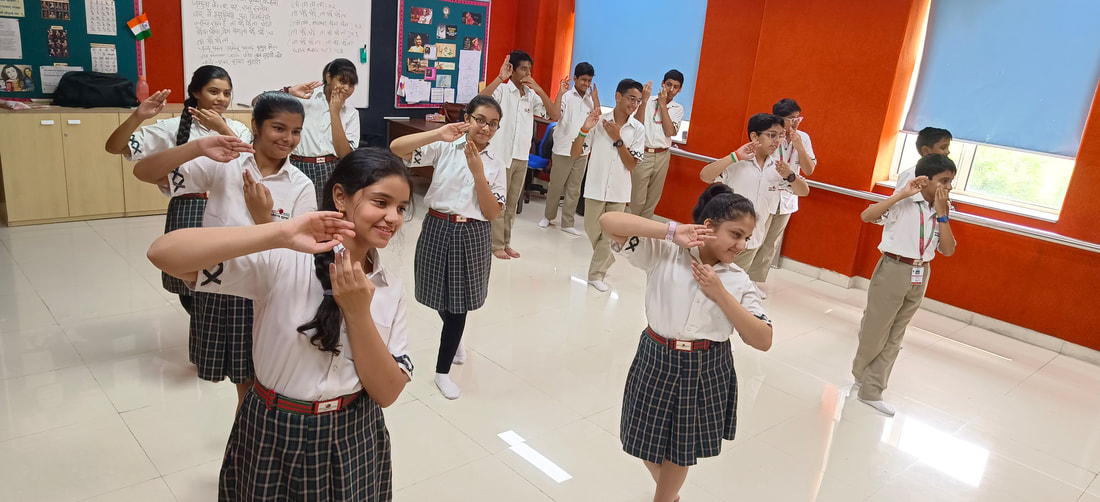 MATH Chapter - Comparing Quantities SDG 12 - Ensure sustainable consumption and production patterns. DESIGN THINKING PROJECT: The chapter was introduced by sensitizing the children towards the wastage of electricity. An activity was done wherein the students are told to bring the photocopies of electricity bills of three consecutive previous months. They were told to compare the amounts and find the ratios of the first and second bill, the second and third bill. They will also determine the percentage increase or decrease in the amounts and list the ways they will follow to prevent electricity wastage. The students will paste the fourth bill to state TARGET ACHIEVED or TARGET FAILED. INTEGRATION with ICT and S.St (Ch- Growing up as boys and girls) – The students will prepare a PPT wherein the ratio of males and females in any five states of India is shown, and the presentation will be given by the students to explain the reasons and measures to be taken to overcome gender inequalities. SDG 5 - GENDER EQUALITY SCIENCE PHYSICS Learning about the respiratory system provided students with valuable insights into how their bodies function, all while engaging in fun and hands-on activities. The month of August commenced with a brainstorming session focused on understanding the concept of respiration and why both animals and plants engage in this vital process. To provide a comprehensive understanding of the human respiratory system, the various organs involved were explained, aided by diagrams and concept maps. For additional visual aid and clarity, a relevant video link was incorporated: https://www.youtube.com/watch?v=SYT2nSNbgH4 In an effort to integrate sports and physiology, students were asked to observe and record variations in their breathing rates while performing different activities such as reading, walking, and running. This activity laid the foundation for introducing the concepts of aerobic respiration and anaerobic respiration in the muscles. To facilitate this, a PowerPoint presentation and a related video link were used: https://www.youtube.com/watch?v=04cUKimk5GA Additionally, a hands-on activity involving transparent plastic bottles, straws, and balloons was conducted, integrating art and craft elements. This activity helped students grasp the functions and importance of ribs, intercostal muscles, and the diaphragm. For further visual reference, a video link was provided: https://www.youtube.com/watch?v=fybV8zIGyu8 Students also engaged in a laboratory test using calcium hydroxide (slake lime) to detect the presence of carbon dioxide in exhaled air, seamlessly integrating chemistry into their understanding of respiration. CHEMISTRY In the pursuit of deepening their understanding of 'Acids, Bases, and Salts,' seventh-grade students engaged in experiential learning. They conducted a series of experiments in the Chemistry Lab to explore various properties of acids and bases. These experiments included observing the action of blue and red litmus solutions on acids and bases, as well as exploring the reactions of acids with metals and metal carbonates. The students meticulously recorded their observations in their notebooks, which not only reinforced their theoretical knowledge but also enhanced their practical understanding of these chemical concepts. In addition to these experiments, students also delved into the concept of neutralization reactions between acids and bases. They learned about the crucial role of phenolphthalein in these reactions, further expanding their knowledge of the topic. To complement their learning, external resources and links were provided: http://amrita.olabs.edu.in/?sub=73&brch=3&sim=6&cnt=72 https://www.youtube.com/watch?v=2uHZ4Fwjx7o https://www.youtube.com/watch?v=HWUGhGIyKG4 BIOLOGY Learning about the respiratory system provided students with valuable insights into how their bodies function, all while engaging in fun and hands-on activities. The month of August commenced with a brainstorming session focused on understanding the concept of respiration and why both animals and plants engage in this vital process. To provide a comprehensive understanding of the human respiratory system, the various organs involved were explained, aided by diagrams and concept maps. For additional visual aid and clarity, a relevant video link was incorporated: https://www.youtube.com/watch?v=SYT2nSNbgH4 In an effort to integrate sports and physiology, students were asked to observe and record variations in their breathing rates while performing different activities such as reading, walking, and running. This activity laid the foundation for introducing the concepts of aerobic respiration and anaerobic respiration in the muscles. To facilitate this, a PowerPoint presentation and a related video link were used: https://www.youtube.com/watch?v=04cUKimk5GA Additionally, a hands-on activity involving transparent plastic bottles, straws, and balloons was conducted, integrating art and craft elements. This activity helped students grasp the functions and importance of ribs, intercostal muscles, and the diaphragm. For further visual reference, a video link was provided: https://www.youtube.com/watch?v=fybV8zIGyu8 Students also engaged in a laboratory test using calcium hydroxide (slake lime) to detect the presence of carbon dioxide in exhaled air, seamlessly integrating chemistry into their understanding of respiration. SOCIAL SCIENCE HISTORY History comes alive when it's brought into the classroom in creative and engaging ways. We believe in making the study of history an exciting adventure. Recently, we took our students on a captivating journey through the Mughal Empire, and here's a glimpse of the incredible experience. Every great adventure begins with a sense of curiosity. So, we kicked off our exploration of the Mughal era by testing the prior knowledge of our students. Brainstorming questions fired up their imaginations, encouraging them to think about the Lodi dynasty and the Mughals' arrival in India. The Battle of Panipat: To transport our students to the battlefield, we screened a thrilling video on the Battle of Panipat. This immersive experience helped them connect with the historical events and ignited their curiosity. We introduced our young historians to a mind map that unraveled the timeline of significant Mughal emperors. This visual aid helped them piece together the puzzle of Mughal history. We presented a map and asked our students to identify the regions annexed by three of the most influential Mughal rulers: Babur, Akbar, and Aurangzeb. This exercise not only honed their geography skills but also provided insights into the Mughal Empire's territorial expansion. History isn't just about dates and facts; it's about the people who shaped it. Using the age-old tradition of storytelling, we delved into the struggles faced by Humayun as he endeavored to establish the Mughal Empire after Babur's passing. This narrative approach humanized history, making it relatable and engaging. To bridge the gap between history and today's world, we encouraged our students to correlate the regions they'd identified on the map with modern-day Indian states. This activity fostered a deeper understanding of how history shapes the present. As we moved forward in our journey, we delved into the challenges faced by Akbar in his early years. How did he lead conquests under the guidance of Bairam Khan? What was his relationship with the Rajputs like? These questions piqued our students' interest and inspired them to uncover historical mysteries. Akbar's reign was marked by visionary policies that reshaped the Mughal Empire. We discussed important features of Akbar's Rajput Policy, prompting students to think critically and provide examples for each feature. These discussions encouraged them to consider the impact of historical decisions. Finally, we explored Akbar's religious policies, including Din-i-Ilahi, Sulh-i-kul, and Ibadatkhana. Our students eagerly gathered information on these aspects, showcasing the rich tapestry of religious tolerance and diversity in the Mughal Empire. As the journey through Mughal history unfolded, our students shared their newfound knowledge and experiences with each other, fostering a vibrant classroom community of young historians. History isn't just about the past; it's a living, breathing story that continues to shape our world today. At [Your School Name], we're committed to igniting the spark of curiosity and nurturing the love for history in our students. Stay tuned for more exciting journeys through time! Links for reference: https://youtu.be/NAb4z_WKieM (Battle of Panipat) https://youtu.be/QdFGGqTZLo0(Mughal Rule under Akbar) CIVICS Democracy is a fundamental pillar of our society, and understanding how it works is essential for every citizen. In class 7, students embark on a journey to delve deeper into the decision-making scheme of democracy. Through a structured curriculum, they explore the roles of the Executive, Legislature, and Judiciary in governing a state, using the example of Haryana to illustrate these concepts. To initiate this exciting topic, students are introduced to a visual aid - a map of Haryana. This map serves as a valuable tool to help students understand the geographical divisions of the state and how they contribute to the formation of the governance system. Understanding the physical layout of a state is crucial as it directly impacts how the government operates. With a clear grasp of the state's division, students are encouraged to put their knowledge into practice. They draw the first level of a flowchart, representing the divisions of the State Government. This hands-on activity reinforces their understanding of the government's structure, making it easier to remember and apply later on. Next, the focus shifts to the Executive branch of government. Students delve into the powers and functions of the Governor and the Chief Minister. They learn about the Governor's role as the head of the state and the Chief Minister's responsibilities as the leader of the government. This knowledge helps students appreciate the division of powers within the Executive. A critical aspect of any democracy is its legislature. Students explore the concepts of unicameral and bicameral legislatures. They categorize states based on these concepts, helping them distinguish between those with one legislative chamber and those with two. This categorization exercise enhances their understanding of the diversity in governance structures across India. Using Haryana as a case study, students learn about the division of Vidhan Sabha (Legislative Assembly) and Vidhan Parishad (Legislative Council). They gain insight into the unique features of their state's legislature and how it contributes to the decision-making process. This hands-on application reinforces their understanding of legislative functions. Finally, students explore the functions of the Legislature, including the crucial tasks of making laws and formulating budgets. Understanding how laws are enacted and the importance of budgeting in governance helps students grasp the practical aspects of democracy and decision-making. As students progress through this curriculum, they not only gain a firm grasp of the decision-making scheme in a democracy but also become informed and engaged citizens. By using real-world examples like Haryana and interactive activities, they develop a deeper appreciation for the complexities and importance of our democratic system. These lessons will serve as a solid foundation for their future civic participation and understanding of governance. GEOGRAPHY magine a cozy blanket that wraps around our Earth, keeping it safe and warm. That's precisely what the atmosphere is – a protective layer of gases held close to our planet's surface by the force of gravity. The three main constituents of this essential "blanket" are argon, oxygen, and nitrogen. In fact, you can visualize this composition using a pie chart, which was shown in an engaging video during the lesson. The Structure of the Atmosphere: Our atmosphere is not just a uniform layer of gas. It's divided into distinct layers, each with its own unique characteristics. Let's take a closer look: - Troposphere: This is the layer closest to Earth's surface, where all our weather happens. It's where we live, breathe, and where clouds and storms form. - Stratosphere: Above the troposphere lies the stratosphere, which contains the ozone layer. The ozone layer plays a crucial role in protecting us from harmful UV rays. - Mesosphere: Going further up, we enter the mesosphere. This layer is where meteoroids burn up as they enter Earth's atmosphere, creating those mesmerizing shooting stars. - Thermosphere: Beyond the mesosphere is the thermosphere, where temperatures soar to incredibly high levels. This layer is home to the International Space Station and other satellites. - Exosphere: Lastly, we have the exosphere, which gradually fades into outer space. It's where Earth's atmosphere merges with the vacuum of space. To help visualize these layers, we used diagrams and videos that make understanding the structure of the atmosphere a breeze. Weather and Climate: Now that we've explored the layers of the atmosphere, it's time to delve into weather and climate – two concepts that are often confused. - Weather: Think of weather as the day-to-day conditions in your location. Is it sunny or rainy? Hot or cold? These are all part of the weather. - Climate: Climate, on the other hand, is the long-term average of weather patterns in a specific region. It tells us what to expect over an extended period – like seasons. To understand what influences weather and climate, we discussed four key factors: - Temperature: How hot or cold it is in a particular place and time. - Air Pressure: The weight of the atmosphere pressing down on Earth's surface, which affects weather patterns. - Wind: The movement of air masses caused by differences in temperature and pressure. - Pressure Belts and Wind Systems: We'll use diagrams to help you grasp how pressure belts and wind systems work, influencing our planet's climate. Link for reference: https://www.youtube.com/watch?v=o6i1SS4sjDA The Atmosphere ICT “Animation is not the art of drawings that move but the art of movements that are drawn.” The students learned Animate CC and revised the same through practical exercises. They learned to create objects and group them. They also completed activities based on 'frame by frame' Tween, TINT Tween, and Shape Tween. Additionally, they revised the topics for the Half-Yearly examination in class through revision sheets, including number system problems shared on MS Teams. ENGLISH Literature: In the realm of literature, students engaged deeply with the poetry of Thomas Moore, particularly focusing on the poem 'Oft, in the Stilly Night.' The class initiated discussions on the poem's title and how it encapsulated the essence of the poem. Moving forward, students meticulously analyzed the poem, exploring the various poetic devices employed by the poet and discussing their significance in enhancing the poem's meaning. RTC (Read, Think, Connect) questions related to the poem were diligently recorded in their notebooks. Grammar: Shifting to the domain of grammar, students, who were already familiar with verbs and tenses, revisited these topics. Textbook exercises related to verbs and tenses were undertaken in the classroom. Furthermore, students engaged in additional practice during class sessions and through weekend worksheets, ensuring a thorough grasp of these fundamental language concepts. HINDI सरफरोशी की तमन्ना, अब हमारे दिल में हैं ।" 1. पाठ सरफरोशी की तमन्ना के द्वारा छात्रों को स्वतंत्रता सेनानियों के बलिदान व त्याग के बारे में जानकारी दी गई जिससे उनमें देश- भक्ति की भावना का संचारहुआ विद्यालय परिसर में आयोजित स्वतंत्रता दिवस कार्यक्रम से छात्र इस पाठ से अधिक जुड सके । (नाटकीय कला से एकीकृत)सतत विकास मूल्य - 17 से संबंधित । 2. पाठ - निष्ठुर अनुकंपा के अध्ययन के बाद छात्रों को ज्ञात हो सका कि जीवन में झूठी शानों-शौकत के कारण हमें उद्यम करना नहीं छोडना चाहिए।आर्थिक तंगी से छुटकारा पाने के लिए परिश्रम करना अतिआवश्यक होता है । 3. पाठ - राखी का मूल्य अध्ययन करने के बाद छात्रों को बहन - भाई के प्यार के बारे में जानकारी प्राप्त की ।इंसानियत के नाते भी रिश्ते निभाई जा सकते हैं । 4.कविता -पहली बूँद पढने के बाद वर्षा ऋतु के बाद हरियालीआने पर जो प्रकृति सौंदर्य छा जाता है उसके बारे में छात्रों को जानकारी दी गई है । (प्रकृतिवादिता) व्याकरण -अनेकार्थी शब्द , वाक्यांश के लिए एक शब्द , श्रुतिसमभिन्नार्थक शब्द , के अभ्यास के बाद छात्रों के शब्द - भंडार में वृद्धि हुई। रचनात्मक लेखन- अनुच्छेद लेखन व अनौपचारिक पत्र के अभ्यास से सृजनात्मकता का विकास । (अंतव्यक्तिकता व तार्किकता ) " FRENCH In the month of August, our students embarked on an exploration of culture through famous paintings, deepening their understanding of artistic expression. They honed their language skills by delving into hobbies and leisure activities using verbs like "faire" and "jouer," while also mastering the usage of "voir." Additionally, our students grasped the concept of interrogative adjectives, enhancing their question-forming abilities. Lastly, they distinguished between "voilà" and "voici," refining their language precision. To reinforce their learning, students worked on workbook exercises related to lesson 4. SPANISH The month began with the students learning the difference in the use of the verbs "Ser" and "Estar," both meaning 'to be' in the English language. The learning was made easy with the help of the acronyms Doctor and Place. Exercises were done in class. The topic of food was introduced with the chapter ¿Qué comes? The students remembered some vocabulary learned in 5th grade and furthered their knowledge. Sentence formation describing food was done in class with the help of the new adjectives. The students expressed their likes and dislikes by doing Q&A on the topic. Different types of cuisines were introduced in the chapter ¿Qué te gusta comer? Famous food from Mexico, Spain, and Cuba, and their main ingredients were discussed in class. GERMAN Daily routine UM WIE VIEL UHR STEHT TINA AUF? In August, students learned how to plan for the week, asking and replying to questions about what time one engages in which activity and talking about one’s daily routines and habits. Cultural information on German cultural habits was discussed. They learned the grammar preposition usage of time and place and how to tell time formally and informally. Reading comprehension and email writing were practiced. SANSKRIT पाठ-६ व्याकरणिक नियमों को स्पष्ट करते हुए पढ़ाया गया I कुछ कक्षाएँ रक्षाबंधन और अन्य छुट्टियों के कारण बाधित हो गईं। PE Under the guidance of their respective teachers/ coaches, students learnt: Badminton: Evaluation of skills, skill demonstration by students, practice with teacher, 11 points match, Knockout matches and match playing. Gymnastics: Basic floor exercises and balancing beam activities, performed on a padded floor mat, involving a combination of forward roll, backward roll, handstand and artistic exercise, walking and balancing on the beam. Judo: Ushiro Ukemi (Backward fall), Mae Ukemi (Forward fall) Cricket: Batting Basics, Front foot defence, Backfoot defence, Bowling basics, Pace bowling, spin bowling, Fielding drills, Running between the wickets, Practice Matches to apply all the knowledge. Basketball: Shooting Layups: A fundamental shot where a player drives to the basket and shoots the ball off the backboard or into the hoop and Free Throws Football: Push pass, In step receiving the ball, Outstep Receiving and Chest pass, Kicking; Drills to teach In step, Out step, Chip shot, Short and long-distance kicking. Heading and Throwing and Defense. Swimming: Basic Strokes: Front Crawl (Freestyle), Backstroke Shooting (Grade 5 and Above): Shooting Techniques (Timed Fire), Fundamentals of the Shoot: Preparation, Aim, Breathing, Trigger control, Follow through, Scoring WESTERN DANCE May the festive vibes of Onam inspire you to embrace the goodness of life, share your blessings, and create beautiful memories with those you cherish. The new choreography started with the enthusiastic Onam dance on the occasion of Onam. Using the contemporary tools and feeling of hasya ras, students learnt an energetic South Indian folk dance. Contemporary tools give students the scope to push themselves to build their flexibility and it is one of the best calisthenic exercise. Patriotic choreography was an amalgamation of contemporary movement and folk authentic using vocals as the secondary tool. The choreography was done in modern style keeping the essence of Tollywood intact. INDIAN DANCE The right way to celebrate the occasion of Krishna Janmashtami is to embrace and follow the teachings of lord Krishna from bBhagwat Geeta.The power of Shree Krishna destroys all your sorrows, enhances your happiness, and creates goodness all around. With this thought, in August students learnt a beautiful Krishna Vandana on the song - "Shri Krishna govinda" in Kathak style along with beautiful postures, mudras and body balancing. WESTERN MUSIC Songs practised: Fight song, Sleeping child, Thousand reasons Music technology used/ taught: Music notation software which is often used for classical and notation-heavy genres that require accurate and detailed score creation, DAW (Digital Audio Workstation) which is used for capturing live recordings, composing synthetic instrument parts with MIDI, and mixing and mastering audio. INDIAN MUSIC अगस्त माह में छात्र छात्राओं द्वारा की गई गतिविधिया: गायन अभ्यास: शुद्ध स्वर अलंकार । राग,गीत - लोक गीत राग सारंग । प्रयोग हुए वाद्य: तानपूरा, ऑडियो ट्रैक । गायन तकनीक: गायन के अभ्यास की बुनियादी तकनीक, प्रतियोगिता में प्रस्तुति के महत्वपूर्ण बिंदु स्वतंत्रता दिवस पर चयनित छात्र छात्रों ने देशभक्ति गीतो एवं विद्यालय गान का प्रदर्शन विभिन वाद्यों (हारमोनियम , तबला एवं बांगो ,ड्रम्स ,गिटार ,बककेट ,टेमरिंड ,कलेप बॉक्स ,कीबोर्ड ,ढोल एवं ढोलक )के साथ किया। वाद्य - कांगो , बोंगो, बककेट ,टेमरिंड ,कलेप बॉक्स ,कीबोर्ड ,ढोल एवं ढोलकएवं तबला का प्रारंभिक परिचय , हस्तमुद्रा (तीन ताल ) एवं भजनी ठेका DRAMA Students learnt more about using their voices effectively and engaging in speech-related activities. August is the month when India celebrates its Independence. To mark this special occasion and truly grasp its significance, drama students performed a play called "Tiranga" on 15th of August. Additionally, students enacted important moments from India's struggle for independence in their classrooms. In an effort to understand the value of freedom, students also came up with improvised scenes that depicted the challenges Indians faced before gaining independence. This experience really helped them better understand and appreciate the sacrifices made by those who fought for our freedom. It is because of these valiant individuals that we enjoy our freedom today. VISUAL ART Students were introduced to Collage art with its variations like photomontage and mosaic. They used newspaper MATHLINES AND ANGLES: Building upon the prior knowledge of the students, the intricacies of lines and angles were explored. The foundation was laid by assessing the students' understanding of lines, various types of angles, and the concepts of Pair of Angles and Adjacent Angles. With consistent practice, the students began to unravel the complexities of Vertically Opposite Angles and the properties inherent in Parallel Lines. This engagement with abstract concepts transitioned into their practical applications, bridging the gap between theory and real-world scenarios. The learning journey continued as the students delved into a series of essential concepts. This encompassed a comprehensive exploration of Adjacent Angles and Linear Pair Properties, crucial for understanding the dynamics of angles. The interaction between Parallel Lines and a Transversal Line was also unraveled, offering insight into the intriguing relationship between these geometric elements. Further, the class delved into the intriguing concept of a Line Parallel to the Same Line, fostering a deep understanding of this geometric arrangement. Additionally, the sum of angles on the same side of a transversal line was meticulously covered, providing a thorough grasp of this key principle. Adding a hands-on element to their learning journey, the students engaged in an engaging activity on "Begless Day." This activity required students to create different types of angles using cutouts, not only reinforcing theoretical knowledge but also translating it into tangible practice. Students of Grade VII participated in the Inter House Mental Math competition in the month of July 2023. This competition, helped students understand their Mathematical ability, brought forth their critical thinking and problem-solving skills and agile while calculating mentally. The competition saw 3 rounds, pen-paper, online quiz on Kahoot & Quizziz, and finally the quiz itself. The final winners : 1st Place – Ashlesha Goel (Pacific House) 2nd Place – Anwesha Mishra (Atlantic House) 3rd Place – Shaurya Jerath (Indian House) SCIENCEPHYSICS: Chapter: Motion and Time In the fascinating realm of "Motion and Time," the students embarked on a journey that intertwined the intricacies of physics with the significance of time in our lives. This exploration began with a captivating empathy question, drawing the students' attention to the consequences of missing important events or the school bus by mere seconds. The ensuing class discussion served as a catalyst for sensitizing the importance of time – a concept that governs our lives. The dimension of historical integration lent a unique depth to the exploration. The students were guided through an exploration of time measurement in ancient times, with insights into instruments such as the sand clock, water clock, and sundial. This historical excursion not only enriched their understanding but also fostered a connection between science and history, highlighting the interwoven threads of human knowledge. Immersing themselves in the subject, the students were presented with the captivating "Time Estimation Activity." Through this engaging challenge, students were divided into small groups and equipped with stopwatches. Their task? To perform squats, planks, jumping jacks, and more within a one-minute timeframe. This spirited activity not only showcased their energy but also sharpened their understanding of temporal concepts through active participation. Venturing into the laboratory, the students encountered a hands-on experience with a simple pendulum. Engaging in a lab activity, they delved into the determination of time period while simultaneously acquainting themselves with essential concepts such as mean position, extreme position, amplitude, and frequency. This practical venture brought theoretical concepts to life, enabling a tactile understanding of the physics underlying motion. As the UT-I Examination drew closer, students engaged in thorough revision to fortify their grasp. Sample papers and revision worksheets served as invaluable tools for consolidation. External resource: [https://youtu.be/mjSwRwAqQA4] This external resource added a multimedia dimension to their learning journey, providing additional insights and perspectives. CHEMISRTY: Chapter: Acids, Bases and Salts In the realm of chemical exploration, the young minds embarked on a journey through the intriguing world of Acids, Bases, and Salts. The students' learning journey was crafted to align with their inherent curiosity and penchant for exploration, observation, and experimentation. Delving into the practical facets of the subject, the students engaged in a hands-on identification test. This experimental venture aimed to decipher the nature of various substances – vinegar, soap, toothpaste, chalk solution, salt solution, among others. Employing turmeric solution, as well as blue and red litmus paper as indicators, they embarked on a quest to determine whether these substances were acidic, basic, or neutral. This practical approach facilitated a tangible understanding of the concepts, fostering a connection between theory and real-world applications. The class further explored the multifaceted world of acids, delving into different types based on their origin and concentration. Guided by video tutorials, and a Think-Pair-Share model, students delved into the nuances of various acid types. Through captivating video content, they were immersed in the intricacies of different acids, ultimately collaborating in pairs to collectively classify the acids according to their distinct categories. This collaborative model not only encouraged active participation but also nurtured their analytical and classification skills. Moreover, the exploration seamlessly intertwined with broader societal implications. The students were prompted to consider the connection between their learning and the Sustainable Development Goal (SDG) of Good Health and Well-being (SDG-3). In doing so, they meticulously listed out the potential harmful effects of acids on human health, fostering a holistic understanding of the subject's relevance in real-life contexts. The learning journey extended to multimedia integration, as the students engaged with a video resource [https://www.youtube.com/watch?v=HWUGhGIyKG4]. This video further enriched their understanding, presenting information in an engaging and accessible format. In essence, the students' exploration of Acids, Bases, and Salts transcended theoretical boundaries. Through hands-on experiments, collaborative discussions, and multimedia resources, they not only grasped the subject's intricacies but also gained a profound appreciation for its real-world applications. This immersive approach nurtured their curiosity, analytical thinking, and understanding of the chemical world around them. BIOLOGY: Chapter: Nutrition In Animals In the enthralling exploration of "Nutrition In Animals," students embarked on a journey delving into the intricacies of feeding and digestion, unveiling the diverse strategies employed by organisms to sustain themselves. The journey commenced with an insightful exploration of feeding and digestion in single-celled organisms – the amoeba, paramecium, and hydra. Diagrams and flowcharts illuminated the processes, providing a visual roadmap for understanding. Armed with this understanding, students seamlessly navigated higher-order thinking questions that probed the nuances of the topic. Through introspective inquiry, they addressed questions such as whether an amoeba follows all five steps of nutrition, demonstrating their capacity for analytical thought and application of knowledge. The exploration extended to the realm of ruminants, animals with a unique digestive system. A comparison was drawn between ruminants and other animals, delving into the distinctive processes that set them apart. Class discussions heightened engagement, exploring questions like why the ruminant stomach differs and how digestion varies in these specialized creatures. Incorporating multimedia resources, the students engaged with an informative video [https://www.youtube.com/watch?v=XPGoVQW7J8U], which enriched their learning journey with dynamic visual aids. As a testament to collaborative learning, the students actively participated in crafting a detailed flowchart of the chapter. This interactive endeavor not only reinforced their grasp of the material but also nurtured their capacity for graphic representation and structured organization. Preparation for the impending UT-I Examination was executed with meticulous care. Students honed their understanding through the strategic utilization of sample papers and a Google Form assignment, a modern approach to assessment that embraces technology and innovation. SOCIAL SCIENCEHISTORY : Chapter: Delhi Sultanate 12th To 15th Century Exploring the historical tapestry of the Delhi Sultanate from the 12th to the 15th century, the students embarked on a captivating journey. The learning process was kickstarted by an engaging introductory quiz on Monuments, employing a Think-Pair-Share activity as part of a Bagless Day initiative. This interactive approach laid the groundwork for understanding the significance of the historical period. Venturing into the heart of the Delhi Sultanate's legacy, the class was presented with images of diverse monuments from this era. Prompted by these visuals, the students actively engaged in naming the sites, and intriguing legends and historical facts were woven into the narrative, further enriching their understanding. The class dived into the dynamic of power shifts within the Delhi Sultanate. Qutubuddin Aibak's ascension, succeeding Mohammed Gori's departure from India, was a pivotal moment. Guided by provided resources, the students pieced together a chronology of the various dynasties, recognizing Turkey's control over India during this era. Chronology evolved into the exploration of sultans, with students adeptly identifying the Delhi Sultanate rulers in chronological order. The role of the slave dynasty was dissected and discussed, shedding light on its influence within the historical context. The writers of the time, their works known as Tarikhs and Tawarikhs, surfaced as important voices in shaping societal ideals. This exploration revealed how these authors advocated for an ideal social order rooted in notions of birth rights and gender distinctions. Visual aids, such as maps illustrating the development of Delhi as a capital and its key cities, sparked intriguing discussions, highlighting the capital's evolution over time. The class delved into an in-depth analysis of the case of Raziya Sultan, drawing from the thoughts of Minhaj-i-Siraj. Timur's invasion, the Sayyid and Lodi dynasties, administration in the Lodi dynasty, economic and social life during that era, and a comparison of the policies of Alauddin Khilji and Muhammad Bin Tughlaq all received thorough attention. With a holistic approach, the students embraced the intricacies of the Sultanate, exploring not only the rulers but also the nobles, the army, and the Sultanate's overall structure. The process culminated in fruitful discussions and practical applications, reinforcing the understanding through question-and-answer sessions. This comprehensive journey unveiled the rich layers of history within the Delhi Sultanate, fostering an appreciation for the complexities of the past. CIVICS: Chapter: Role of Government in Health Within the realm of government's role in health, the students embarked on a comprehensive exploration, beginning with an intriguing Concept Initiation activity - Think-Pair-Share. This approach facilitated interactive engagement, sparking discussions on elements impacting individual and community health. This exploration extended to considering the capacity of both public and private sectors to provide optimal healthcare facilities, inviting contemplation on their comparative strengths. In a collaborative setting, students were organized into teams, and their task was to delineate elements with direct and indirect implications on health. This exercise broadened their perspective, considering not only personal but also communal health factors. Through thoughtful deliberation, they discerned the potential of public and private sectors in offering healthcare facilities, supporting their conclusions with well-founded reasoning. Guided by an insightful resource, the students delved into an analysis of the Indian healthcare system. This exploration uncovered both its successes and challenges, fostering an understanding of its dynamics. Practical application followed through an engaging team activity. In small groups, students were presented with different scenarios related to Indian healthcare facilities. Prompted to empathize with the scenarios, they subsequently performed skits, leveraging their creativity to convey nuanced perspectives. This activity not only encouraged enthusiastic participation but also imbued the understanding with real-world context. Through a comparative table, the students effectively distinguished between public and private healthcare facilities. This process of differentiation enhanced their grasp of the contrasting attributes of these sectors. Delving deeper, the class engaged with the unique scenario in India, where private sector services are expanding while state services lag behind. The potential drawbacks of private healthcare services were thoughtfully discussed. Importantly, the students recognized that barriers to accessing quality medical care could stem from factors beyond financial constraints. The gendered dimension emerged, as women's health concerns were sometimes overshadowed by those of male family members. The class acknowledged that certain regions, particularly tribal areas, grapple with limited healthcare infrastructure. As this exploration unfolded, the students gained a profound appreciation for the multifaceted nature of healthcare and the pivotal role government plays in shaping its accessibility and quality. This in-depth journey fostered critical thinking, empathy, and a nuanced understanding of health systems. GEOGRAPHY : Chapter: Our Changing Earth The captivating exploration of "Our Changing Earth" commenced with an intriguing question that sparked curiosity: why is North India witnessing an escalation in earthquake frequency? This query initiated an in-depth discussion aimed at unraveling the underlying reasons. To comprehend the intricate forces shaping our planet, the class turned to a visual aid – a meticulously designed flowchart. This illustration vividly delineated both endogenic and exogenic factors, shedding light on their respective impacts on Earth's dynamic processes. Navigating the mesmerizing world of volcanic phenomena, the class seamlessly integrated diagrams and videos to decode the complex process of volcano formation. The multifaceted components constituting a volcano were dissected, painting a comprehensive picture of these geological wonders. Alfred Wegener's groundbreaking theory of continental drift assumed center stage. This enlightening explanation unveiled the notion of continents in motion, setting the stage for a deeper understanding of geological transformations. Transitioning to seismic activities, the class engaged in a thoughtful discourse about earthquakes, complete with diagrammatic depictions. Key concepts like focus and epicenter were meticulously explained, along with insights into why areas nearest to the epicenter experience the most severe damage. The class also explored the phenomenon of an earthquake's strength diminishing as one moves away from its center. To promote preparedness, a class earthquake drill was executed, during which safety measures were deliberated. In a bid to clarify the two primary processes shaping Earth's landscape, a comparative table was employed. This table provided a comprehensive contrast between the processes of weathering and erosion, and deposition, illustrating how the Earth's surface undergoes continual transformation. Continuing their journey, the class embarked on an exploration of primary landforms and their distinguishing attributes. Employing visual aids such as pictures and diagrams, the intricate workings of river systems were illuminated. Concepts like waterfalls, meanders, oxbow lakes, floodplains, levees, and deltas were explored, granting a comprehensive understanding of their formation. To enhance the understanding of a river's journey, a video was introduced. This multimedia tool not only enriched comprehension but also brought the intricate processes to life. Video Link: [https://youtu.be/Sv16XOnNKeU] ICT"The modern technology surrounding us is entirely based on the 'Number System.' Computers represent all kinds of information and data - be it audio, videos, images, and more - using binary numbers. In their ICT classes, the students embarked on a fascinating journey into the realm of Number Systems. They delved into various numeric bases, including Decimal, Binary, Octal, and Hexadecimal systems. This exploration extended to mastering the art of conversions, such as Decimal to Binary, Binary to Decimal, Octal to Decimal, and Hexadecimal to Decimal. Equipped with this foundational understanding, the students also ventured into the arithmetical calculations of Binary numbers. This intricate exercise honed their analytical skills and showcased the versatility of numeric systems. Throughout this learning process, the students experienced a profound engagement with the concept of the Number System. Recognizing its pivotal role, they uncovered how the Number System forms the bedrock of computer functionality. The ability to seamlessly convert between different bases not only facilitates communication between computers and users but also underscores the importance of data comprehension. As the students embraced this journey, they gained a deeper appreciation for the Number System's integral role in shaping the modern technological landscape." ENGLISHAs the echoes of summer break faded, students re-entered the school corridors infused with renewed enthusiasm and boundless energy. A poetic journey commenced with the exploration of 'A Song from the Suds.' Within its verses, students unearthed a profound lesson - the importance of valuing every task, regardless of its magnitude. This resonant theme served as a poignant reminder to stay productive and to deflect negativity from the mind's realm. Diving deeper into their literary voyage, the students delved into the units 'Idgah' and 'Mowgli, the Wolf Child.' These literary landscapes captured their attention, enveloping them in tales that mingled with their imaginations. The pages of 'Idgah' bore witness to a Design Thinking endeavour, wherein the students donned the cap of problem solvers. Immersed in empathy, they sought innovative solutions for the quandaries faced by Amena and Hamid, weaving their own creative narratives into the fabric of the story. 'Mowgli, the Wolf Child' ignited a nostalgic reverie, transporting the students to the enchanting world of 'The Jungle Book.' These pages awakened echoes of beloved childhood animation movies, intertwining literature with cherished memories. The journey's culmination embraced the consolidation of written work, as the students meticulously transcribed their insights into their English notebooks. This reflective practice not only solidified their comprehension but also fostered a sense of accomplishment. In the realm of grammar, the past was revisited with the meticulous review of previous concepts - Verbs and Tenses. This revisitation served as a scaffold, strengthening their grammatical foundation and paving the way for future linguistic endeavors. HINDIशिक्षा जीवन का आधार '' पुस्तक गुंजन - 'पहली बूँद' कविता वाचन किया गया । छात्रों के शब्द - भंडार में वृद्धि हुई। प्रकृति को बचाने के नए-नए उपाय सुझाए गए । धरा पर जब पहली बूँद गिरती हैं तब प्रकृति मेंंआए परिवर्तनों को बारे में जानकारी प्राप्त की गई जिससे छात्रों को भारत की ऋतुओं का ज्ञान हुआ । बहुगुणी प्रतिभा - प्रकृतिवादिता । सतत विकास लक्ष्य -4 से संबंधित । पाठ-'राखी का मूल्य' के अध्ययन नाटकीयपूर्ण शैली में किया गया जिससे छात्रों को भाई-बहन के इस पवित्र रिश्तें से जुडी ऐतिहासिक घटना का ज्ञान हो सका जिससे बच्चों के अंतर्मन में मानवीय -रिश्तों व प्रेम का भाव उत्पन्न हुआ । सतत विकास लक्ष्य -17 से संबंधित , इतिहास विषय से एकीकृत । व्याकरण - पाठ लिंग व वचन के परिवर्तन के नियम से छात्रों के शब्दकोश में वृद्धि हुई। (ज्ञान - अवबोध व अनुप्रयोग कौशल ) रचनात्मक लेखन - चित्र वर्णन के द्वारा छात्रों की कल्पना शक्ति को विकसित किया गया। इकाई परीक्षा के अभ्यास हेतु दो कक्षा - परीक्षा आयोजित की गई । इकाई परीक्षा की जाचँ की गई । अंतर्सदनीय आशुभाषण प्रतियोगिताके आयोजन से छात्रों के आत्मविश्वास में वृद्धि हुई । FRENCHAs the summer break concluded, our students reentered school with a fresh wave of enthusiasm and a fervor for learning. To kickstart the academic year, the revision process for the upcoming Unit Test 1 was initiated, facilitated by a comprehensive worksheet that ensured a comprehensive review of key concepts. Grammar took center stage as the topic of adjectives was introduced. With meticulous guidance, the students delved into the feminine and plural forms of adjectives. Through this exploration, they gained an adept understanding of how to adapt adjectives to align with gender and number. This linguistic journey extended to comprehending the fundamental rules governing the formation of plural nouns, adding a layer of depth to their grammatical skills. Shaping their linguistic proficiency further, the students ventured into the 2nd group of French verbs. This comprehensive study encompassed thorough explanations and supported examples, fostering a solid foundation in verb conjugation. To bolster their mastery, both textbook exercises and workbook exercises were diligently pursued. This multifaceted approach aimed to ensure a comprehensive grasp of the subject matter, facilitating theoretical understanding as well as practical application. SPANISHThroughout this month, the students embarked on an exploration of renowned personalities hailing from Spain and Latin America. This voyage into cultural icons enriched their understanding of diverse backgrounds. To ensure a well-rounded grasp, a comprehensive revision worksheet was shared via Teams and subsequently discussed within the classroom setting. Adding a linguistic dimension to their journey, the class delved into the art of composing a Thank You letter in Spanish. The students relished the experience of crafting their own letters, merging linguistic skills with genuine gratitude. The class further honed their language skills by engaging in letter reading exercises. These exercises not only reinforced their understanding of intonation and pronunciation but also fostered effective communication techniques. As their linguistic journey unfolded, the class revisited the essential concept of verb conjugation. Specifically, they refreshed their memory regarding the verbs "Ser" and "Estar." The multifaceted uses of these two verbs were uncovered, guided by the clever acronym "Doctor" and "Place." This mnemonic served as a tool to navigate the nuanced differences in their applications. GERMANThe month began with the discussion of School themes like ¨Eating at school and School bag articles. This was followed by the conjugations of modal verbs "mögen (to like)" and "möchten (would like to)". In addition to this, the students learned to name their school supplies along with their singular and plural forms. The definite, indefinite and negative articles in nominative and accusative case further helped them understand the subject and direct object case and understand the sentence structure and articles used with accusative verbs like "haben(to have)", "suchen (to search)", "finden (to find)" etc. The students then did a role play about the school supplies they had in their pencil box. SANSKRITपाठ-३, पाठ-४ और पाठ-५ व्याकरणिक नियमों को स्पष्ट करते हुए पढ़ाया गया I इसके अन्तर्गत लङ् लकार – मध्यमः पुरुषः और उत्तमः पुरुषः को स्पष्ट किया गया। लोट् लकारः के प्रयोग को आज्ञा, प्रार्थना और विनती के अर्थ में कैसे प्रयोग किया जाए के तरीके को स्पष्ट किया गया। PHYSICAL EDUCATIONBadminton: Racket swing, underarm swing Gymnastics: Basic gymnastics terminology Judo: Forward roll, backward roll Cricket: Basics of cricket – objectives, equipments Basketball: Dribbling – right-hand, left-hand dribble Football: Dribbling – Shots taps, long taps Swimming: Introduction to the pool and its surroundings, basic water safety rules and floating on front and back Shooting (Grade 5 and Above): Introduction to Air Pistol Shooting (Fundamentals and Safety), weapon introduction / safety procedures and range commands WESTREN DANCEWe salute the brave soldiers who protect our nation’s freedom with their courage and dedication. The new choreography started with the enthusiastic patriotic dance on the occasion of independence day. Using the contemporary tools and feeling of veer ras, students learnt a patriotic dance. Contemporary tools give students the scope to push themselves to build their flexibility and it is one of the best calisthenic exercise. Patriotic choreography was an amalgamation of movement and theatre using vocals as the secondary tool . The choreography was done in modern style keeping the essence of patriotism intact. INDIAN DANCE“Everybody is talented because everybody who is human has something to express.” Nine Emotions included in Navarasa are Shringara (love), Hasya(laughter), Karuna(kind-heartedness or compassion), Raudra (anger), Veera (courage), Bhayanak (terror), Veebhatsya (disgust), Adbutha (surprise) and Shanta (peace or tranquility). Students enjoyed learning "Navras-Nine emotions". They also practised patriotic dance moves on "Bharat humko jaan se pyaara hai". WESTREN MUSICStudents learnt different types of software such as DAW for mixing or producing music. Technology has changed how people create music. Students have the possibility of becoming composers and produce film scores from their home studios. INDIAN MUSICजुलाई माह में छात्र छात्राओं द्वारा की गई गतिविधिया: गायन अभ्यास: शुद्ध स्वर अलंकार । राग,गीत - लोक गीत राग सारंग । प्रयोग हुए वाद्य: तानपूरा, ऑडियो ट्रैक । गायन तकनीक: गायन के अभ्यास की बुनियादी तकनीक, प्रतियोगिता में प्रस्तुति के महत्वपूर्ण बिंदु अंतर सदनीय देशभक्ति गीत प्रतियोगिता मे चयनित छात्र छात्रों ने देशभक्ति गीतो का प्रदर्शन किया वाद्य - कांगो , बोंगो एवं तबला का प्रारंभिक परिचय , हस्तमुद्रा (तीन ताल ) एवं भजनी ठेका DRAMAFrom enunciating intricate tongue twisters to crafting characters with distinct speech patterns, our journey through voice and speech was both entertaining and enlightening. Students embarked on a quest to master the art of voice throw, exploring the nuances of projection and resonance. They honed their skills in controlling voice pitch, using it as a powerful tool to express a wide range of emotions and personalities. Through captivating exercises, students not only polished their vocal abilities but also cultivated self-confidence and effective communication. As July unfolded, students discovered that the magic of drama lies not only in the scripts and performances but also in the mastery of voice – a skill that resonates far beyond the stage, enriching our daily lives. VISUAL ARTStudents completed the landscapes using a beautiful colour palette. Students were introduced to collage, photomontage and mosaic art. They finished the first round of Inter-House Art Competition with great enthusiasm.
MATHSChapter :Integers The introduction of the topic began with an interactive discussion of the prior knowledge of the concept: -Natural numbers -Whole numbers The real life examples from day-to-day lives are quoted to provide a conceptual understanding of the mathematical operations of integers. Varied properties of Integers that makes the topic interesting for the students were explained via examples. -Closure -Commutative -Associative -Additive identity -Multiplicative inverse -Property of '0' and '1' A group activity called The Puzzle game was played by all the students to recapitulate the concept through a fun-filled interactive session. Chapter: Fractions and Decimals The chapter was introduced by integrating the concept with art, representing fractions in pictorial form to enhance clarity. Building on prior knowledge of fractions, students understood the following concepts: -Multiplication of fraction by a fraction. -Division of fractions -Division of whole number by a fraction -Reciprocal of a fraction -Division of fraction by a whole number -Division of fraction by a fraction -Multiplication of decimal numbers with 10,100 and 1000. -Division of Decimal numbers with 10,100 and 1000. -Division of decimal number with another decimal number. An activity called "The Fraction Forest" was explained to the students to provide better clarity of the concept. The students actively participated in the discussion and gave their suggestions. They were able to relate the concept to things around them. Chapter: Data Handling The chapter was introduced through an interactive discussion with the students. The meaning of data, types of data, methods of collection, organization, representation, and interpretation were discussed in detail. The measures of central tendency (mean, mode, and median) were also explained. All the students actively participated in the discussion and were able to understand the relevance of the chapter in various fields of the economy. They were able to understand and apply different methods of dealing with and handling abstractions. A video link was shared for further reference. Link: https://www.youtube.com/watch?v=8YowOaVt8kk&feature=youtu.be ENGLISH"Every moment is a fresh beginning.” — T. S. Eliot Literature: An environmentally relevant topic was taken up in the form of the poem ‘Tigers Forever’. The poem was discussed in class and students contributed their own interpretation of the poem. The change of tone was discussed in detail highlighting the poet’s sensitivity towards nature being portrayed in a lively yet sarcastic tone. The theme of the poem was in sync with SDG 15: Life on Land. Later, the students organized a rally on 'Saving the Tigers' in the school premises. They exhibited their slogans enthusiastically throughout. After an initial journey into poetry, the students ventured into prose through a humorous short story ‘The Magic Bonbons’. They thoroughly enjoyed the discussion and the turn of events in the story which fed their imaginative minds. The technique of predictive reading was applied where the students were asked to guess what would happen next. Students also read the play 'The Seven Cream Jugs' by Saki in a dramatic manner. They tried enacting various scenes from the play in groups. Consolidated written work was done in their English notebooks. Grammar: Two grammar topics were taught in the class beginning with ‘Sentences and Phrases’ and 'Articles’. Teaching of the topics was built upon the prior knowledge of the students who actively contributed to the class discussion. Identification of the types of sentences and phrases, adding question tags and conversion of sentences were brought into focus in the initial classes. Acknowledging the sound of the initial letters was emphasized upon to discern the use of a/an. Rules for use of the definite article ‘the’ and the ‘zero article’ were reiterated. Reinforcement of the two grammar topics was done through grammar book exercises. Writing: The format of a formal letter (application to the principal) was discussed in class explaining the tripartite structure of the letter's body. Topics were given for class practice, and the students were also provide with a checklist to ensure they included all the elements of the format in their letter. Timely revision of the syllabus for the first unit test was done in class as well as through practice worksheets. SOCIAL SCIENCEHistory Chapter: Tracing Changes Through a Thousand Years The students of Grade VII were excited to start their journey into the Medieval Period of History. The important sources of Medieval History were discussed, and an activity was given to compare the maps made by Al Idrisi and a French Cartographer. The various terminologies, changes, developments, discoveries, and the advent of new religions in the Medieval period were explained in detail. The students concluded that the Medieval period of History was a time of significant developments in all spheres of life. Chapter: New Kings and Kingdoms The students were introduced to the mighty kingdoms of the South. The extent of important kingdoms and their capitals were explained with the help of a map. The role of Samantas and the tripartite struggle for Kannauj, as well as the Prashastis, were discussed. The mighty Chola Empire, its administration, agriculture, irrigation, army, navy, and revenue system were discussed in detail. The students compared the administration of the Chola Empire to present-day administration. A revision worksheet was solved in class, and a class test was conducted. Civics Chapter: On Equality The class began with the question, "Is Equality the same as Equity?" The students understood that some sections of society require special rights and privileges. The various constitutional provisions for Equality were discussed, and the students were asked to research the various Articles related to Equality in the Constitution. The challenges to Equality in India were also discussed, emphasizing that a change in people's attitudes is the first step towards Equality. The students also presented a Case Study on Rosa Parks and B.R. Ambedkar. Civics A revision worksheet was solved in class. Chapter: Role of the Government in Health The students were asked to note down the important role played by the government. They differentiated between private healthcare and public healthcare in India. Geography Chapter: Environment The students were asked to observe their surroundings and note down what they see. Then, they were asked to classify these things as Natural, Human-made, or Human. The various components of the Environment were explained using a flow chart. The students went on a Nature Walk where they classified the biotic and abiotic components of the Environment. Various environmental issues were also discussed, with a focus on SDG 15: Life on Land. Chapter: Inside the Earth The different layers of the Earth were discussed, and the students were asked to prepare a comparative table on the different layers of the Earth. The different types of rocks were discussed, and the students presented an excellent role-play depicting the origin and importance of these rocks. The students were elated to learn about the Rock Cycle and the importance of rocks and minerals in our daily lives. A revision worksheet and an MS Form revision was shared for UT-1 revision. SCIENCEBIOLOGY Chapter: Nutrition in Plants The chapter was thoroughly revised using quizzes and worksheets in preparation for the UT Assessments. Additionally, in the Biology Lab, students conducted the Starch Test using iodine to observe the blue-black color formed when iodine reacts with starch. This activity greatly enhanced the students' conceptual knowledge of the topic. Since the students have already studied the organs of the digestive system and their basic functions, a KWL activity was conducted to recall their prior knowledge about the topic. This activity allowed students to individually reflect on the topic and share their ideas with classmates. The topic was further elaborated by explaining each step of digestion and providing detailed information about the function of each organ involved in the system. External resource: Video link: https://www.youtube.com/watch?v=ZiuVy3X6JKI PHYSICS Chapter - Heat The prior knowledge of the students about heat was recalled through discussions about real-life situations, such as the sensation of coldness when touching ice cubes, the feeling of hotness when sitting next to fire or in sunlight, and the production of heat when rubbing hands. After the discussion, the students arrived at a definition of heat. They created a Venn diagram to compare the similarities and differences between heat and temperature. Through interactive discussions, they developed an understanding of the meaning and significance of the terms heat and temperature. Furthermore, the students learned about various units of heat and the conversion method from calories to joules and vice versa. They were able to perform the conversions from joules to calories independently. They were also asked to think about the movement of atoms and molecules as they are heated and to draw the motion of molecules in a gas, liquid, and solid. The students enjoyed drawing the intermolecular arrangement of molecules in solids, liquids, and gases. The various changes that occur during heating were discussed, such as the cooking of food, boiling of water, and other temperature-related changes. The students concluded that heat causes changes in temperature, changes of state, expansion, and chemical reactions. Additionally, a lab activity was conducted in the Physics lab where the students observed thermal expansion in solids, liquids, and gases. They were shown clinical and laboratory thermometers and were taught how to read them.External resources:https://youtu.be/JShQ30q3sIU https://youtu.be/9UtfegG4DU8 https://youtu.be/YIeWTdzcbxg The concept of heat transfer was introduced to the students through an activity where they learned about conduction, convection, and radiation. The activity focused on hands-on learning, allowing students to actively participate and engage with the topic. Furthermore, the students performed various lab activities related to conduction and convection, enhancing their understanding of heat transfer. They also learned about the uses of good and bad conductors of heat and were able to relate the practical applications of different modes of heat transfer to everyday life. External resource: Video link: https://youtu.be/dJqKSElcPvs CHEMISTRY Basic Concepts of Chemistry: The students built upon their learning of the basic concepts of chemistry by understanding terms such as atom, element, compound, and mixture. They learned the different symbols of elements and reinforced their knowledge through a Chemistry Gossip Worksheet. The concept of ions and valency was introduced to derive the chemical formula of compounds. To recapitulate the chemical formula of important chemical compounds in a fun way, the students played a game called "Chembola." They thoroughly enjoyed the game. Additionally, they learned how to convert a word equation into a chemical equation and understood the concept of balancing a chemical equation. The students furthered their understanding of physical and chemical changes by differentiating the properties of the original substances (reactants) from the properties of the newly formed substance (product) after a chemical reaction. They engaged in brainstorming sessions to explore the reasons why a chemical change is referred to as a chemical reaction. Additionally, the students learned about the process of crystallization and the phenomenon of rusting of iron. They were able to relate the topic of iron rusting to real-life examples, such as the rusting of objects like gates, almirahs, and bicycle chains made of iron. External resource: Video link: https://www.youtube.com/watch?v=epDGHnwaVJY ICT"The best tool available today for exploring real-life questions of quantity and change is the spreadsheet." Students learned the Excel software in their ICT classes. They learned different features such as form, sorting, filtering, advanced filter, data validation, subtotal, and pivot table. During the session, they conducted research work based on different types of wastage and prepared a spreadsheet. They understood the importance of saving natural resources and avoiding unnecessary wastage. They tried to find different ways to achieve SDG-12: Responsible Consumption and Production. They also learned advanced features of Excel software. They understood the importance of charts by researching newspaper articles containing charts and graphs. HINDIसत्र की प्रथम कक्षा काआरंभ एक गतिविधि से किया गया जिसमें कक्षा में राष्ट्रगान व गायत्री मंत्र का मौखिक व लिखित अभ्यास कराया गया,जिससे छात्रों को राष्ट्र गान का अर्थ समझ आया व उनकेहृदय में देश के प्रति भक्ति भावना का संचार हुआ। व्याकरणपाठ -1 भाषा,लिपि,बोली और व्याकरण का पठन किया गया । छात्रों ने विभिन्न प्रकार की भाषाओं व उनकी लिपियों के बारे में जाना । बोली का अर्थ व महत्व समझते हुए छात्रों ने अपने-अपने क्षेत्रों की बोलियों के बारे में बताया जिससे छात्रों के भाषाविकास में वृद्धि हो सकी। व्याकरणपाठ-2 वर्ण-विचार में छात्रों ने वर्णमाला व इसके भेद को जाना। वर्णों के उच्चारण स्थान को समझते हुए उचित प्रकार से वर्ण-विच्छेद करने में सफल हो सके।छात्रो ने अपनी-अपनी तरफ से नए-नए शब्द दिए व उनका वर्ण-विच्छेद भी किया जिनसे छात्रों के ज्ञान मे वृद्धि हो सकी। गुंजन पाठ्य पुस्तक पाठ-1 'कवितानदी' का वाचन किया गया ।नदी को माध्य्म बनाकर छात्रों को जीवन- संघर्ष के बारे में बताया गया । जिस प्रकार नदी बहती रहती हैं उसी प्रकार मनुष्य को भी आगे बढते रहना चाहिए। देशोंकी उन्नति व अवनति किस प्रकार नदी पर निर्भर है , छात्रों ने अपने-अपने विचार बताए व पानी का संरक्षण कैसे किया जाना चाहिए विषय पर चर्चा की गई। पढाए गए सभी पाठों का लिखित अभ्यास कार्य कार्यपुस्तिका व पुस्तक में करवाया गया व जाँच की गई। रचनात्मक लेखन गतिविधि- मानव क्रियाओं द्वारा धरती पर होने वाले परिवर्तनों से होने वाले हानिकारक प्रभावों के प्रति छात्रों को जागरूक करने हेतु कक्षा में पृथ्वी दिवस' पर नारा लेखन गतिविधि की करवाई गई । इससे छात्रों ने अपनी धरती को साफ , सुंदर व स्वच्छ बनाने के लिए नए - नए तरीके सीखे । SANSKRITवर्णपरिचय: के अन्तर्गत वर्णविच्छेद-वर्णसंयोग कराया गया I शब्दरुप- अकारांत – आकारांत तथा सर्वनाम शब्दरुप- तत् , एतत् , किम् , अस्मद् और युष्मद् का विस्तार से विवेचन किया गया I धातुरुप के अन्तर्गत विभिन्न लकारों का प्रयोग लट् , लृट् तथा लङ्लकार की सहायता से स्पष्ट किया गया I पाठ १- वार्तालापः-(गद्यांशावबोधन) व्याकरणिक नियमों को स्पष्ट करते हुए पढ़ाया गया I FRENCHThe new session started off with a warm welcome to the new students who joined the class, allowing each student to share a little about themselves and get to know their classmates. After the introductions, the students actively participated in the discussion and collectively agreed upon the essential agreements. These agreements outlined the expectations and guidelines for behavior in the classroom, promoting mutual respect, active participation, and a conducive learning environment. As a recap, the class revisited 'er' verbs, with a special focus on the verb 'aller' (to go). The concept of time was also explained in detail. The students learned how to express time in different ways, including telling the time on a clock. Additionally, the class delved into numbers from 61 to 1000. The students learned how to read, write, and pronounce these numbers in French. To consolidate their understanding of the topics covered, the students completed exercises from their textbook and workbook. Throughout these activities, the students had the opportunity to engage in interactive discussions, reinforce their language skills, and expand their knowledge of verbs, time, and numbers in French. In May, students focused on improving their understanding of the topics by reading the textbook. The grammar topic of contracted articles was introduced, along with examples. To review the previous month's topic of modes of transport, an activity was completed in the notebook. Additionally, students were introduced to places to visit to reinforce their understanding of contracted articles. They also worked on workbook exercises for Lesson 1. GERMANIn April and May, students focused on the SDG of "Avoiding Food Wastage" and engaged with a German news report. During this period, they learned and practiced the following skills: Using grammar to form sentences in the present tense with verbs "essen" (to eat) and "trinken" (to drink). Engaging in conversations with peers by asking about their eating habits and responding accordingly. Expanding their vocabulary related to food and drinks. Using the verb "möchten" (would like) to inquire about peers' preferences and expressing their own preferences and dislikes. Utilizing negative articles (nominative and accusative) and constructing negative sentences to decline offers for food and drinks, providing reasons for their decisions. Requesting alternatives and practicing the ability to purchase food and drinks at a canteen. Throughout these activities, students actively worked towards developing their language proficiency while also addressing the important issue of food wastage in line with the SDG goals. SPANISHThe session began with a game called "Taco Tuesday," in which the students had to identify conjugations of regular verbs in the present tense. Alongside, they revised Q.A. (question and answer) related to basic information and physical descriptions using the chapter "Son muy famosos." Additionally, the students conducted research on a famous Spanish personality and prepared a paragraph about them. In class, comparisons and superlative sentences were introduced using the chapter "Soy el más inteligente de la clase." The students also discussed SDG 5, which focuses on gender equality. They watched a video that sparked a debate about the role of women in society. Here are the sources used: "20 Personajes Españoles Famosos" (https://hispania-valencia.com/blog/20-personajes-espanoles-famosos/) "Gender Equality - Sustainable Development Goal 5" (https://www.un.org/sustainabledevelopment/blog/2019/03/gender-equality-sustainable-development-goal-5/) Through these activities, the students not only practiced their language skills but also engaged in discussions on important topics such as gender equality and the influence of famous personalities in Spanish culture. In this month, students learned comparison and superlative sentences. Demonstrative pronouns were introduced with the chapter "Mucho gusto" (Nice to meet you). The class learned how to introduce a friend to a family. A role play on the same was performed in class. PHYSICAL EDUCATIONBadminton: Racket swing, underarm swing Gymnastics: Basic gymnastics terminology Judo: Forward roll, backward roll Cricket: Basics of cricket – objectives, equipments Basketball: Dribbling – right-hand, left-hand dribble Football: Dribbling – Shots taps, long taps Swimming: Introduction to the pool and its surroundings, basic water safety rules and floating on front and back Shooting (Grade 5 and Above): Introduction to Air Pistol Shooting (Fundamentals and Safety), weapon introduction / safety procedures and range commands WESTERN DANCEThe new session started with the enthusiastic Bhangra dance on the occasion of Baisakhi festival. Bhangra being one of the most energetic dance forms, it gives students the scope to push themselves to built their stamina and it is one of the best calisthenic exercise. Bhangra choreography was an amalgamation of rhythmic footwork and broad hand movements. The choreography was done in modern Bhangra style keeping the essence of the folk element intact. INDIAN DANCEThe power of Deva Shree Ganesha destroys all your sorrows, enhances your happiness, and creates goodness all around you. Lord Ganesha blesses you with worldly bounties, keeps you protected from obstacles at all times, with this thought we at Suncity started the new session with a beautiful Ganesh Vandana - "Ganesh Raja" by Kailash Kher. Along with Kathak basics students learnt beautiful postures, mudras and body balancing in Kathak dance style. INDIAN MUSICअप्रैल - मई माह में छात्र छात्राओं द्वारा की गई गतिविधिया: गायन अभ्यास: शुद्ध स्वर अलंकार । राग,गीत - लोक गीत माएरी । प्रयोग हुए वाद्य: तानपूरा, ऑडियो ट्रैक । गायन तकनीक: गायन के अभ्यास की बुनियादी तकनीक, प्रतियोगिता में प्रस्तुति के महत्वपूर्ण बिंदु इंवेस्टीचर कार्यक्रम मे चयनित छात्र छात्रों ने राग केदार मे कृष्णा गीत का प्रदर्शन किया वाद्य - कांगो , बोंगो एवं तबला का प्रारंभिक परिचय , हस्तमुद्रा (तीन ताल ) एवं भजनी ठेका WESTERN MUSICStudents explored different instruments and practised different ways to play an instrument with time signature, meter, tempo, syncopation, accents, vocal pitch practice in different pitch and recognizing different pitches. The song practised was : "Sleeping child" DRAMAThe new session started with great enthusiasm, and with the creative introduction and ice-breaking activities for the students. Students were acquainted to some focus and concentration activities to improve their attentiveness. In the month of May, the students were introduced to two very important tools of drama: Observation and Imagination. Observation is a crucial trigger for imagination. It helps actors and students become more aware of their surroundings and notice even the smallest details. Furthermore, it develops their sense memory data bank, enhances the power of imagination, and ultimately enables them to convincingly create and transform into a character from a script. Activities such as sound observation, animal observation, and observation of human behavior in different situations have improved the observation and imagination skills of the students. Imagination, being a powerful brain-booster, allows individuals to think in unconventional ways. It can help in finding solutions and enables the creation of scenarios that effectively solve problems. VISUAL ARTSStudents were introduced to a river landscape. Discussion was held on one point perspective study for creating landscape. Students learnt to use poster colours for landscape drawing. LIFE SKILLSIn a month dedicated to self-reflection, students embarked on a creative journey of introspection and self-discovery. Through a unique activity called the 'Me-Tree,' students had the opportunity to visually represent their reflections on various aspects of their lives. By tracing their hand on a piece of paper and transforming it into a vibrant tree, they explored their support systems, expressed gratitude, and celebrated their unique qualities and passions.
|
Class TeachersVartika Frank, VII-A Archives
May 2024
Categories |







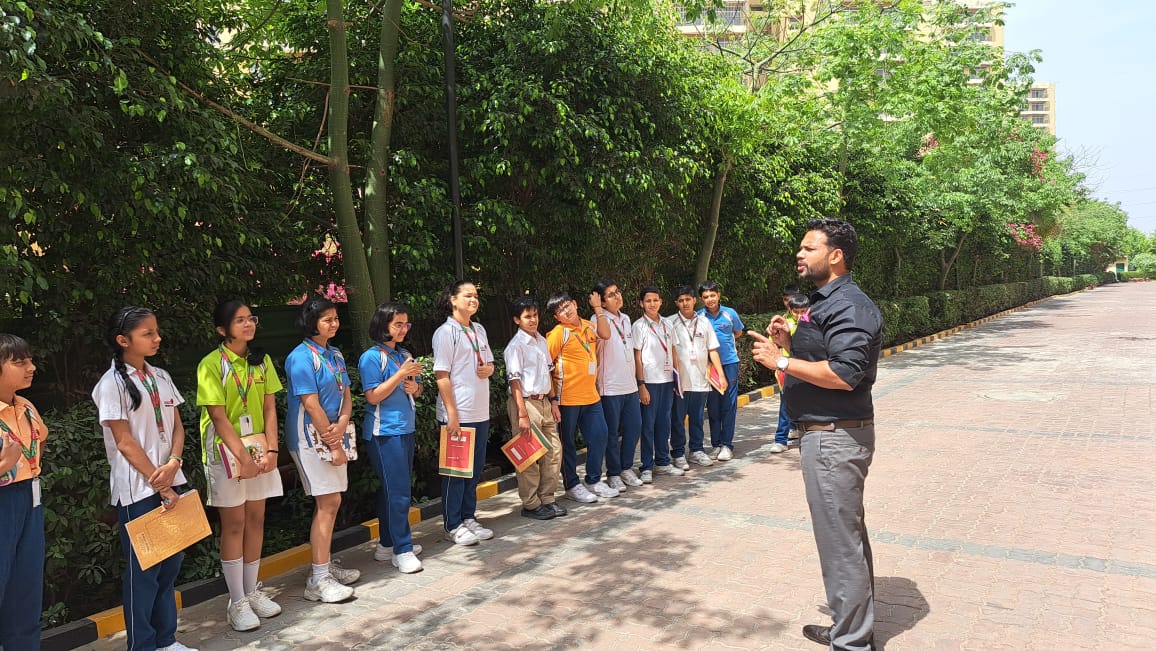
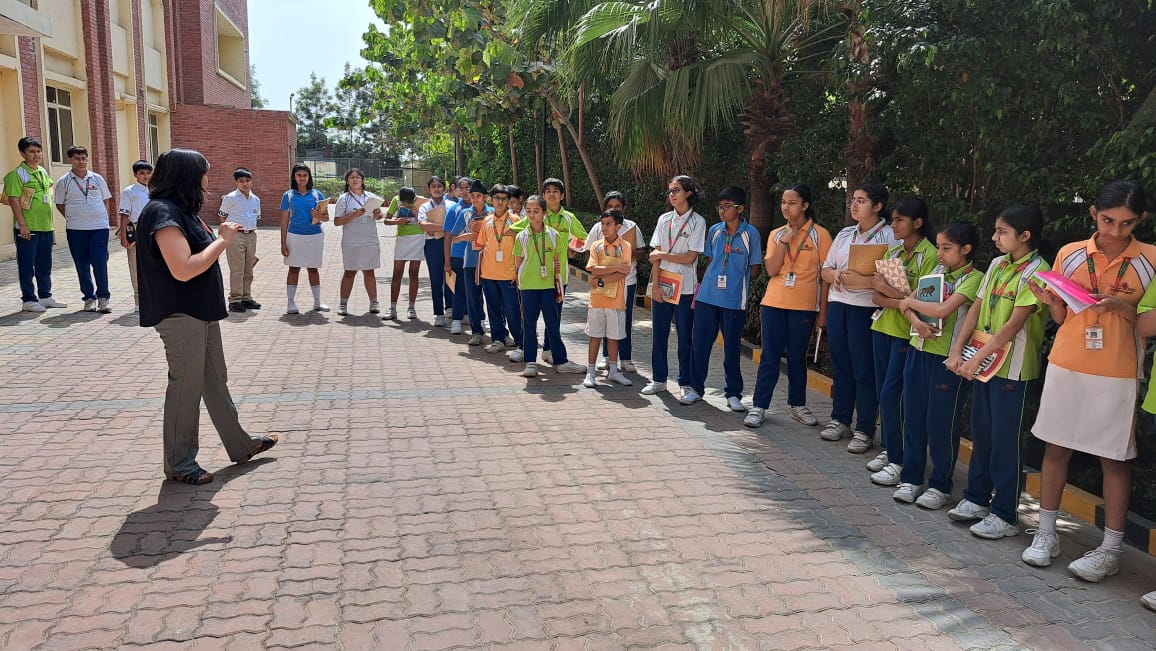



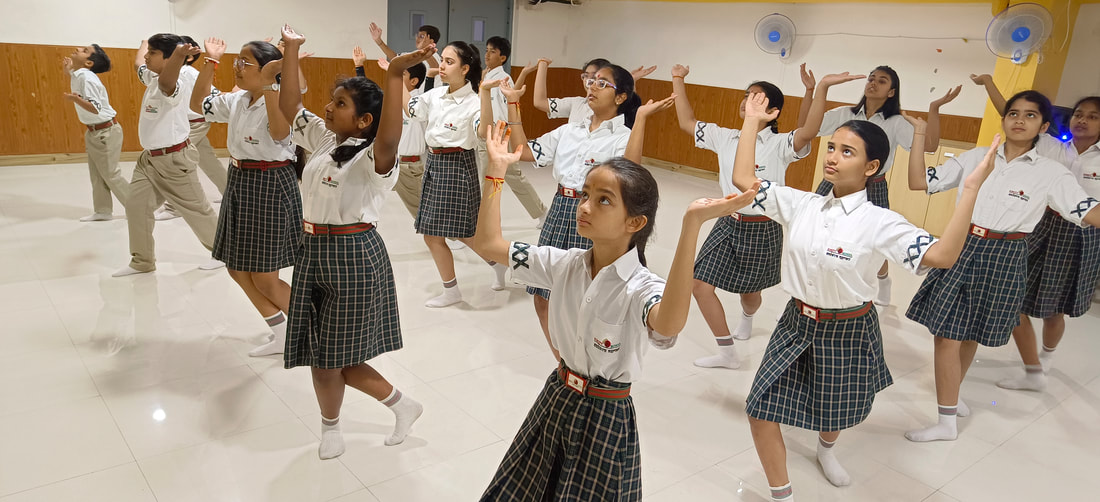
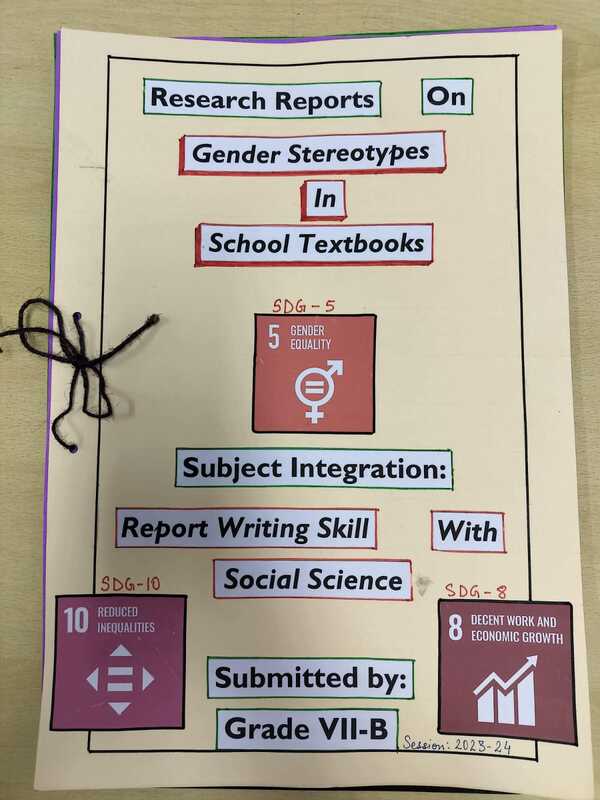
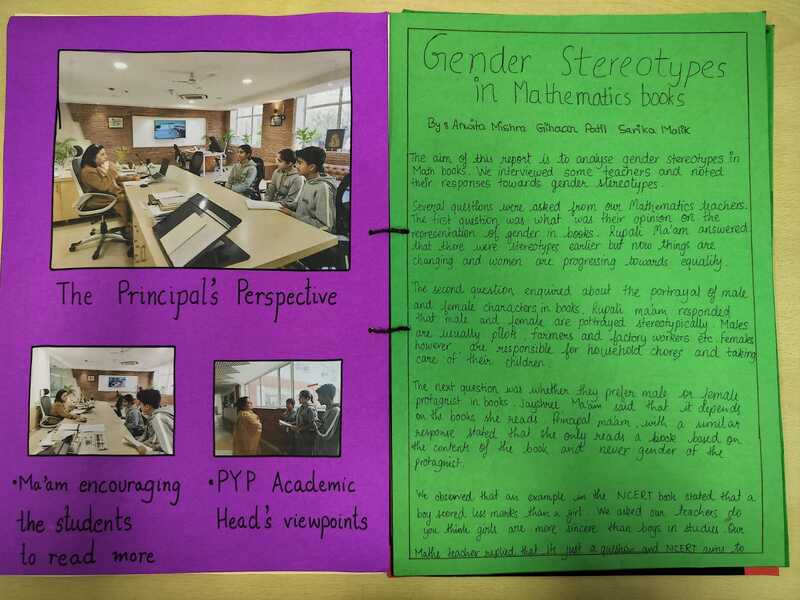
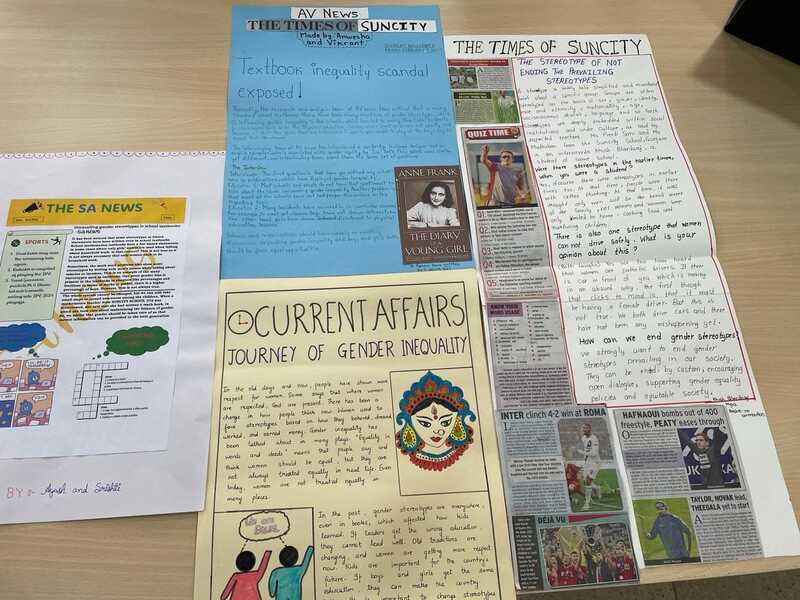
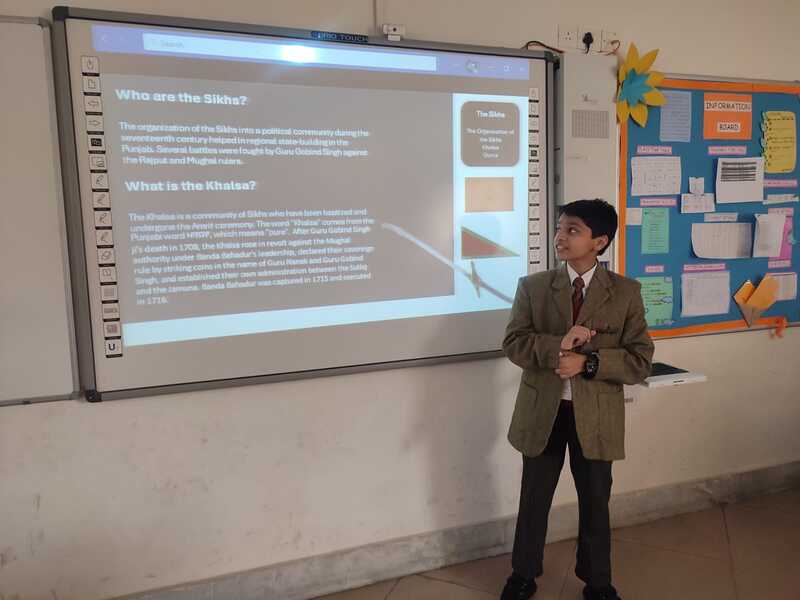
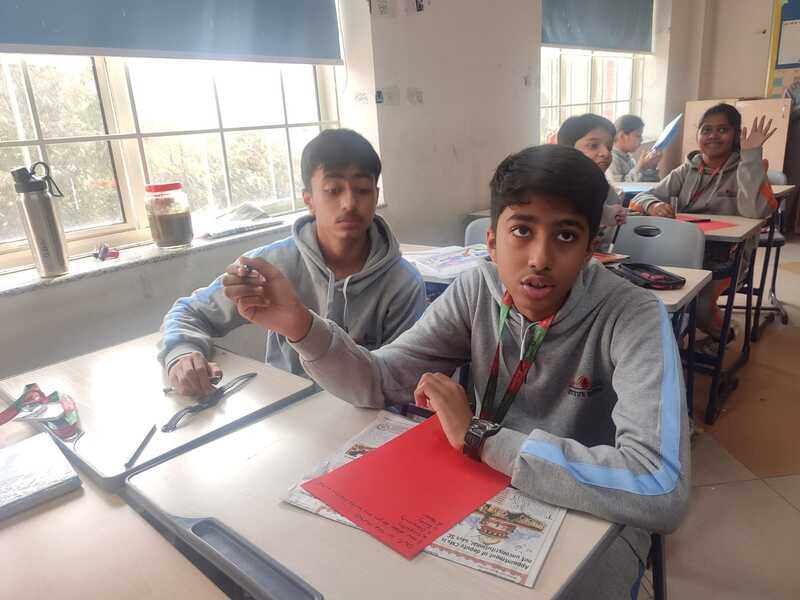
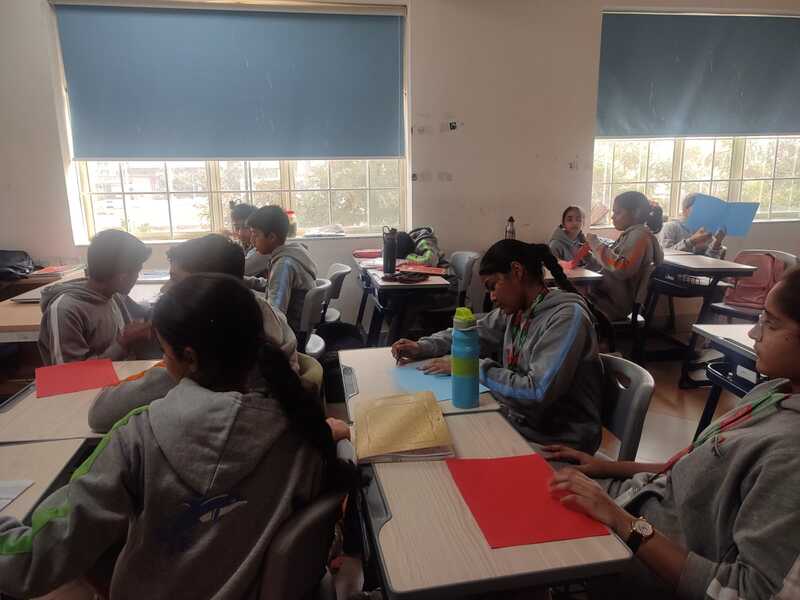
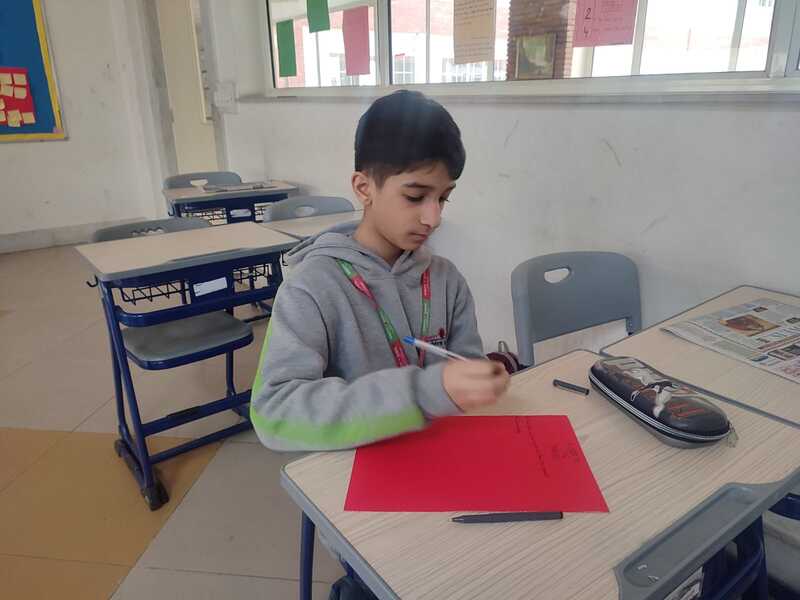
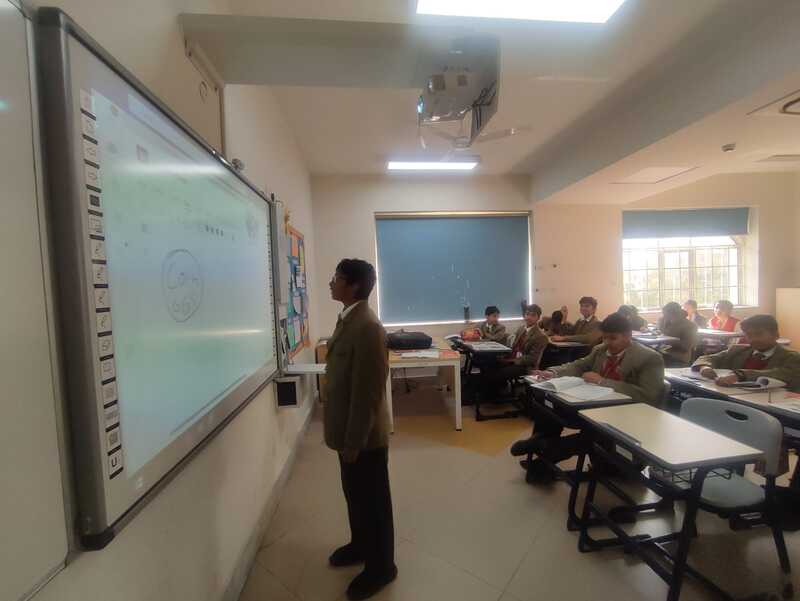
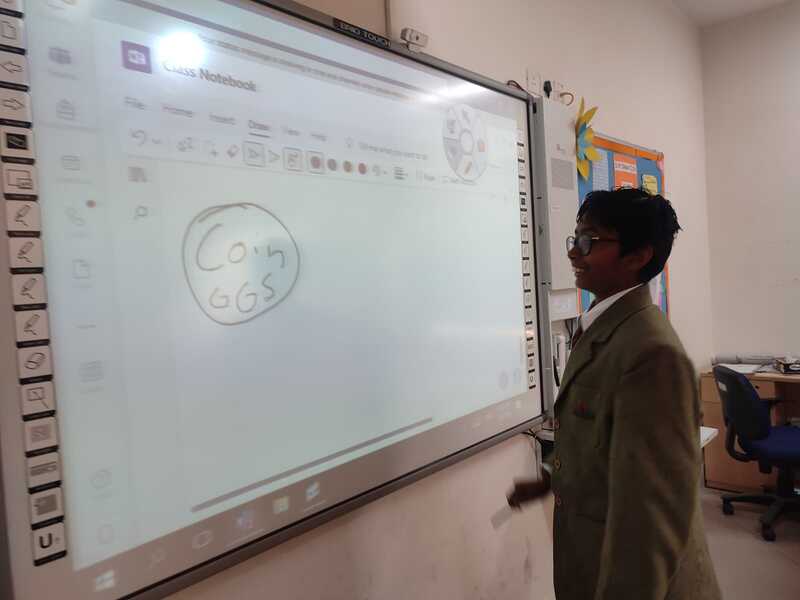
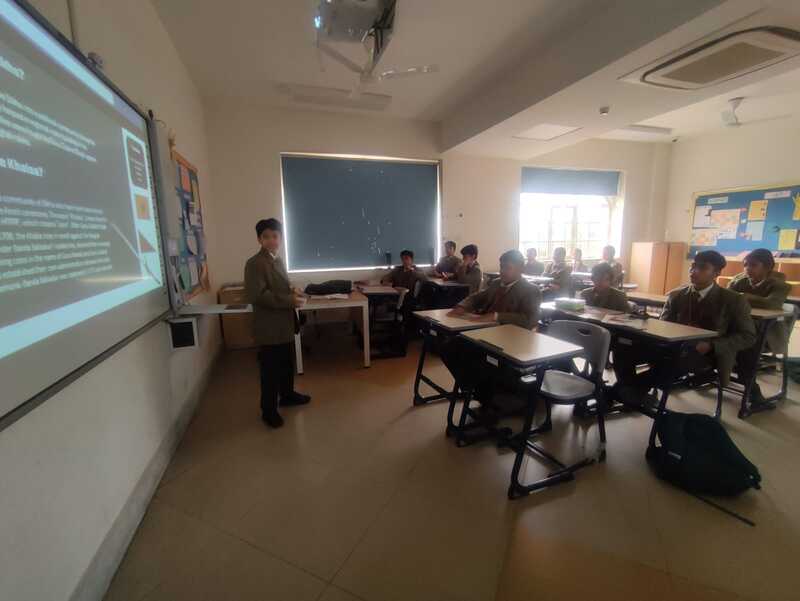
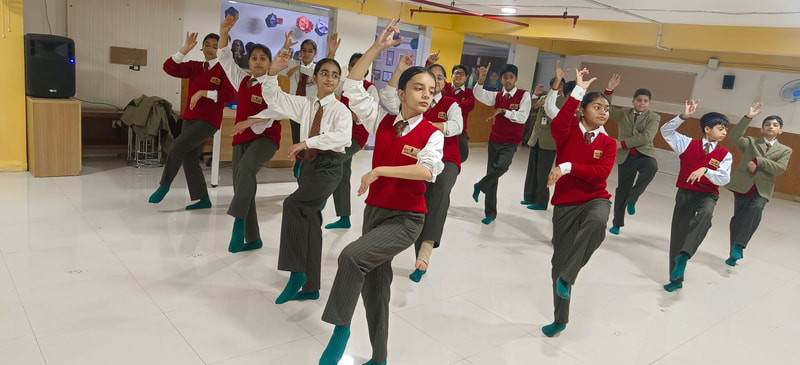
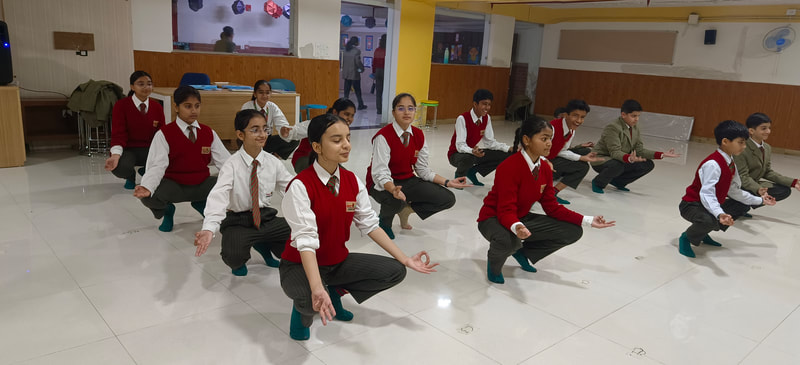
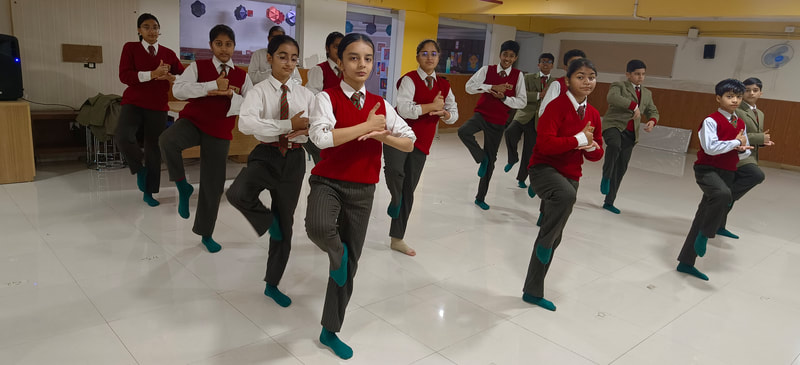
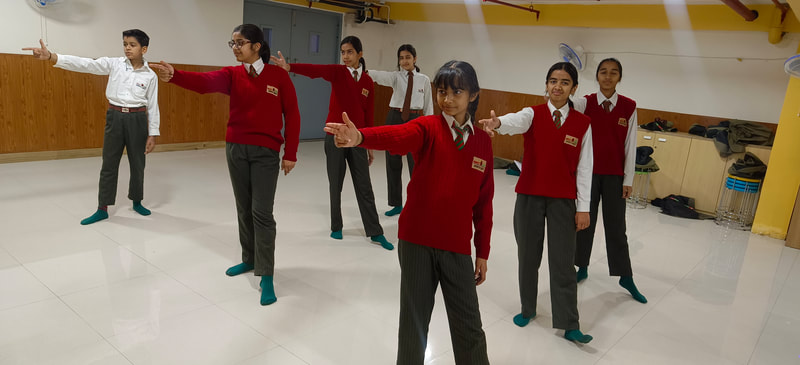
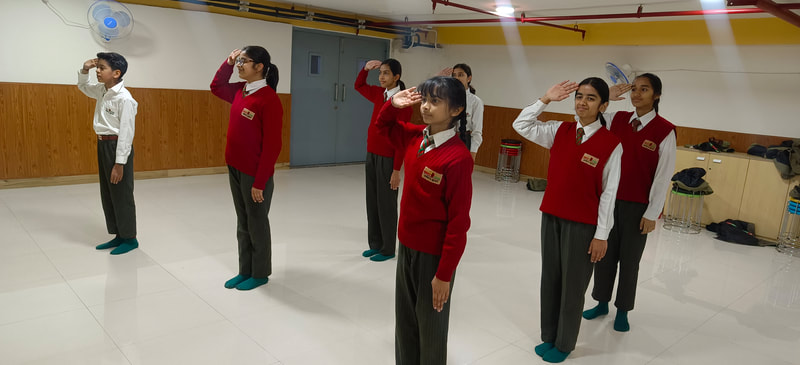
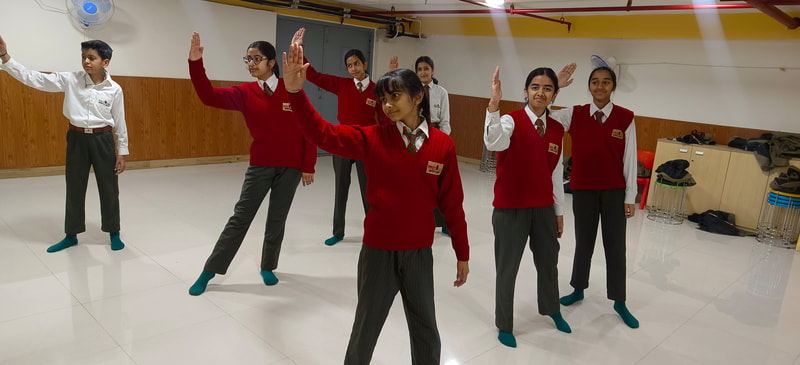
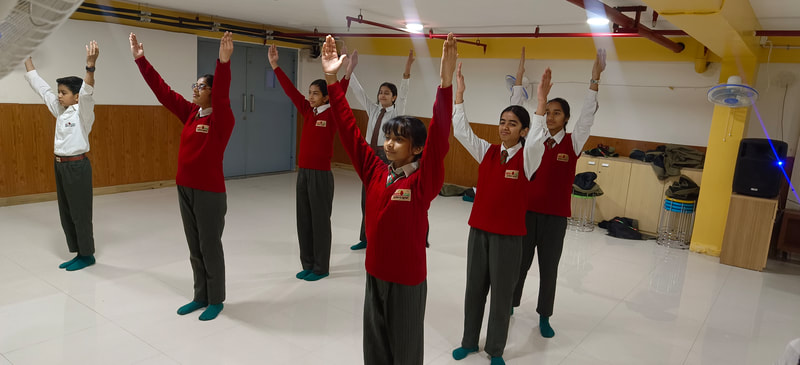
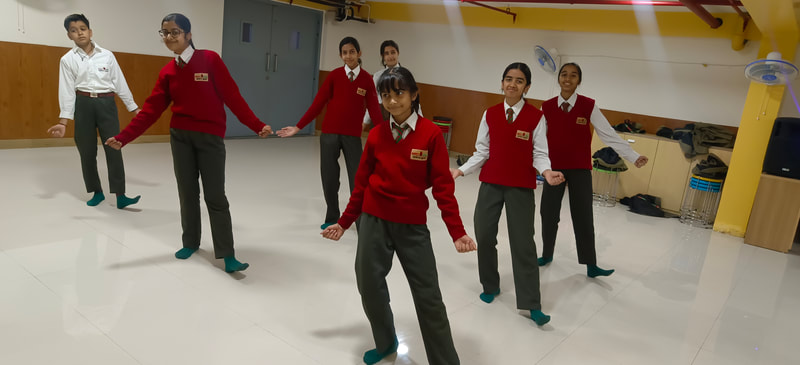
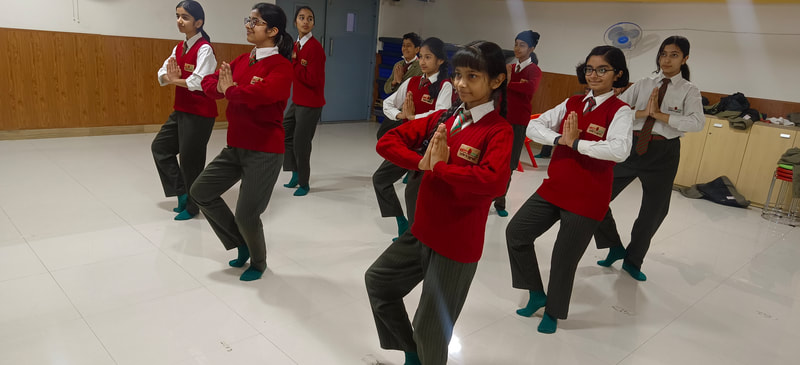
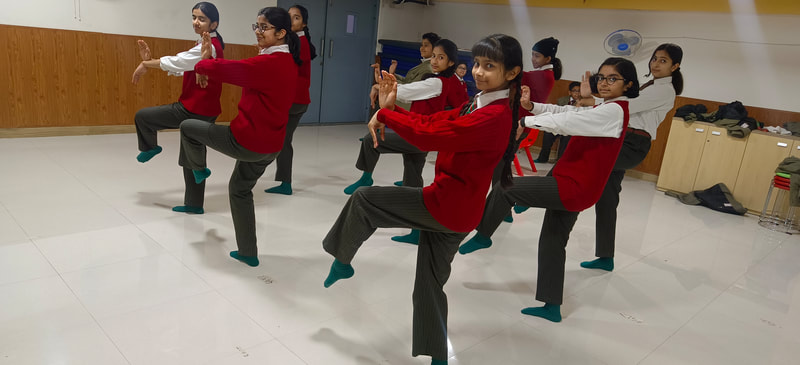
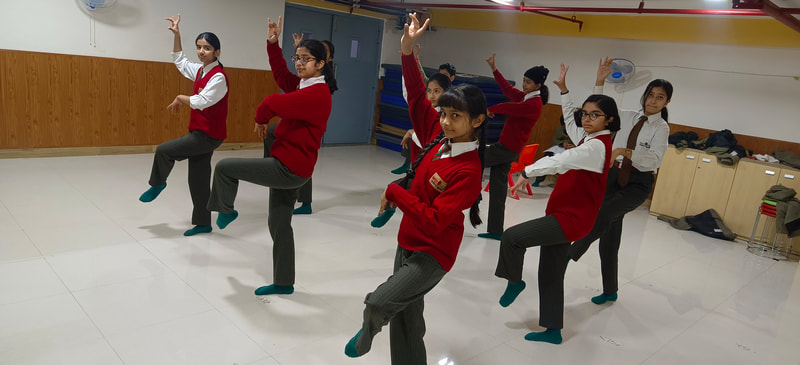
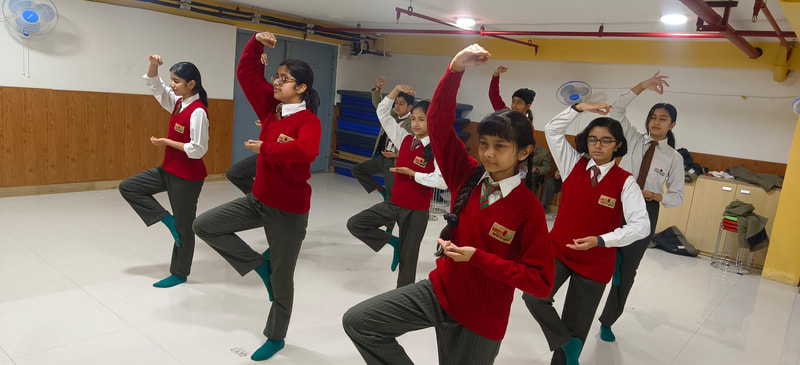
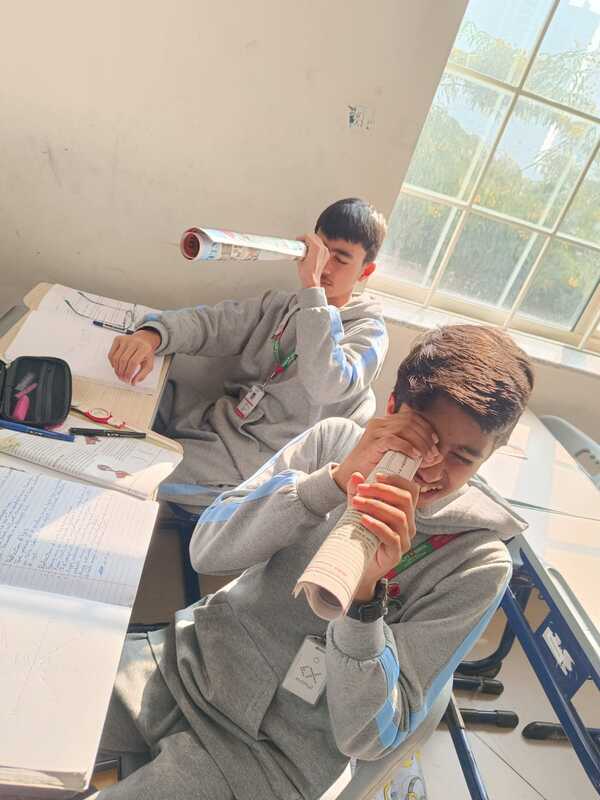
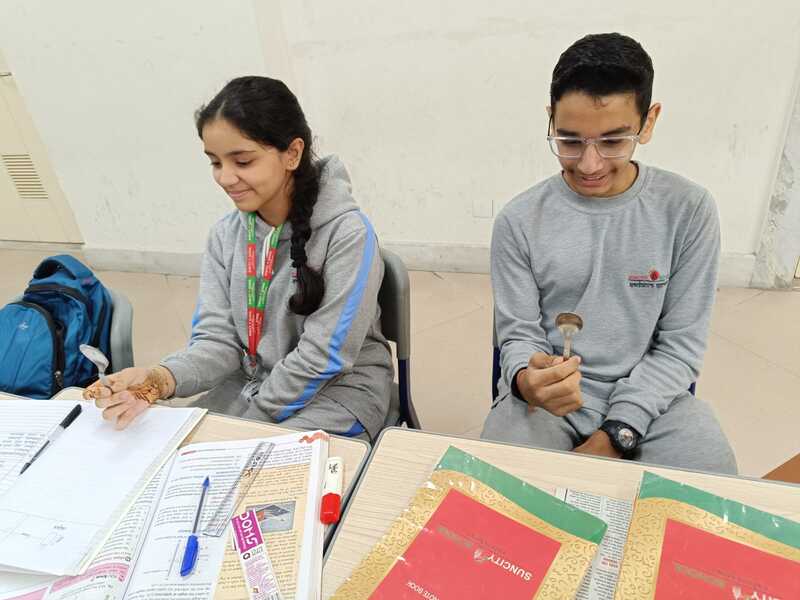
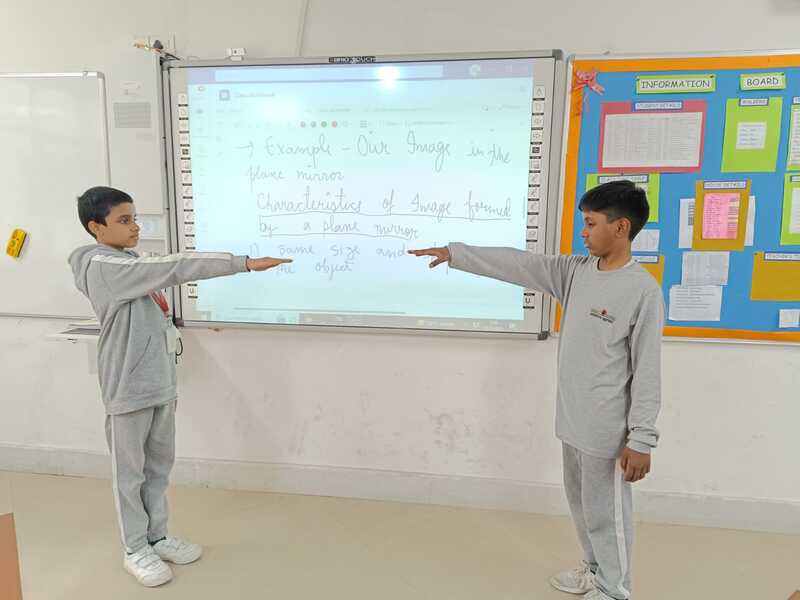
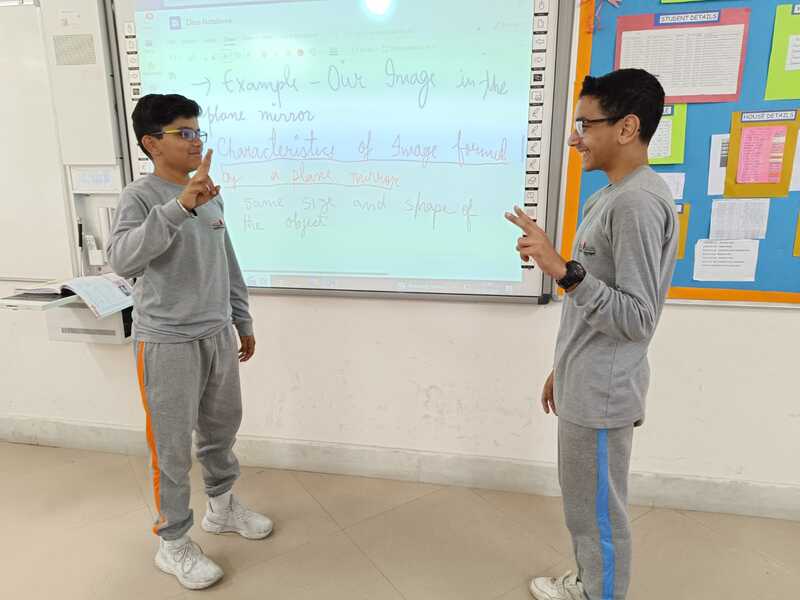
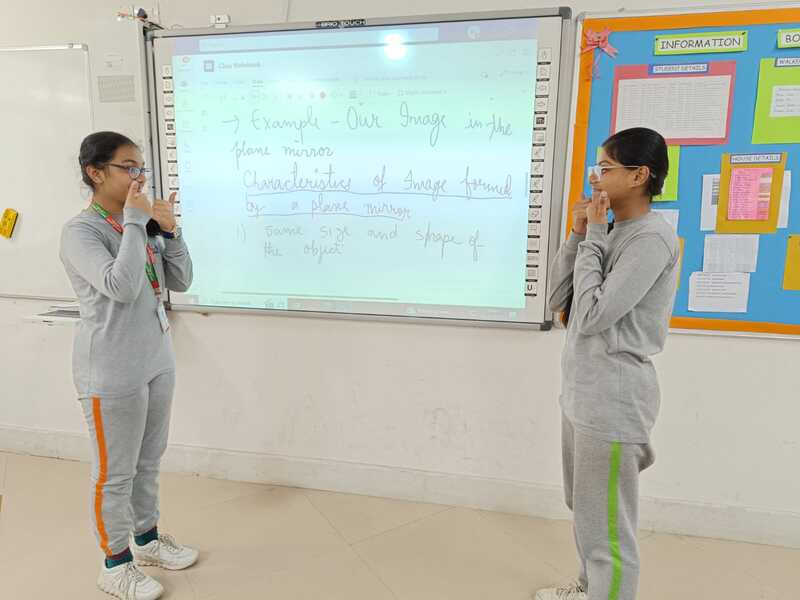
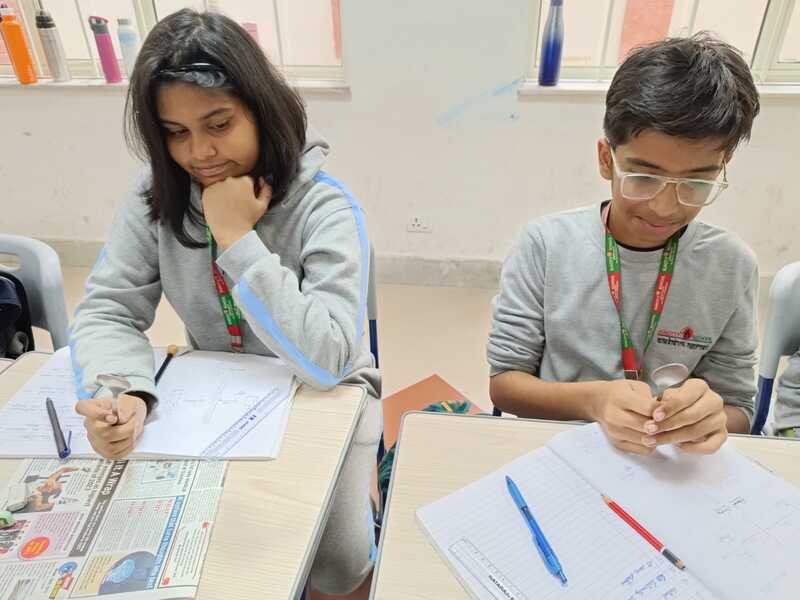
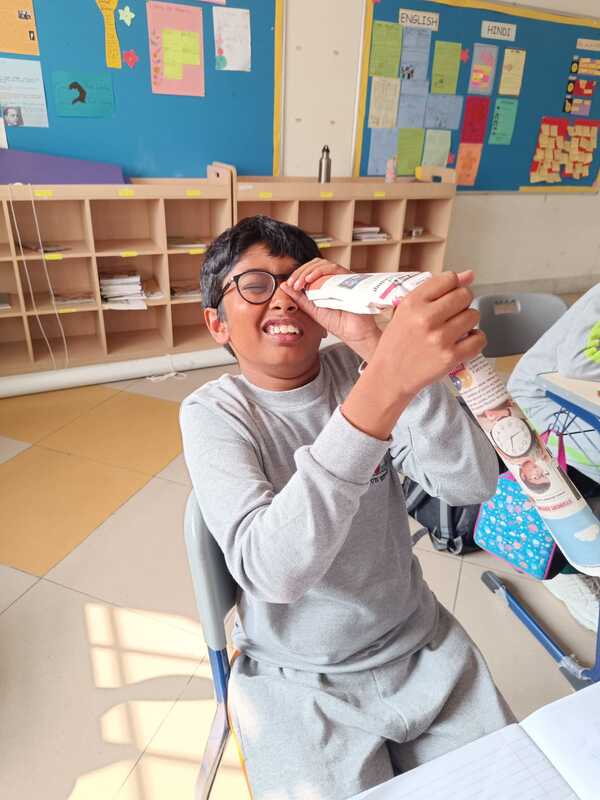
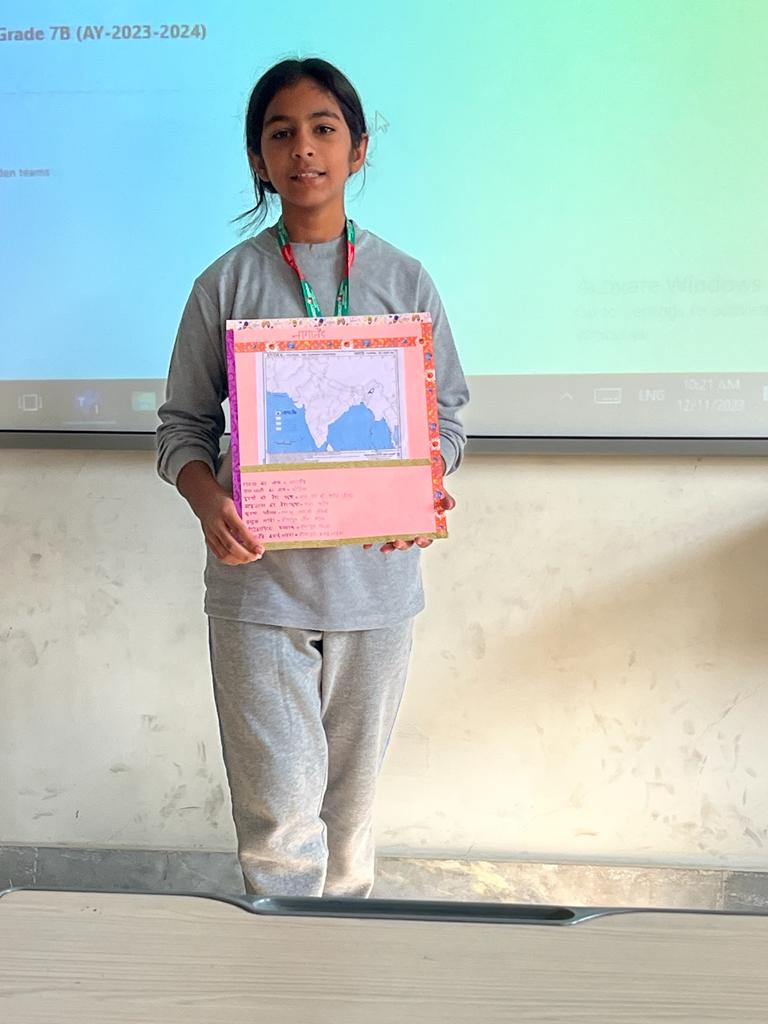
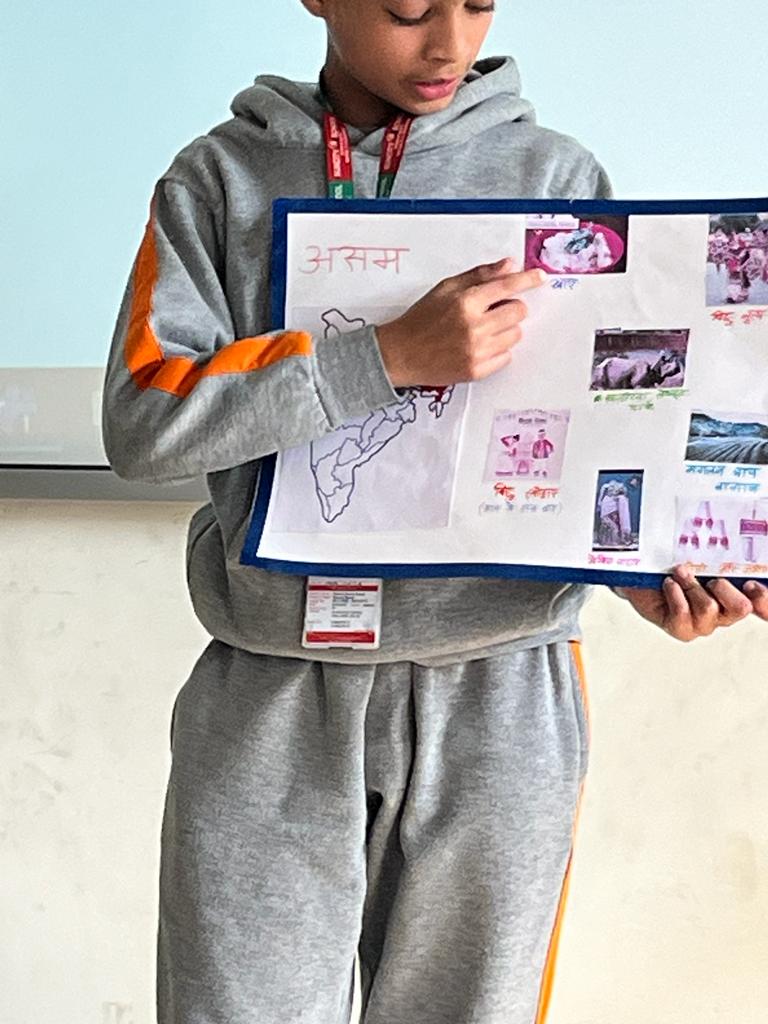
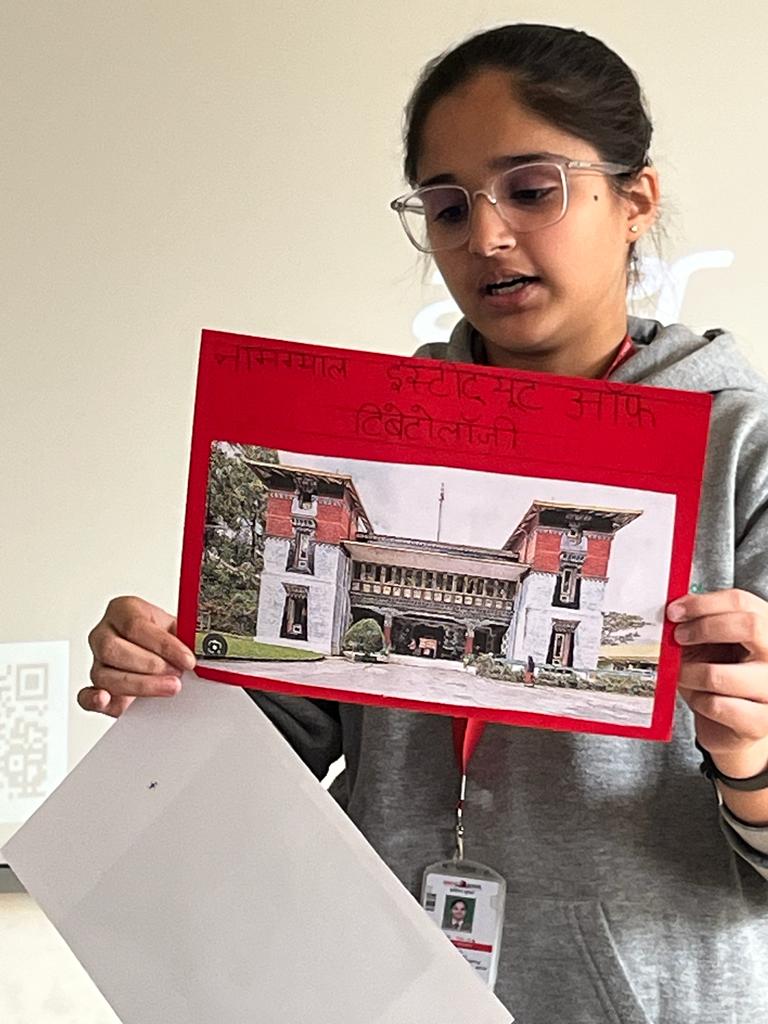
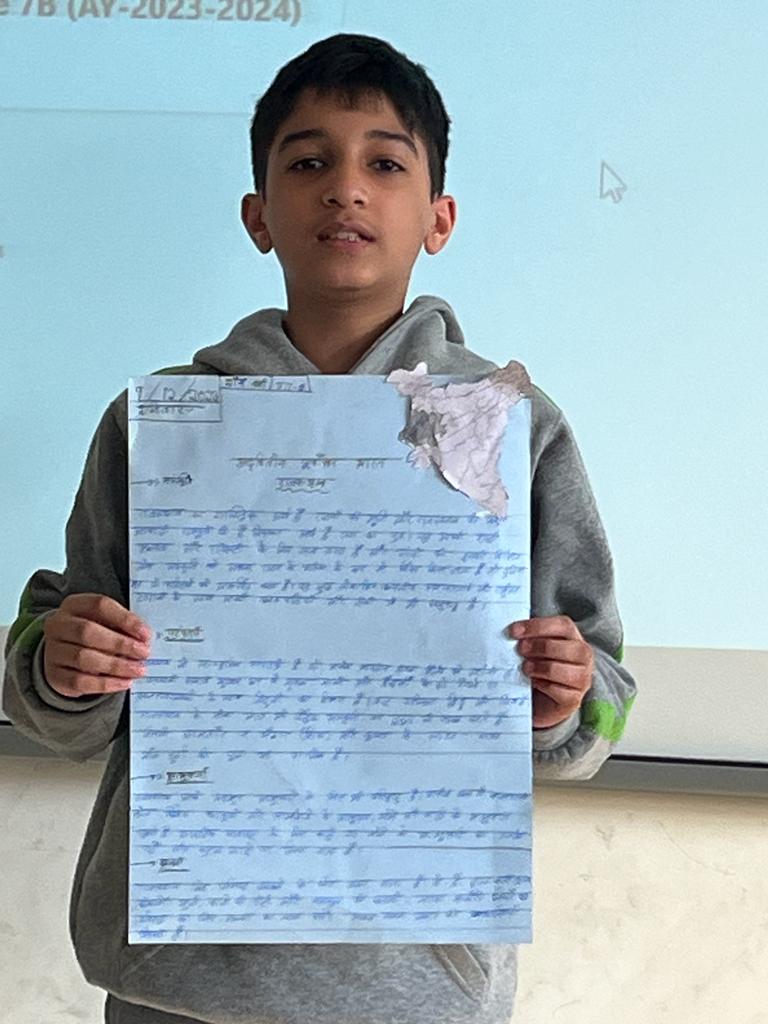
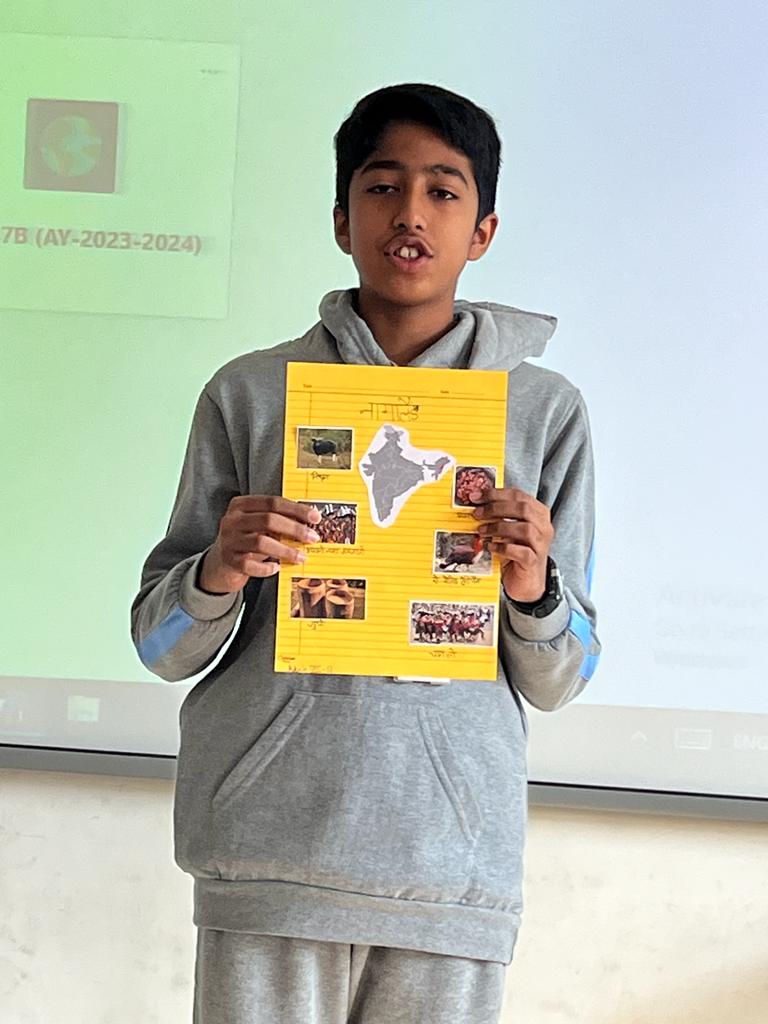
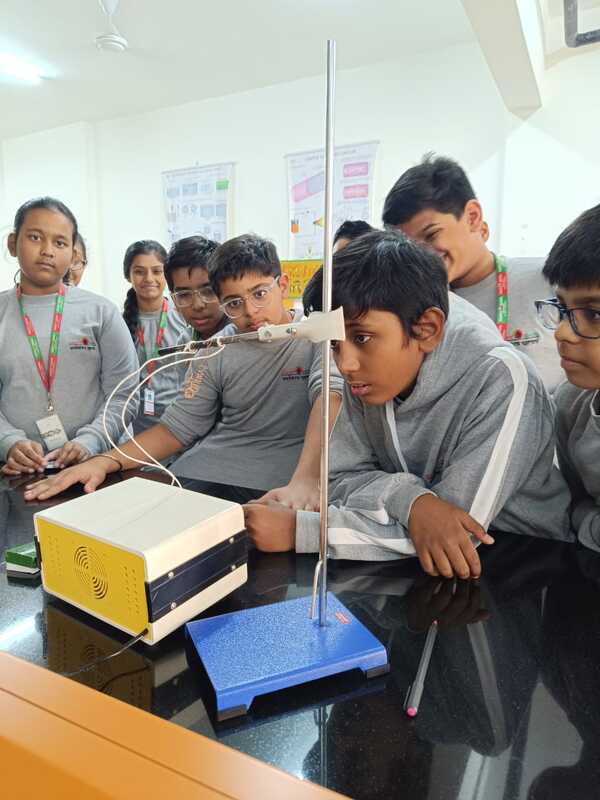
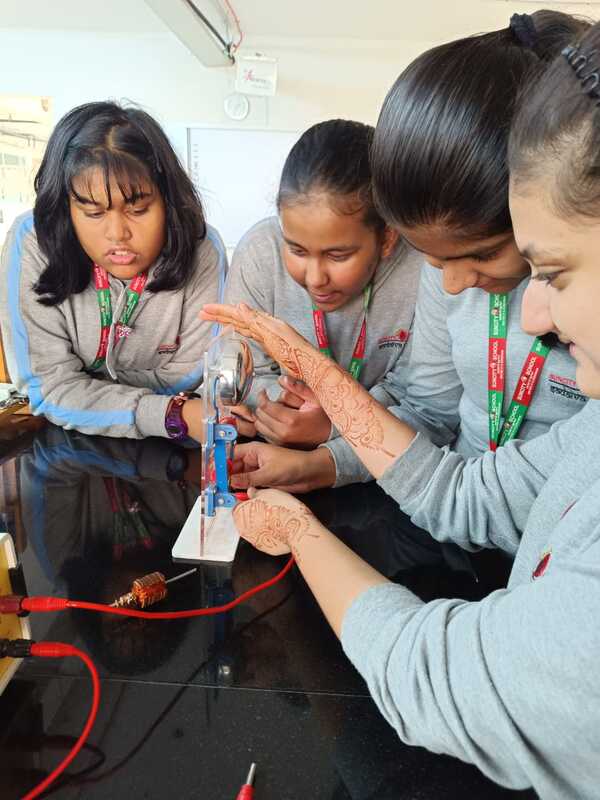
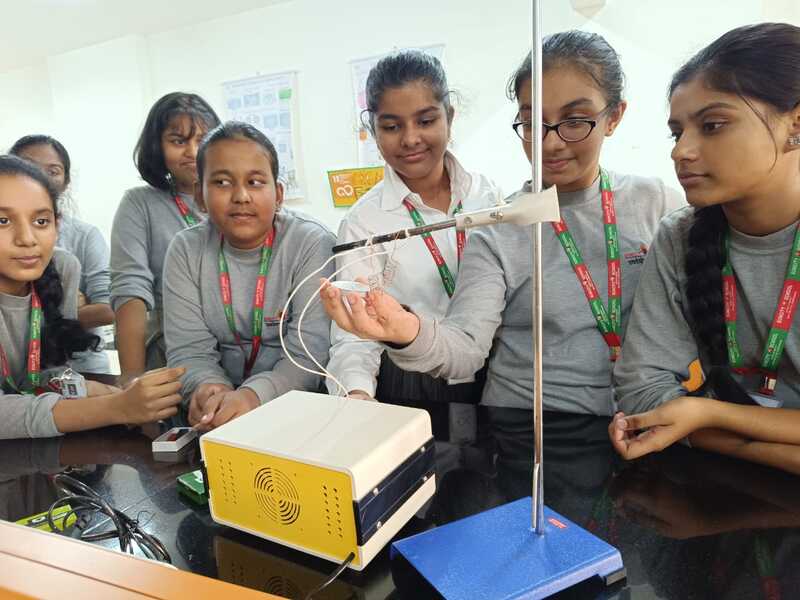
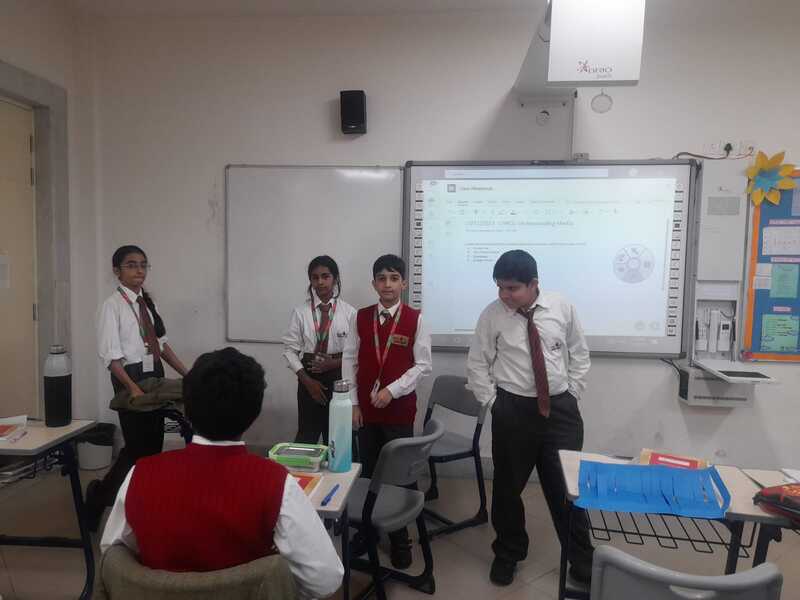
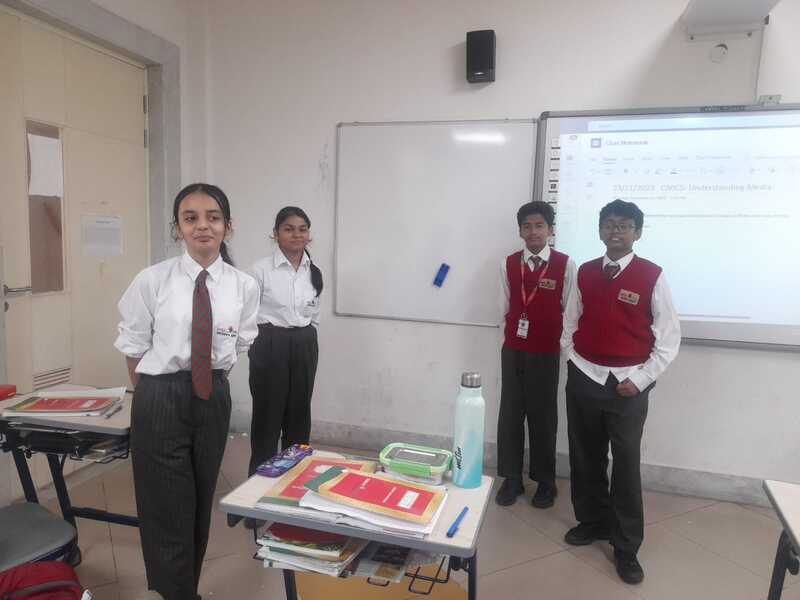
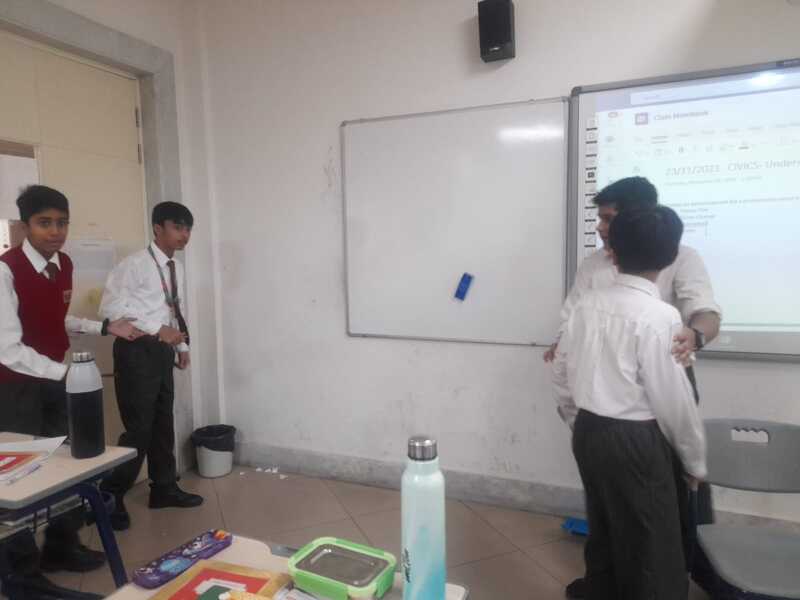


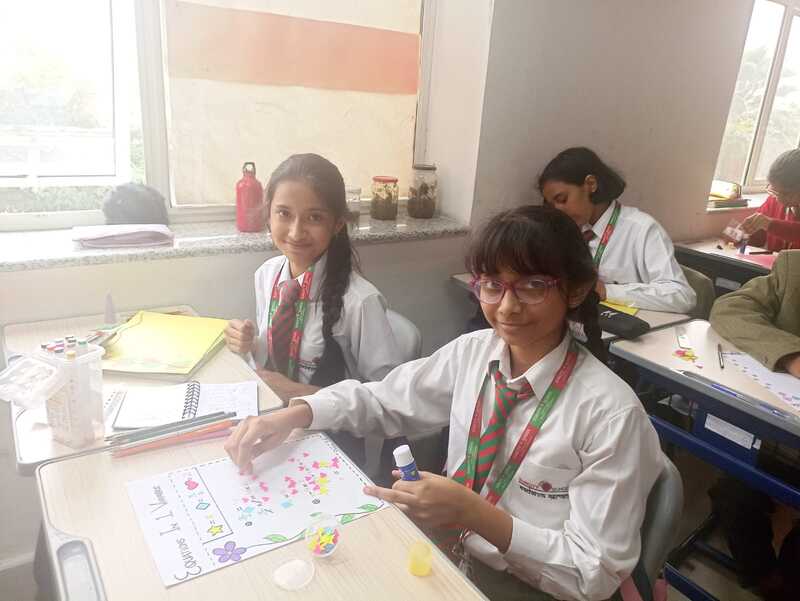
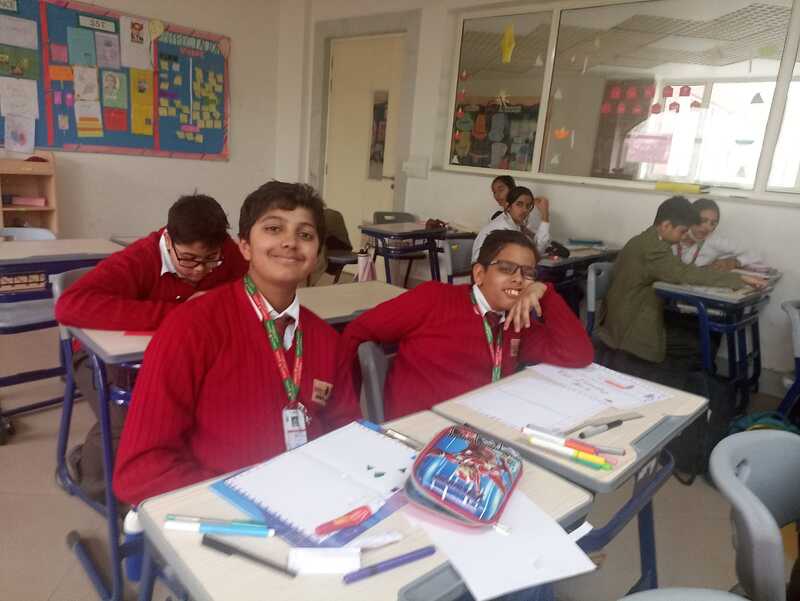
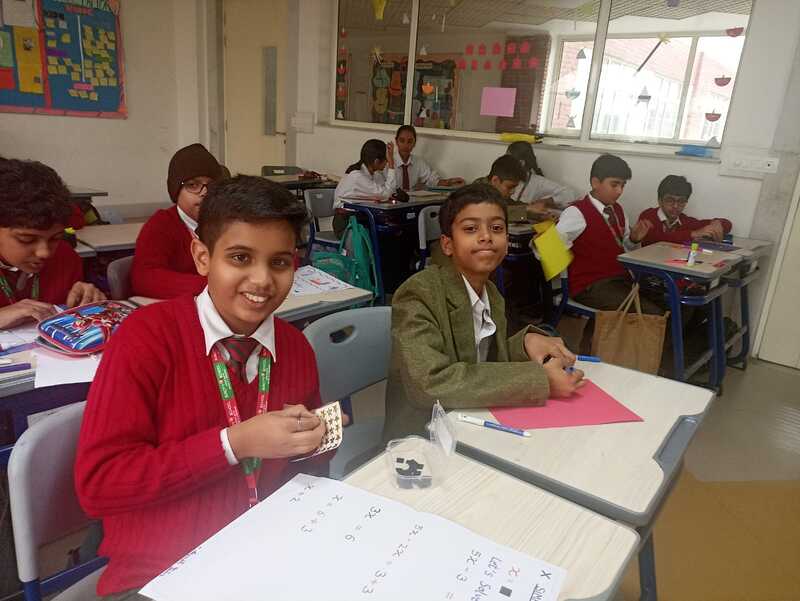
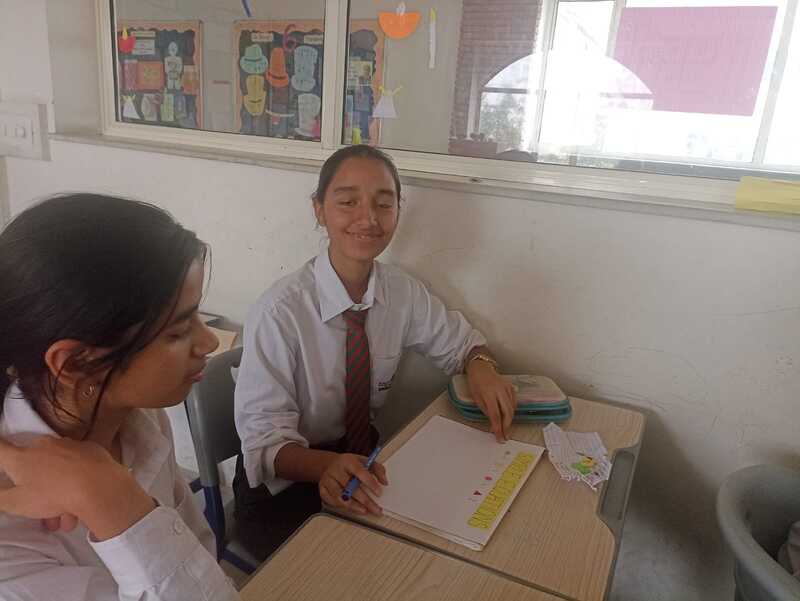
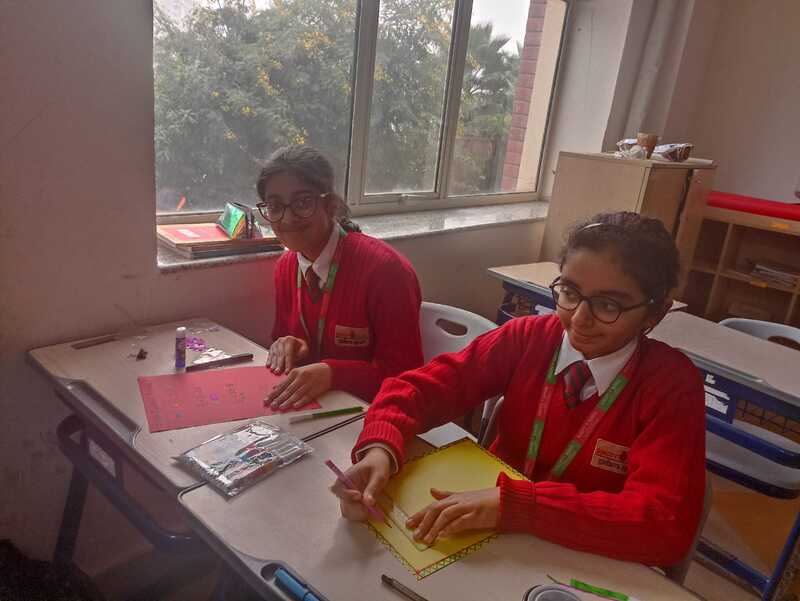
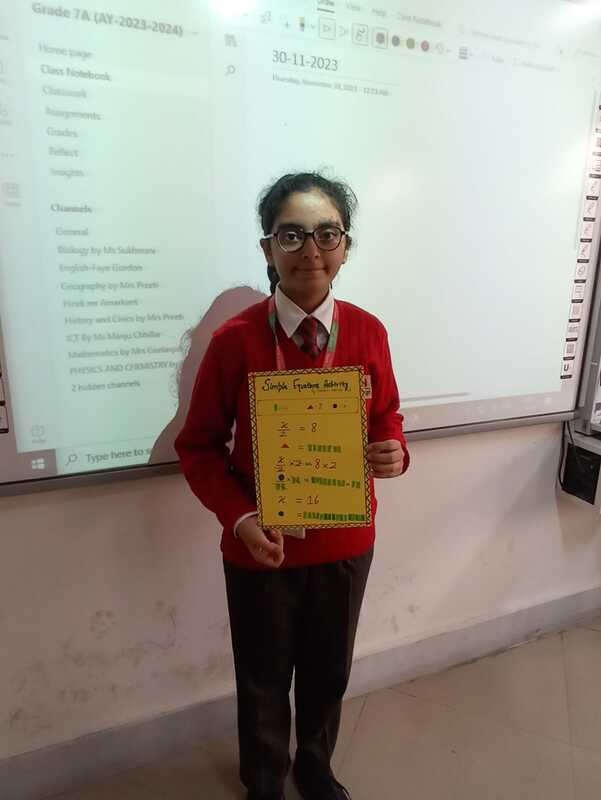
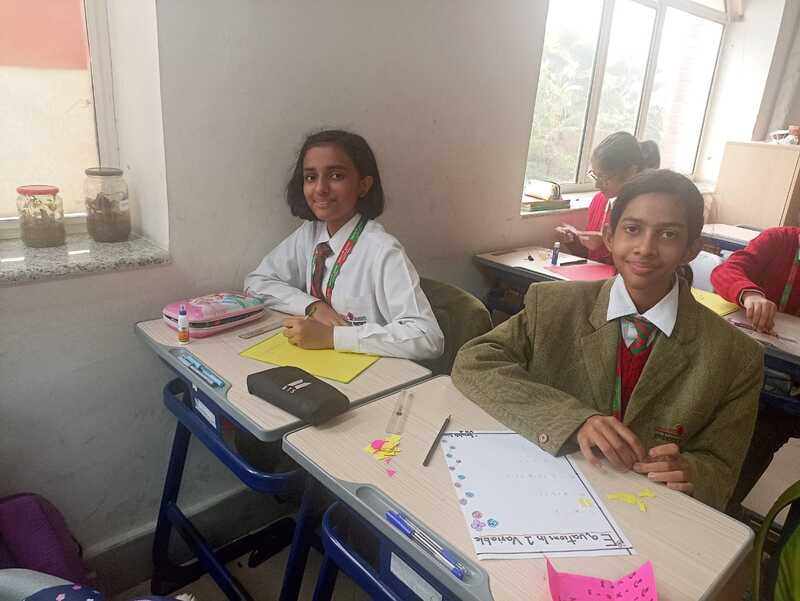
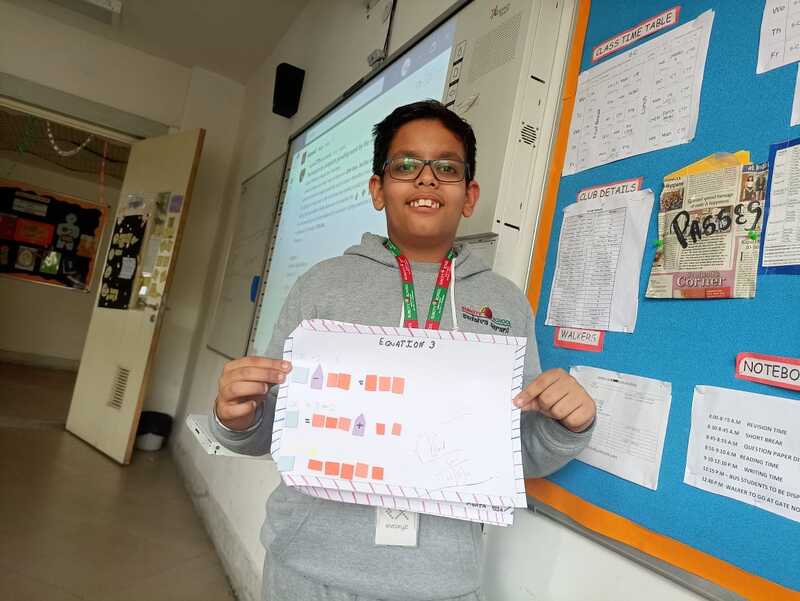
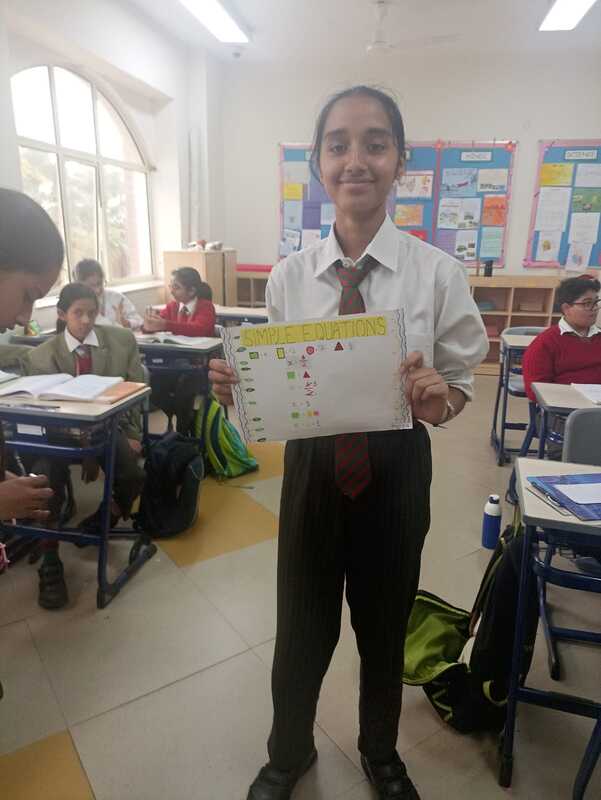
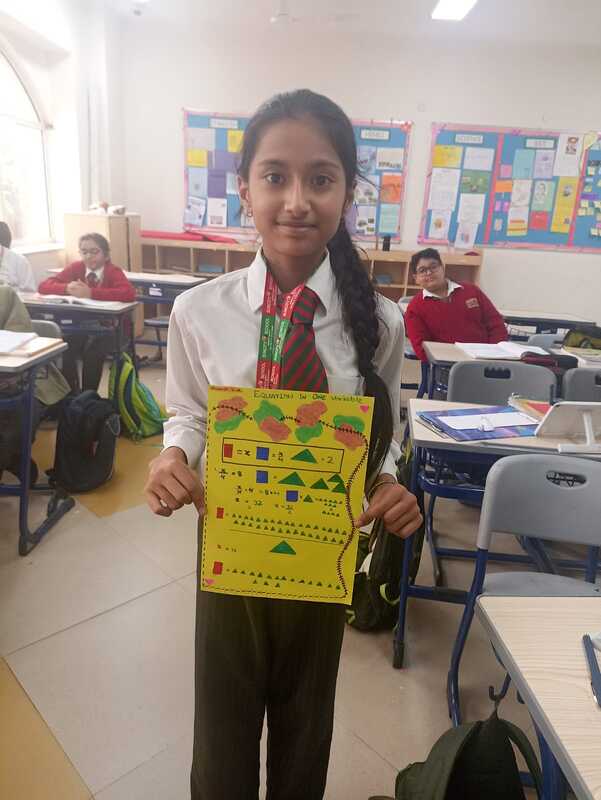
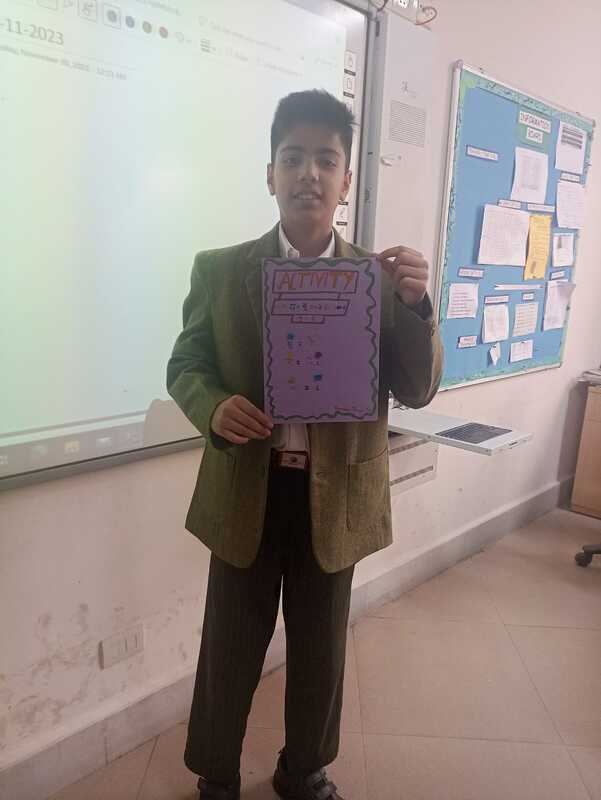
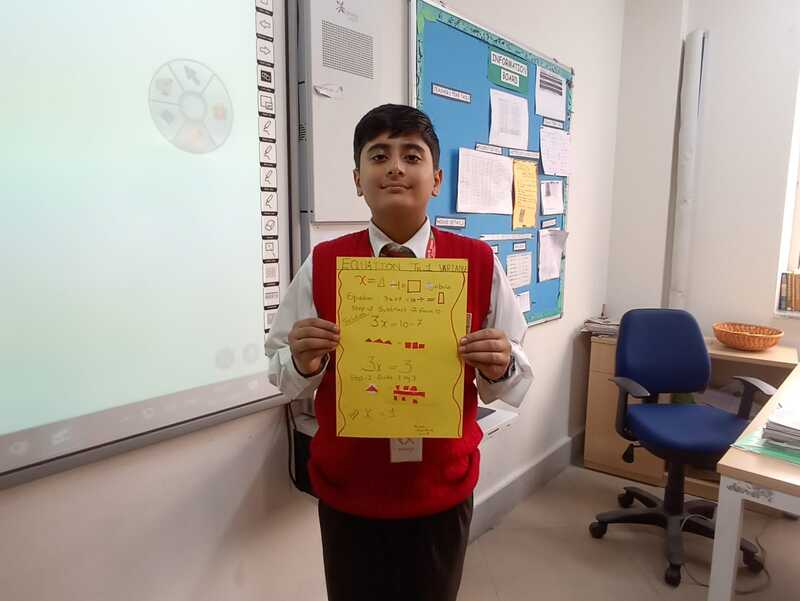
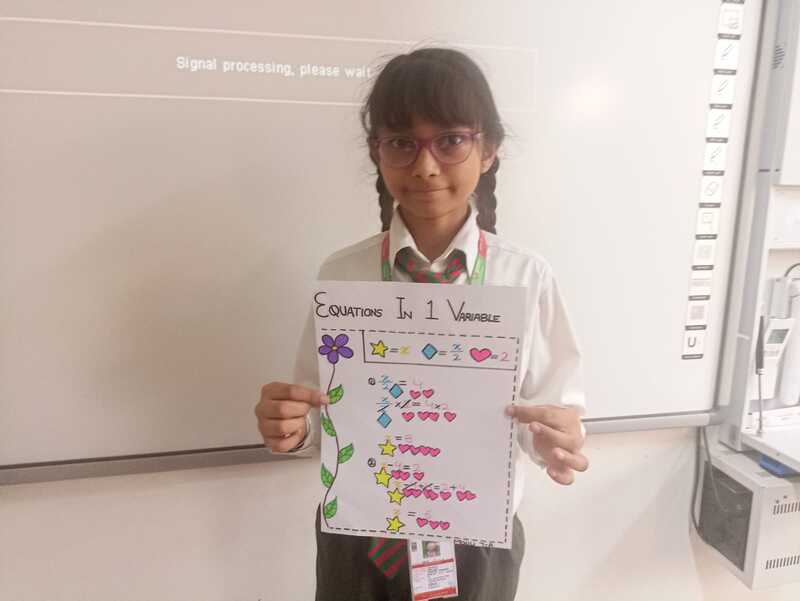
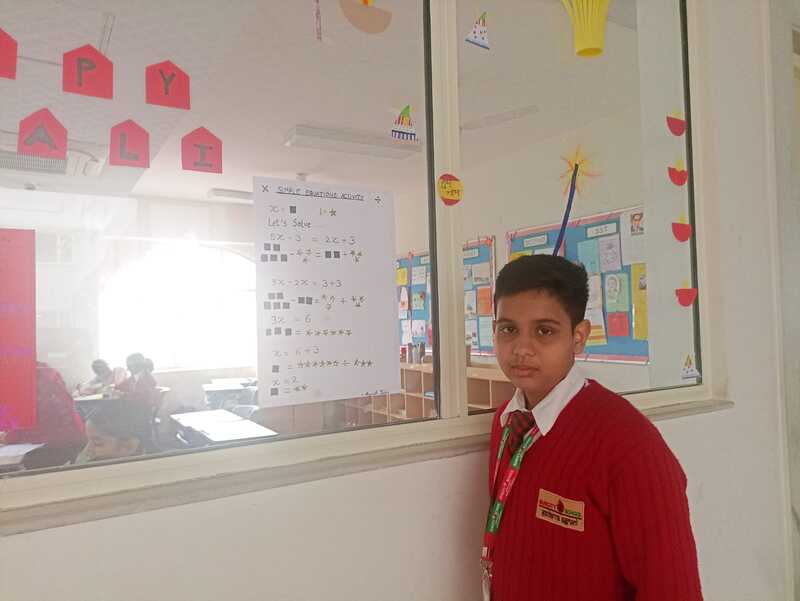
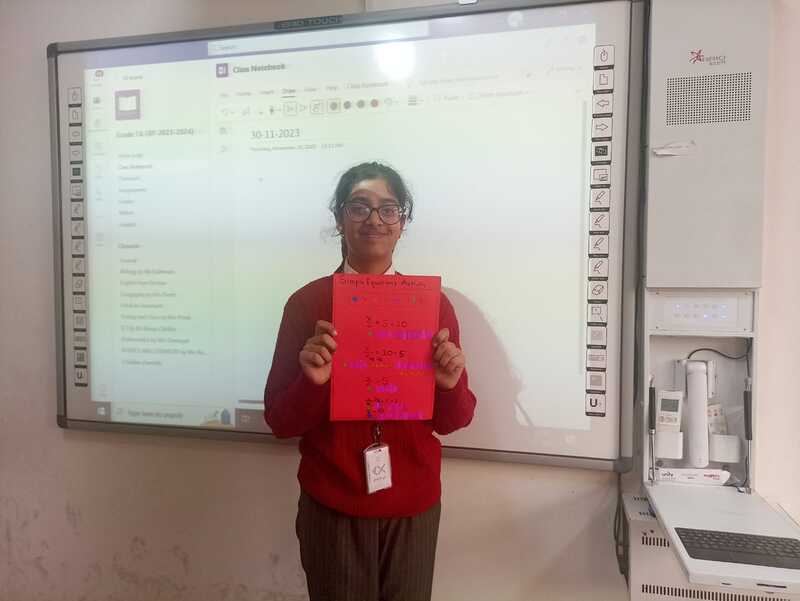
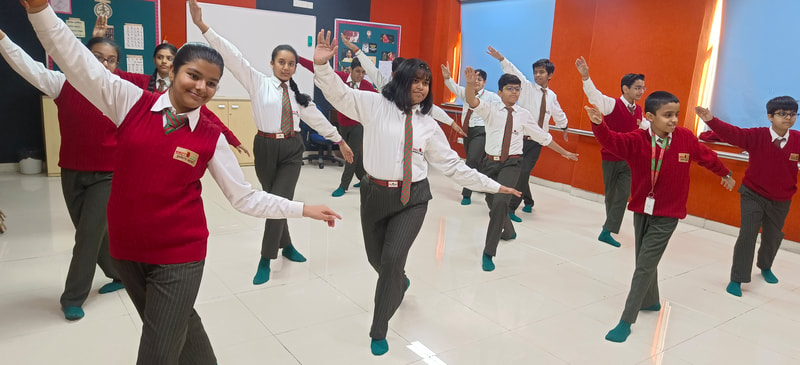
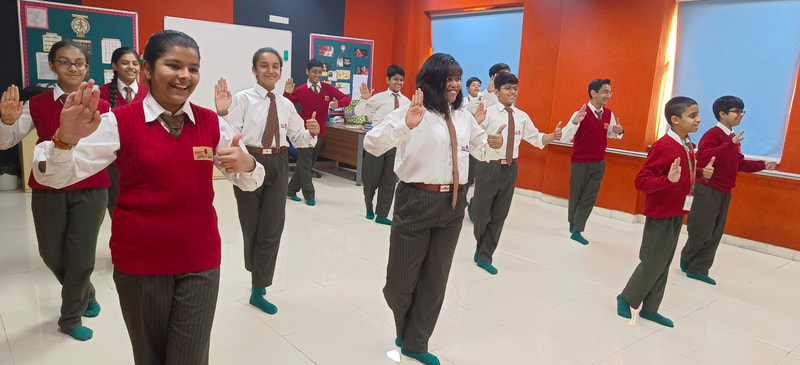
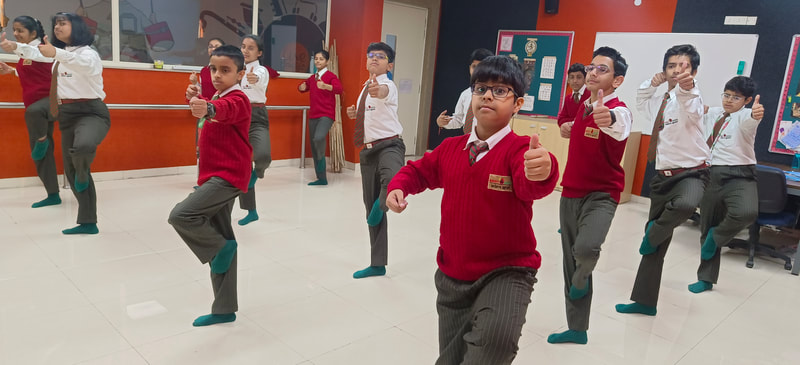
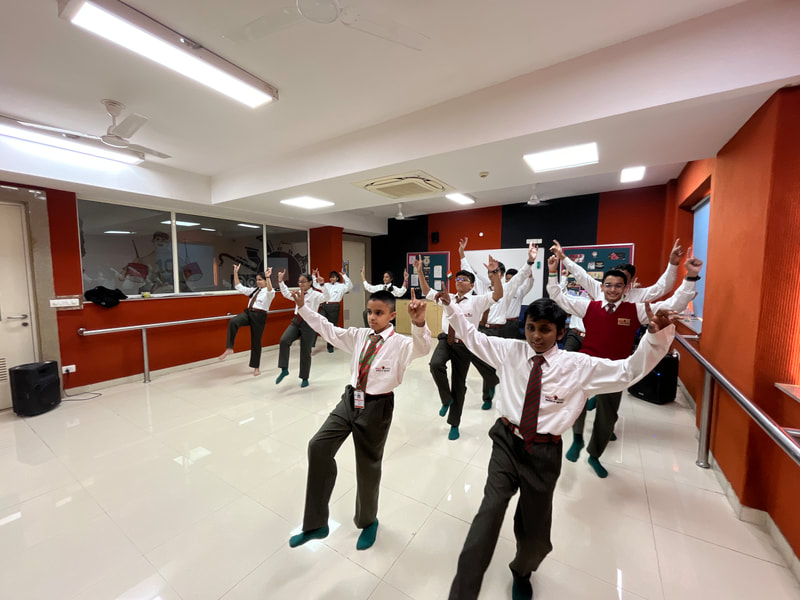
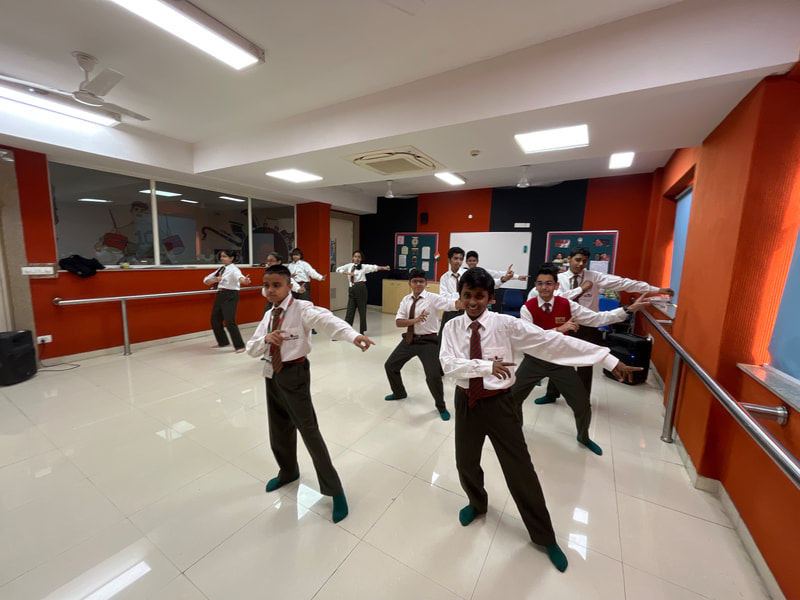
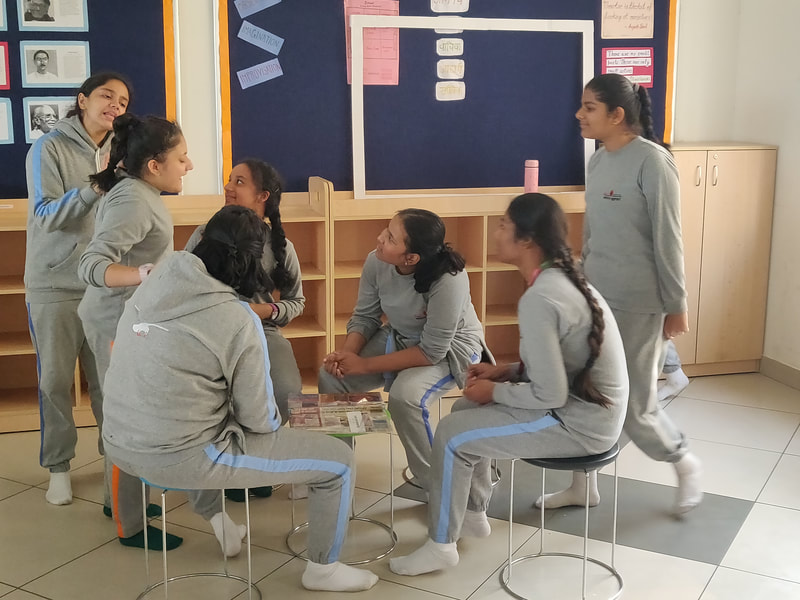
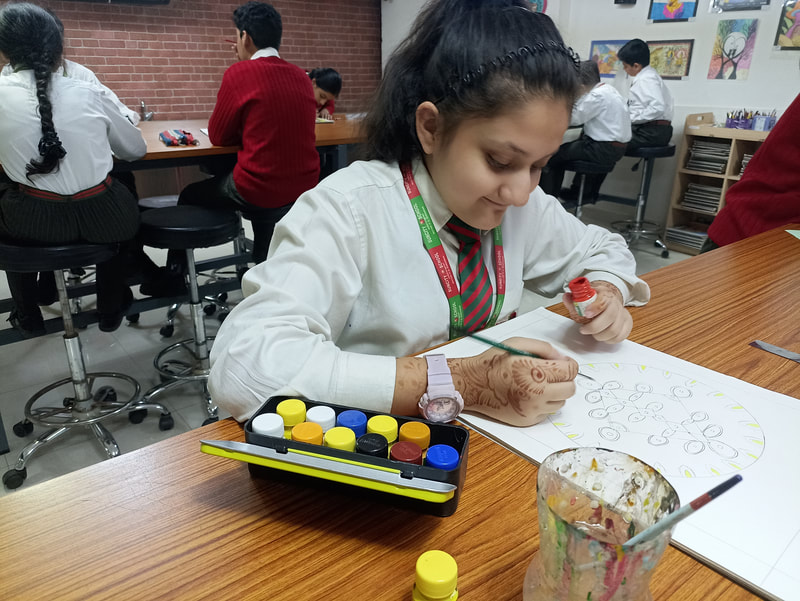
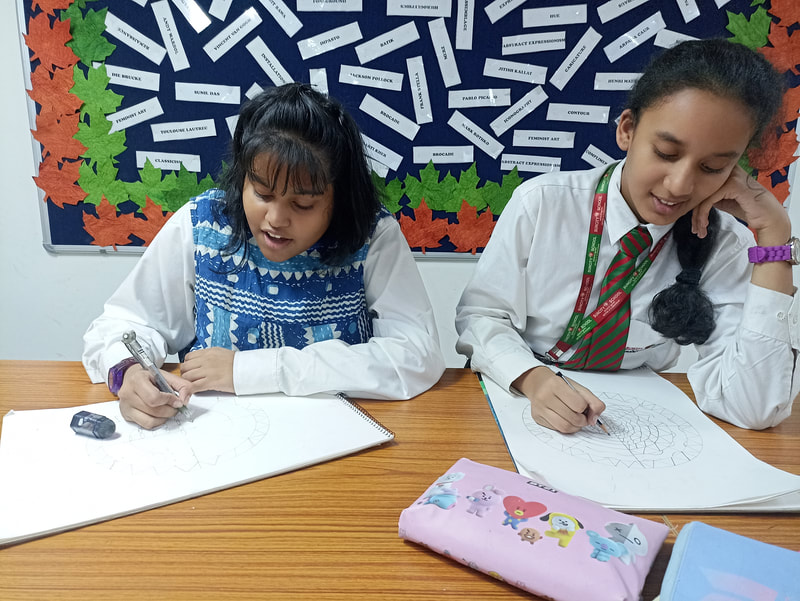
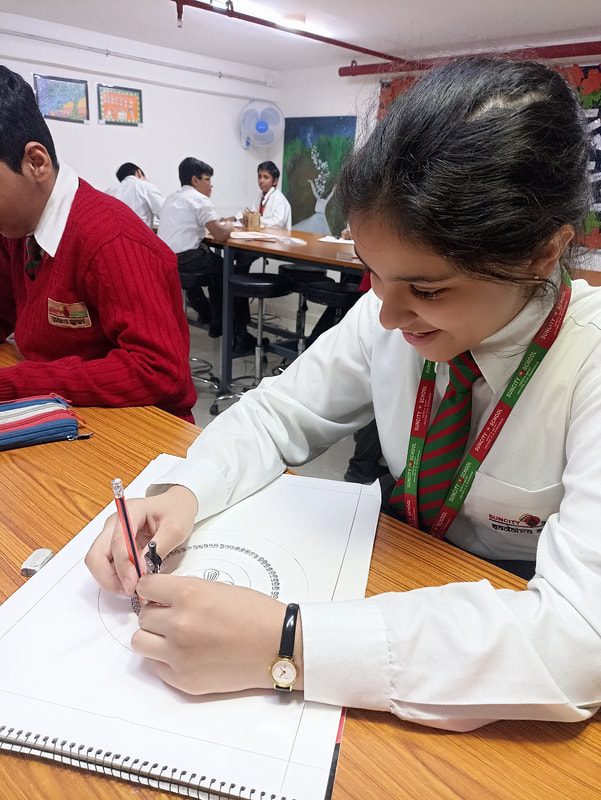

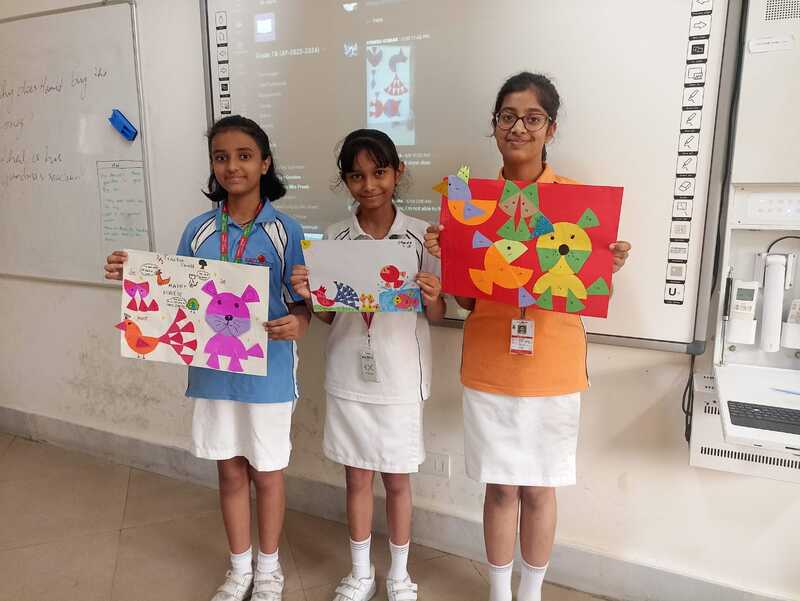
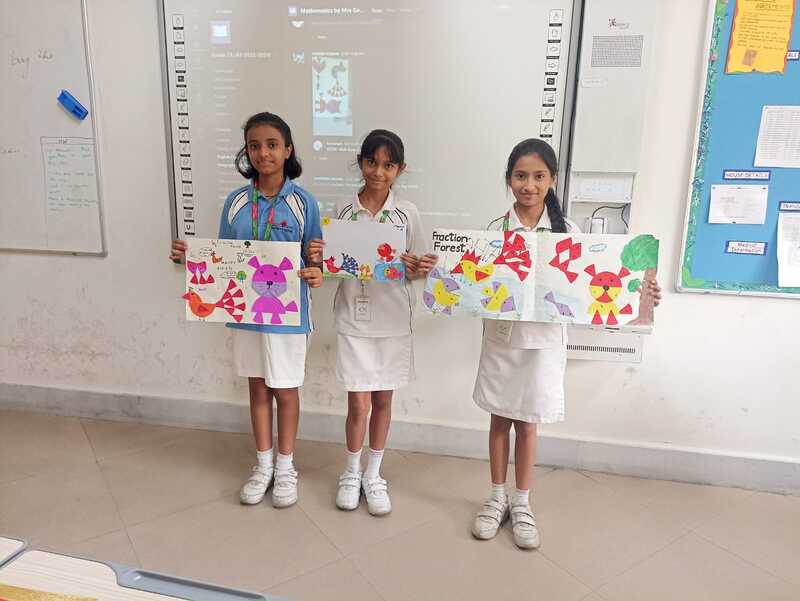
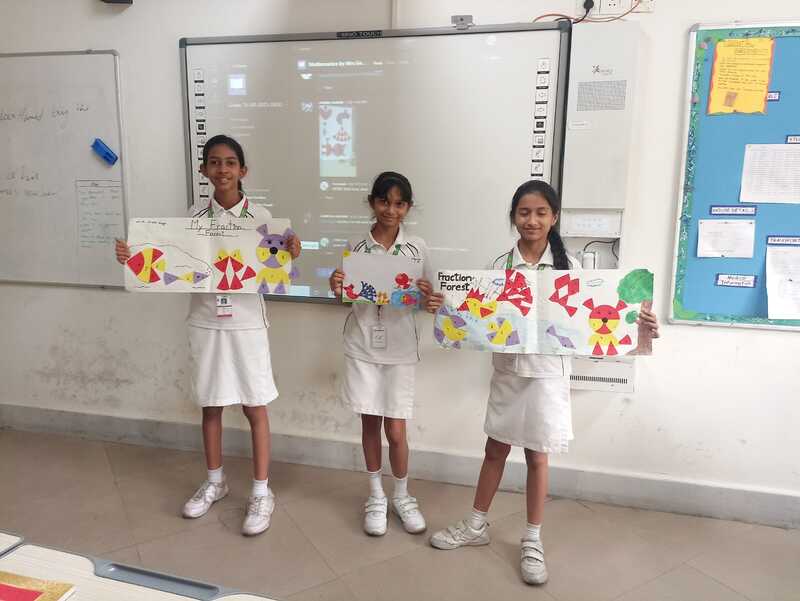
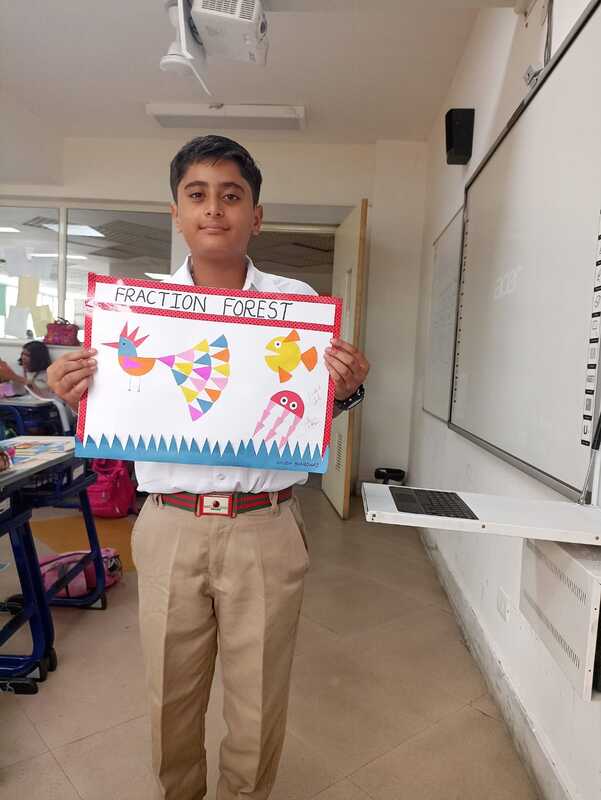
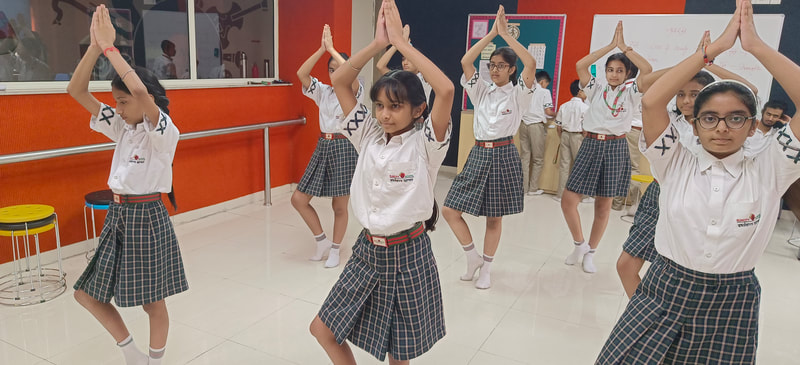
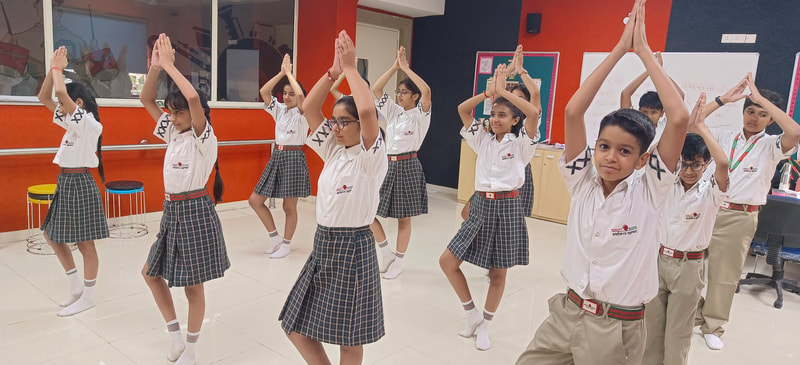
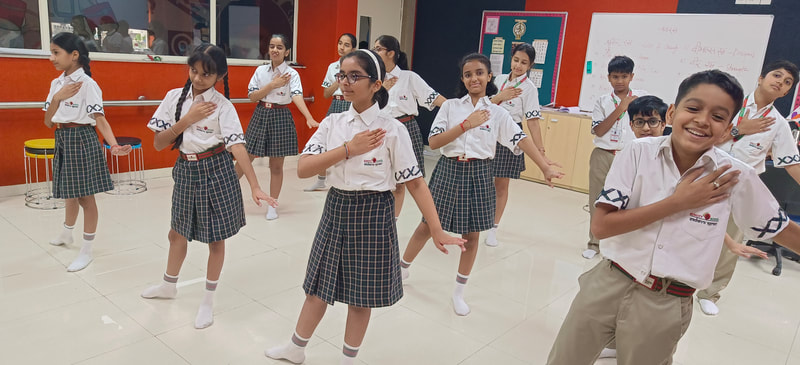
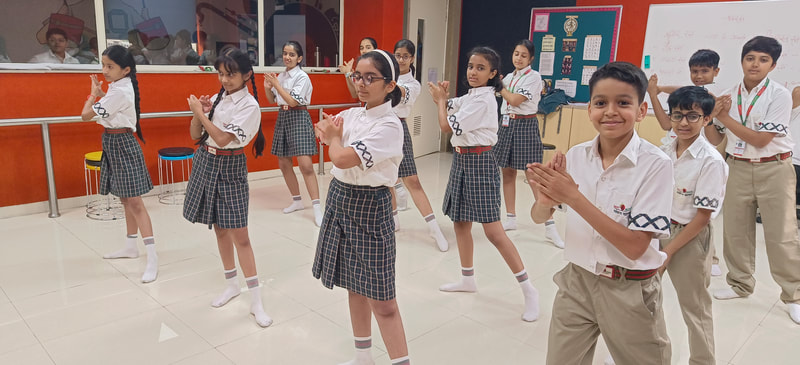
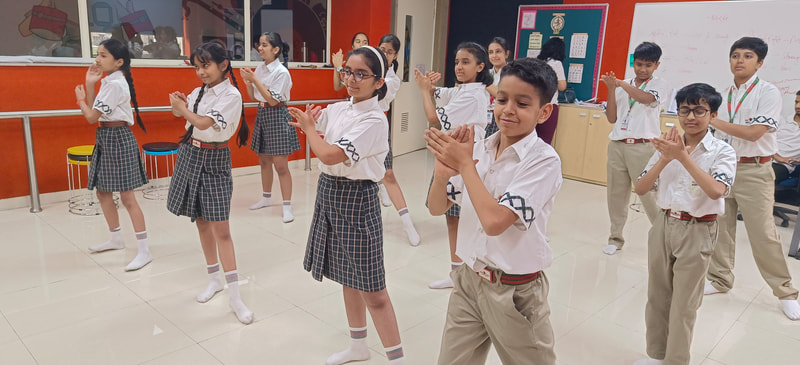
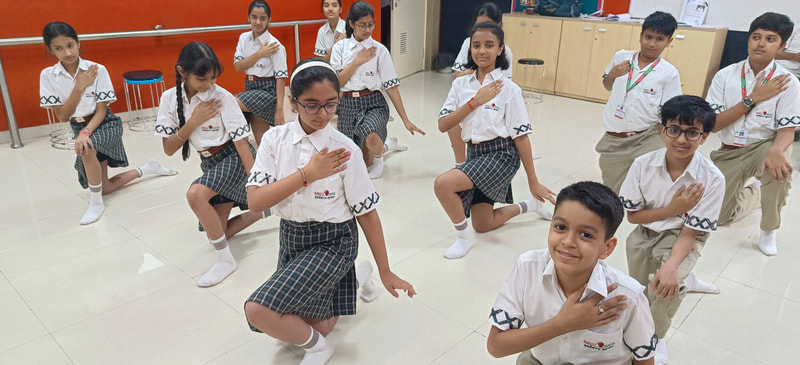
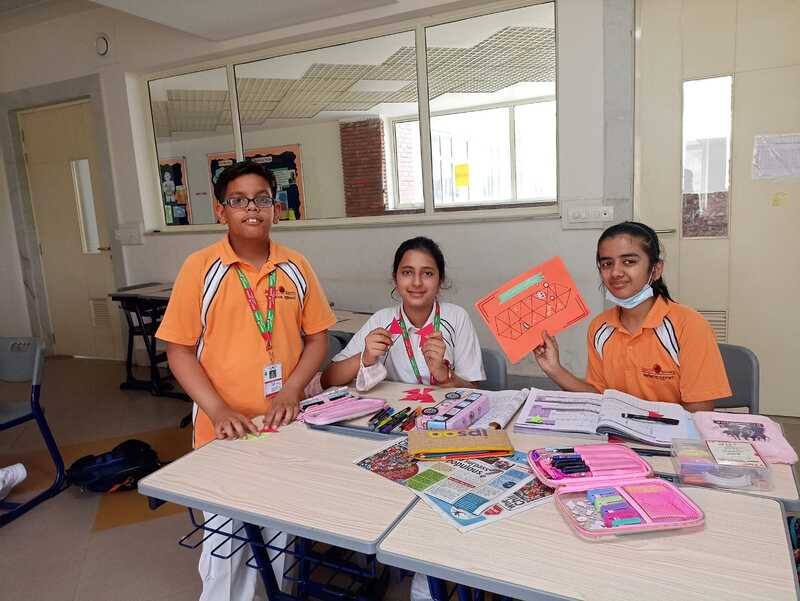
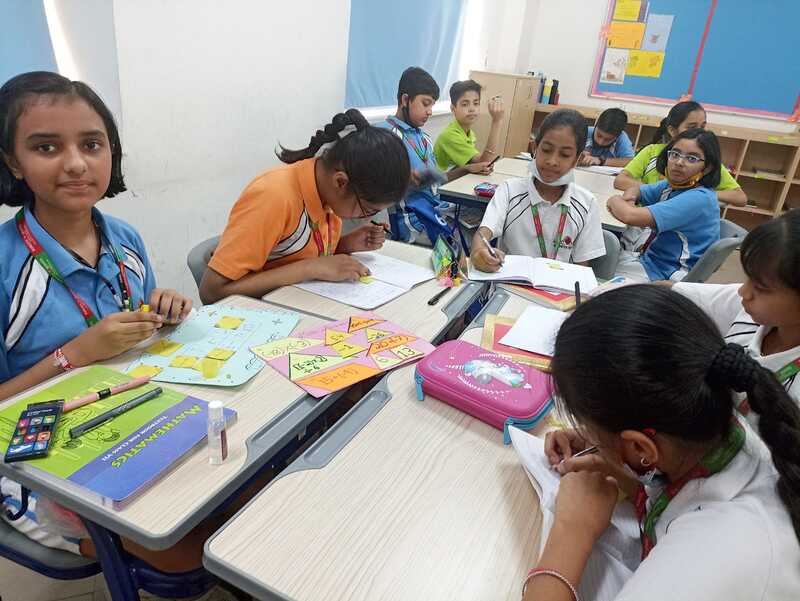
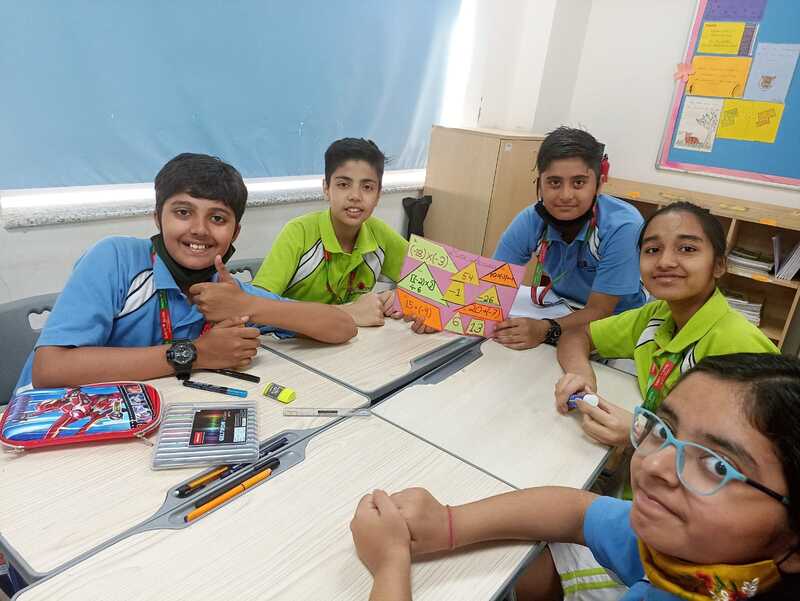
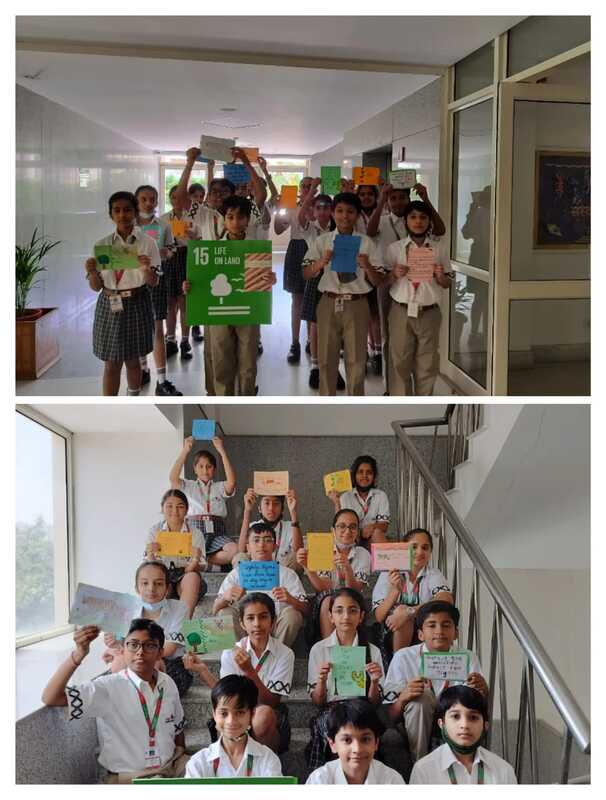
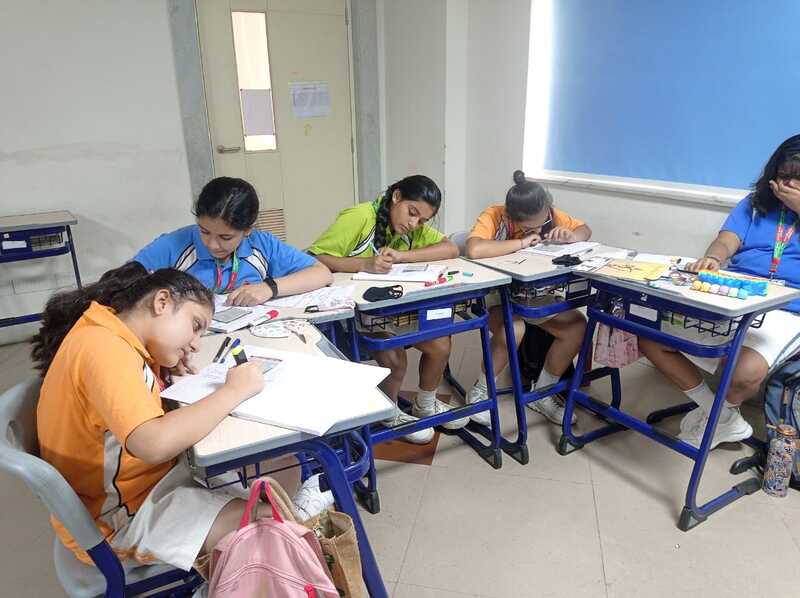
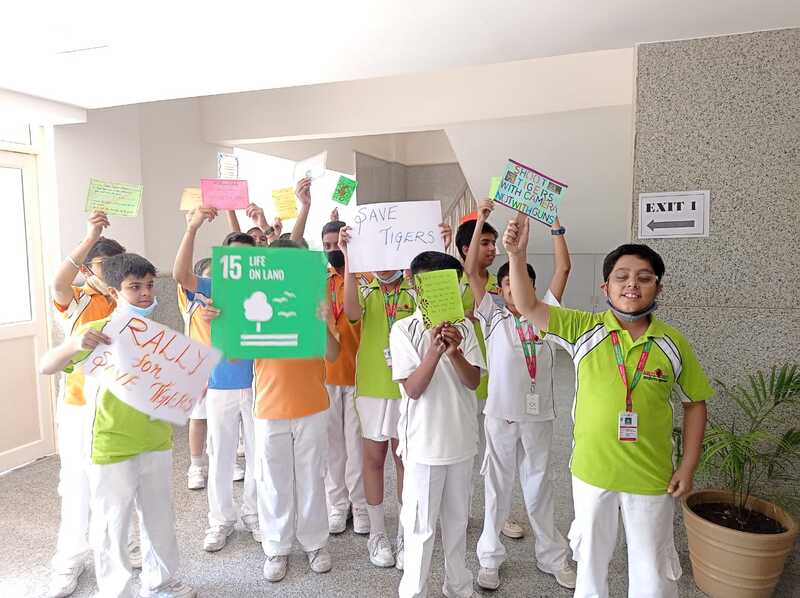
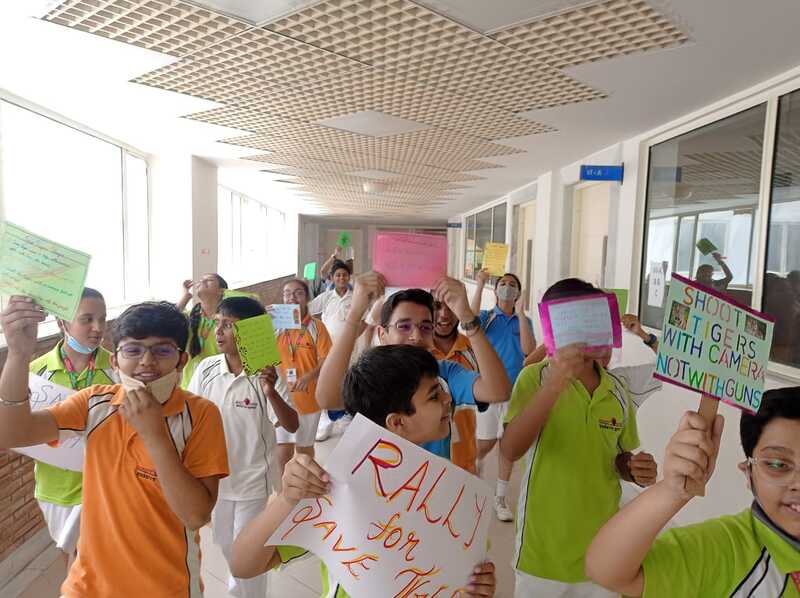
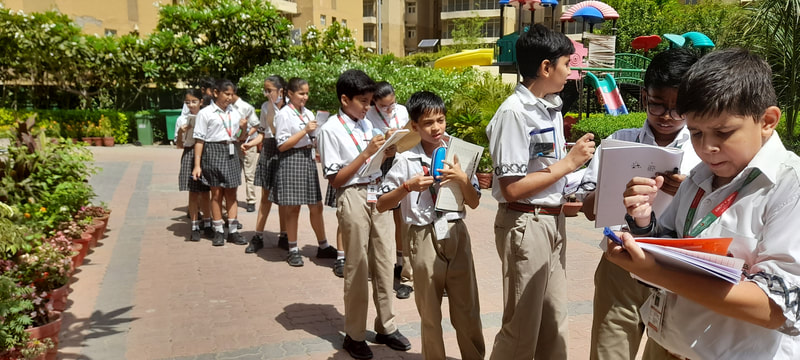
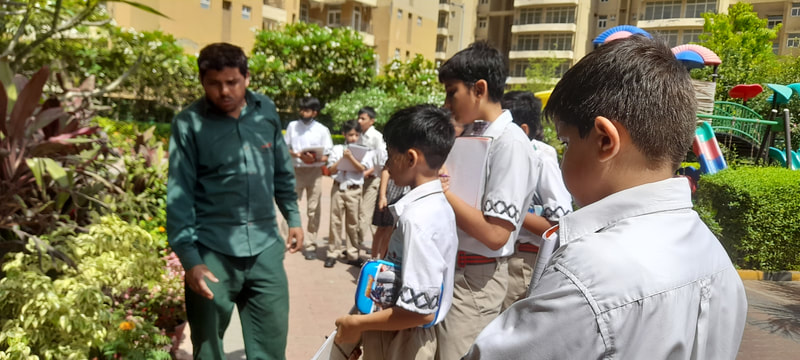
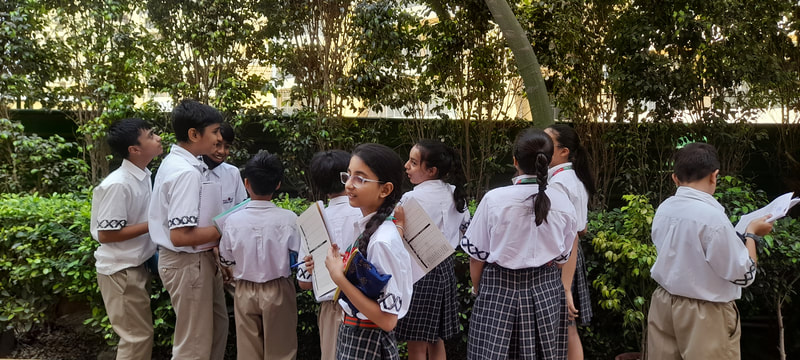

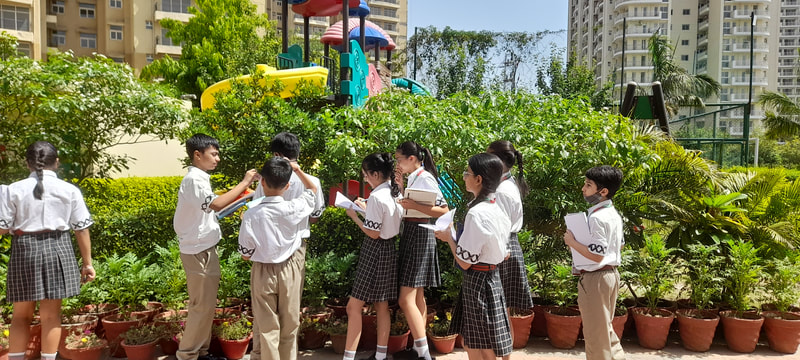
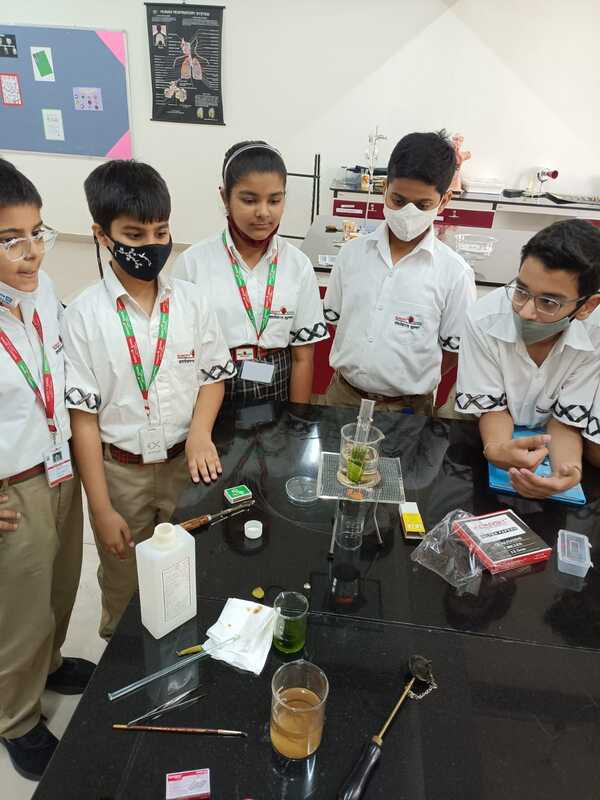
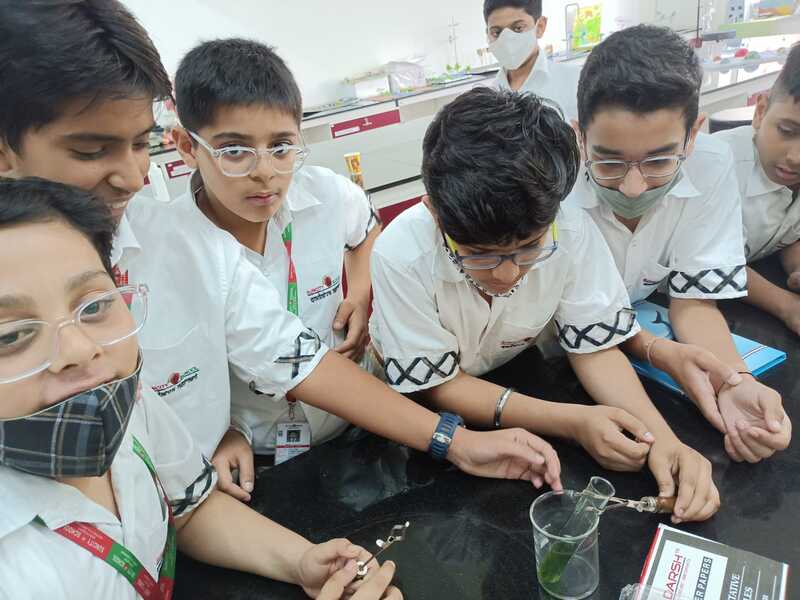
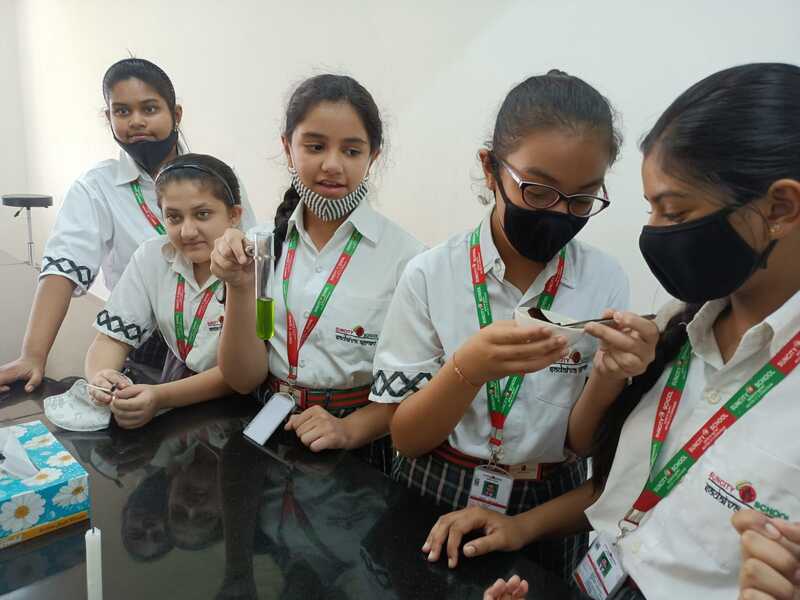
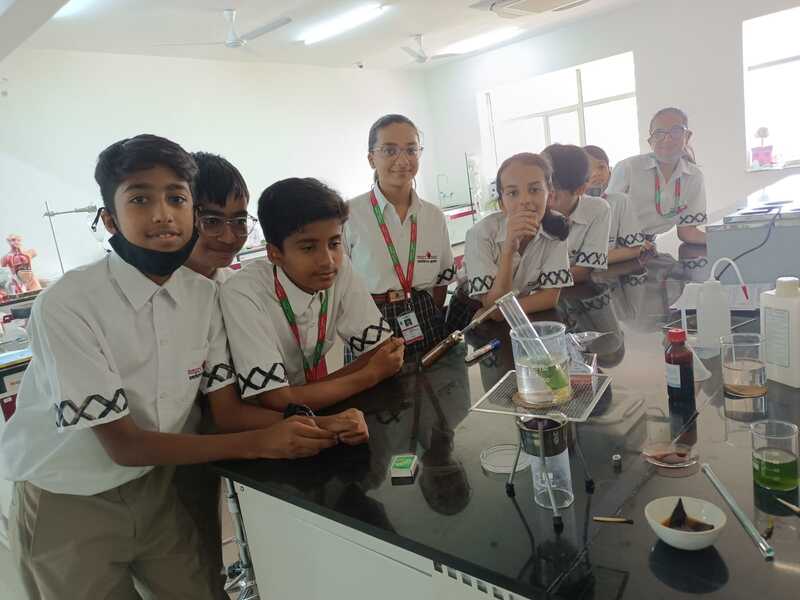
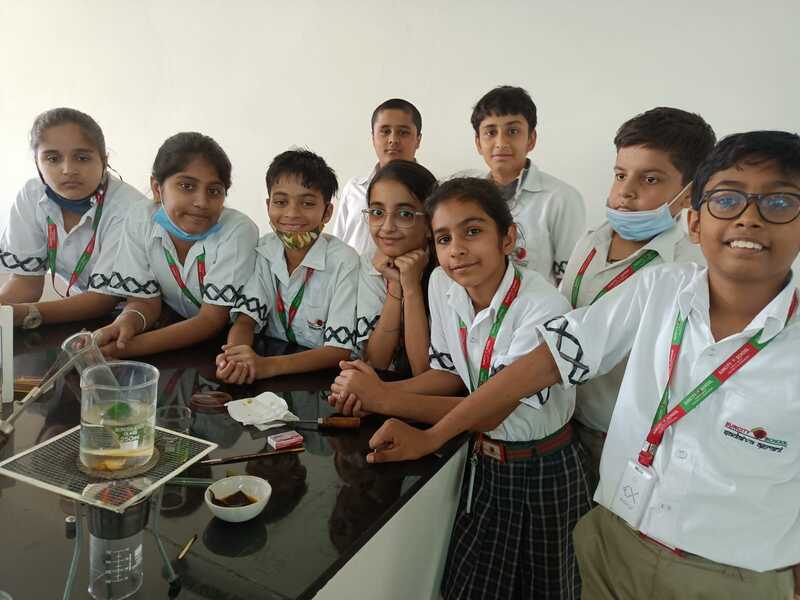
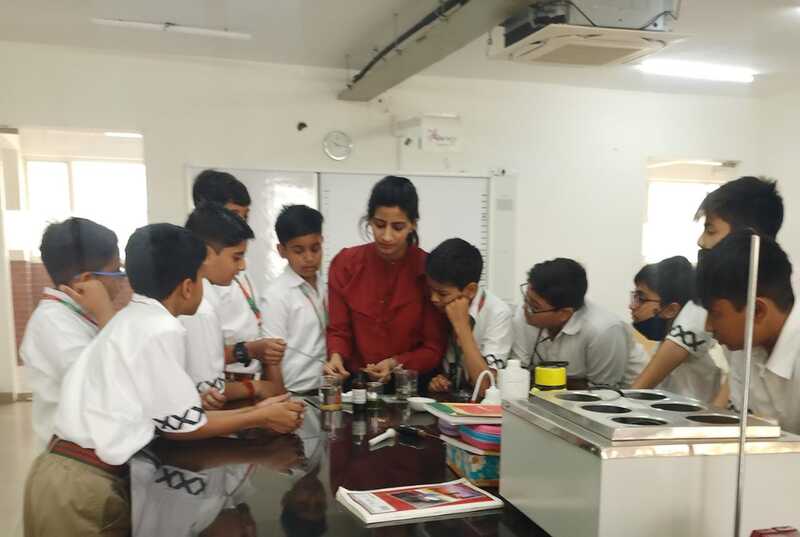
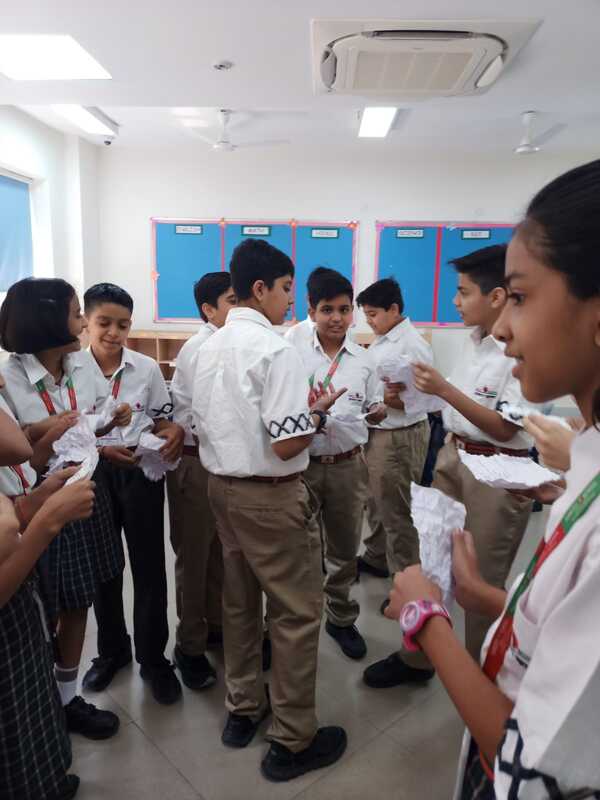
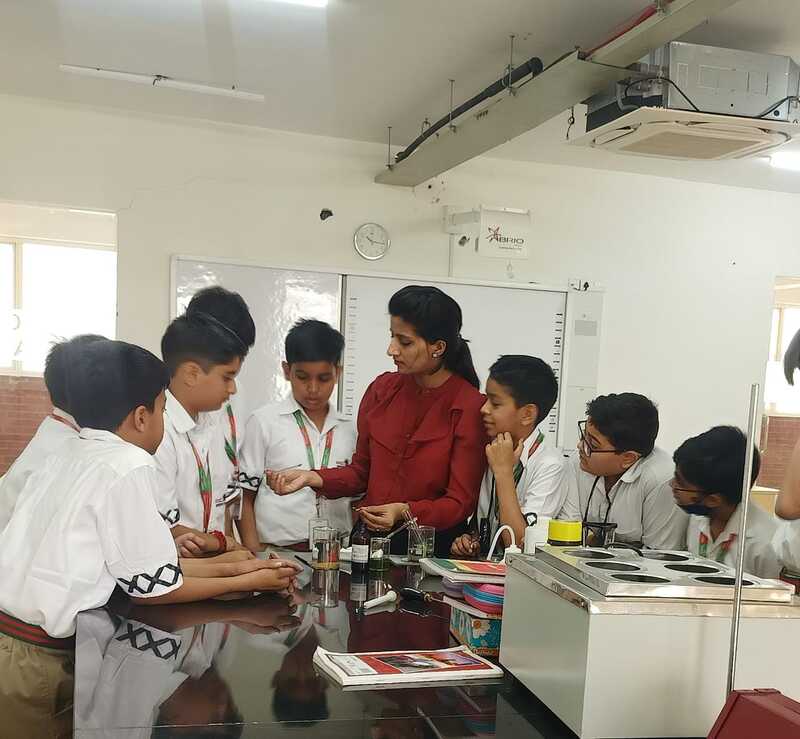
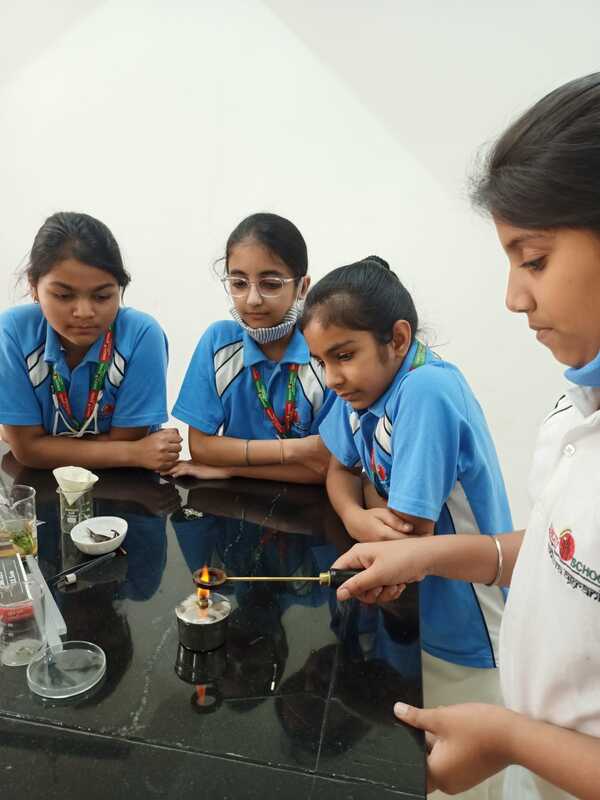
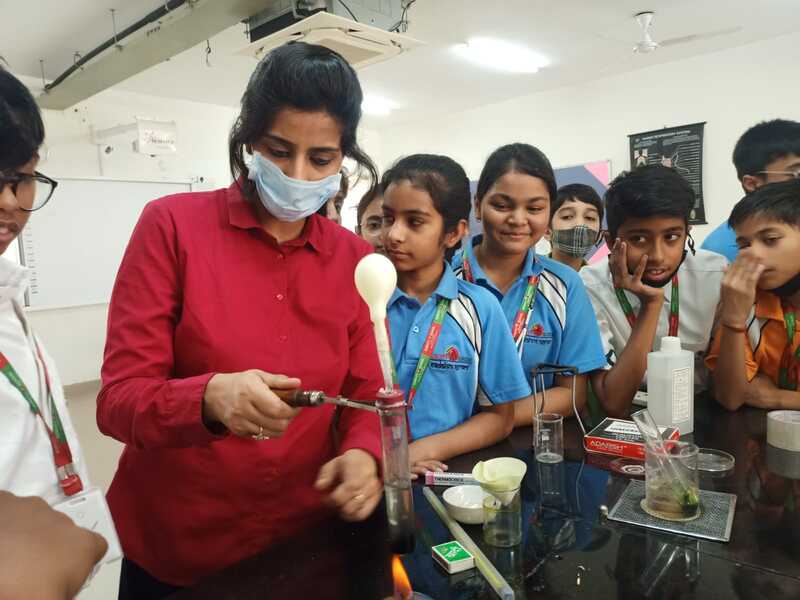
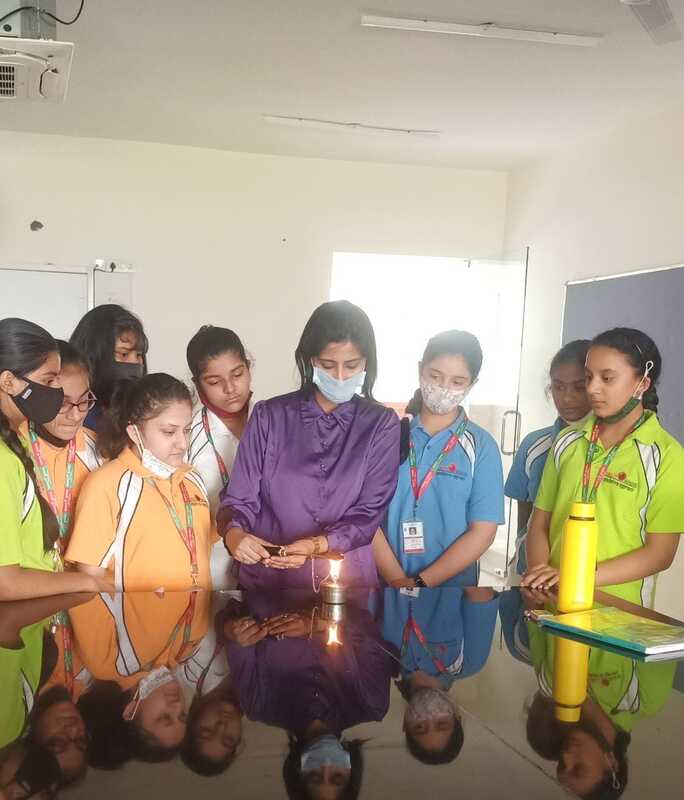
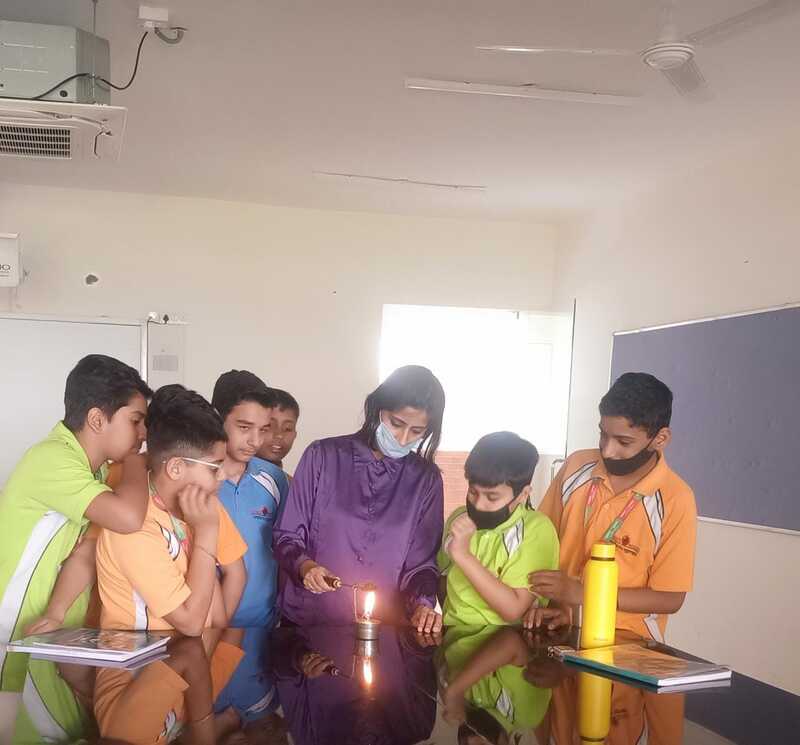
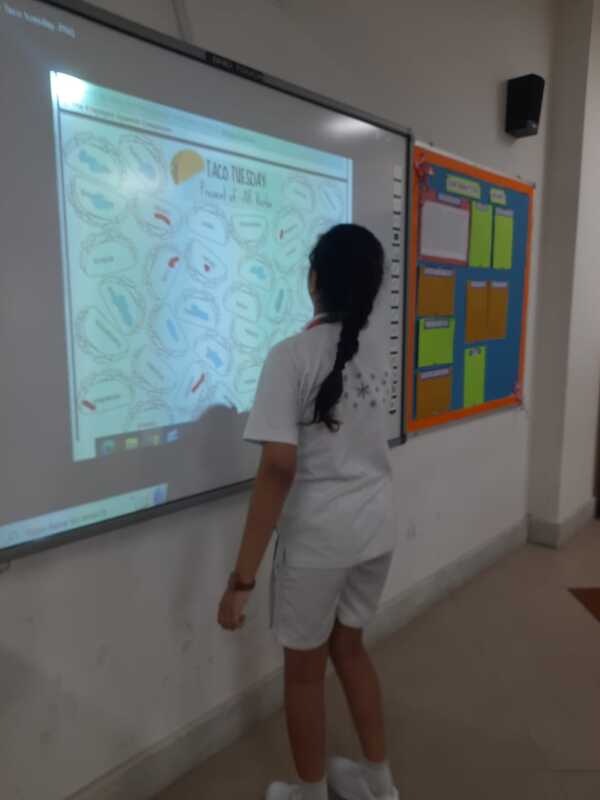
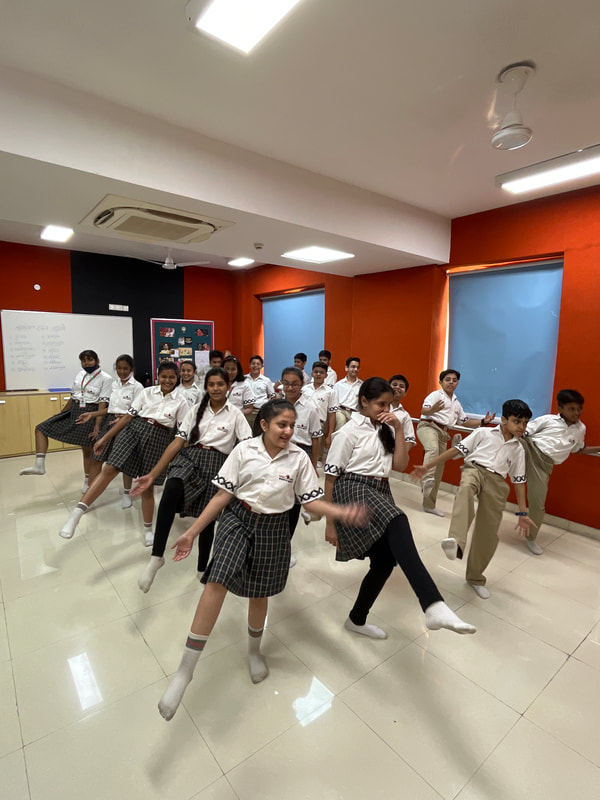
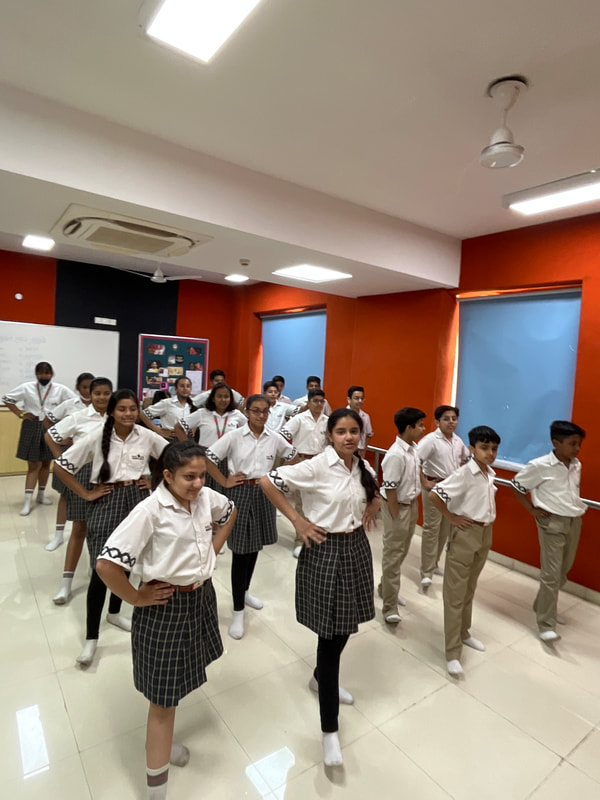
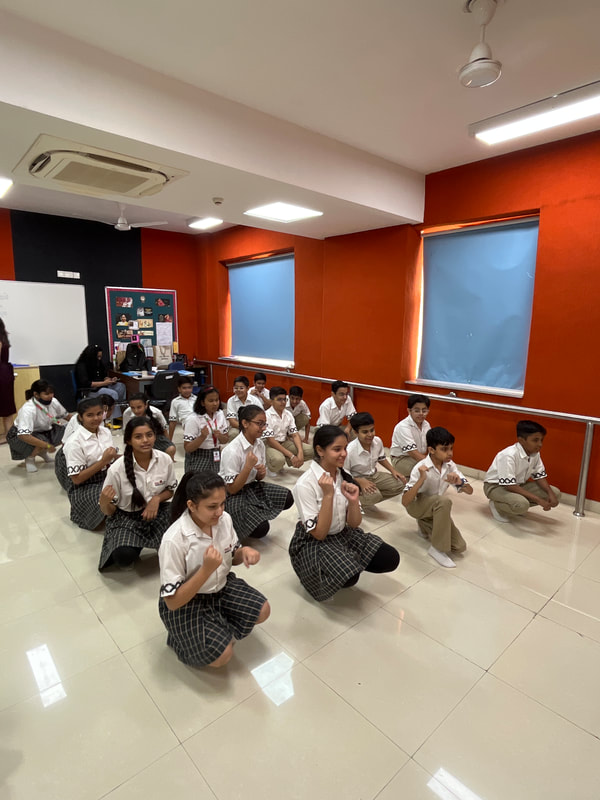
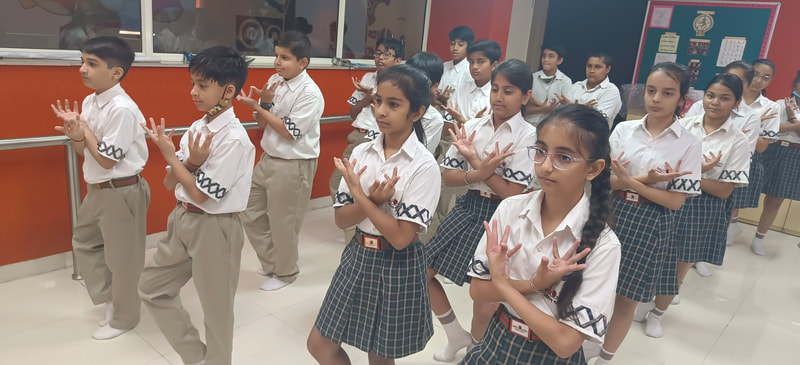
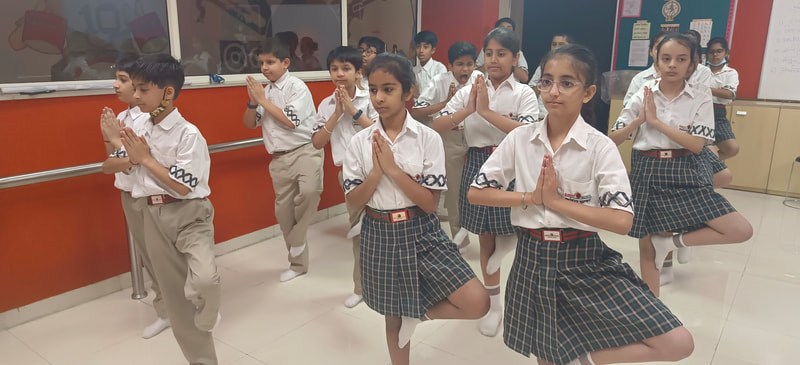
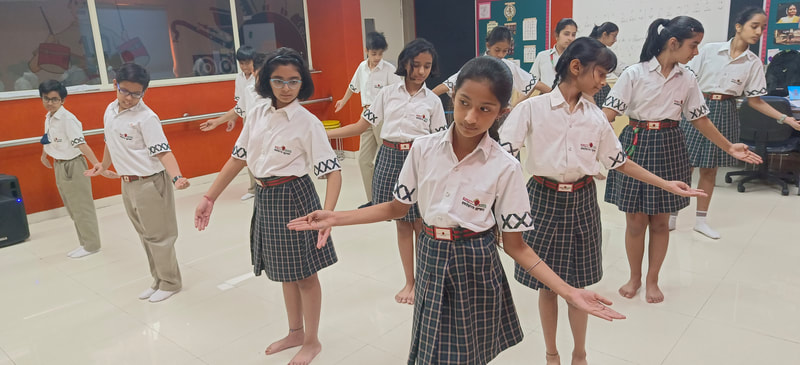
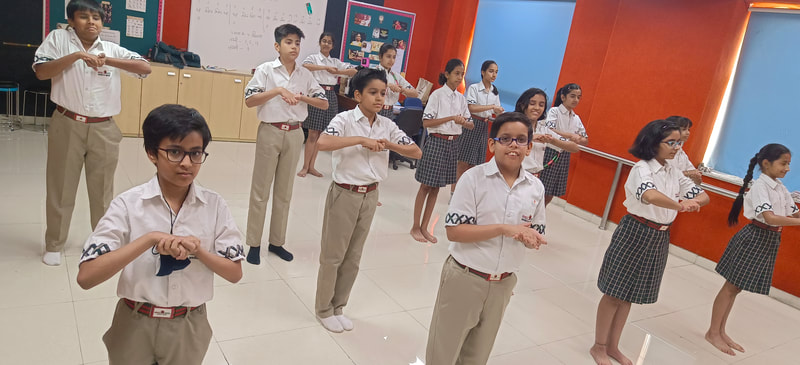
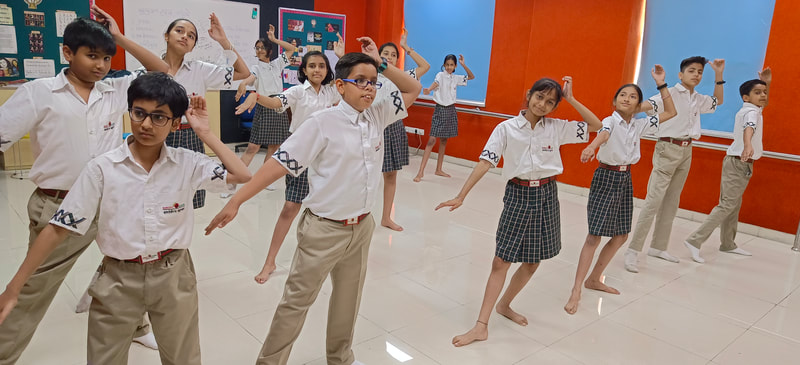
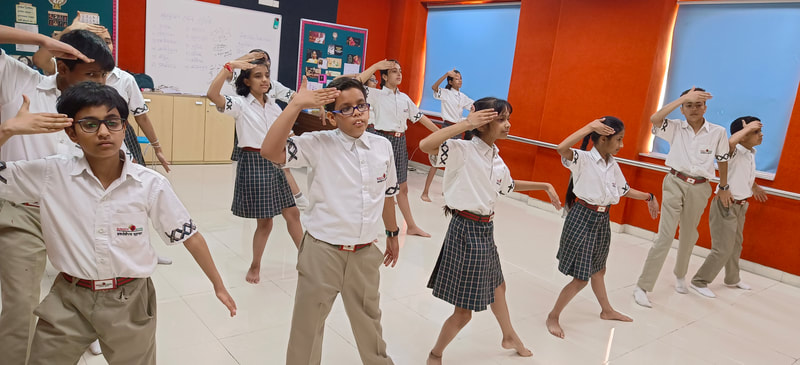
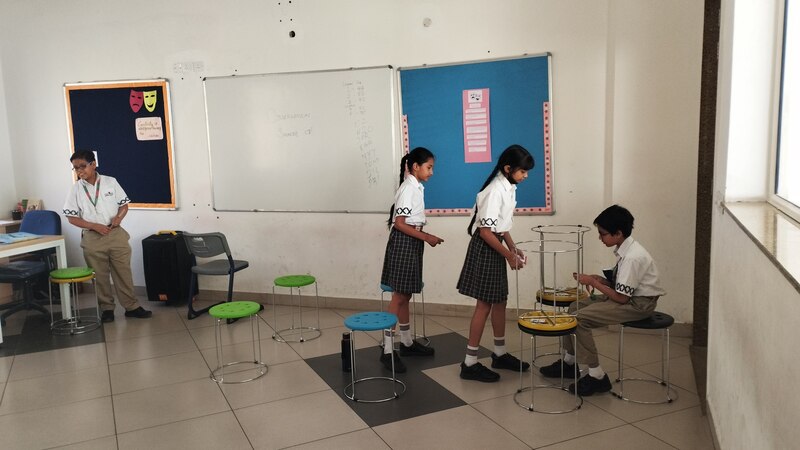
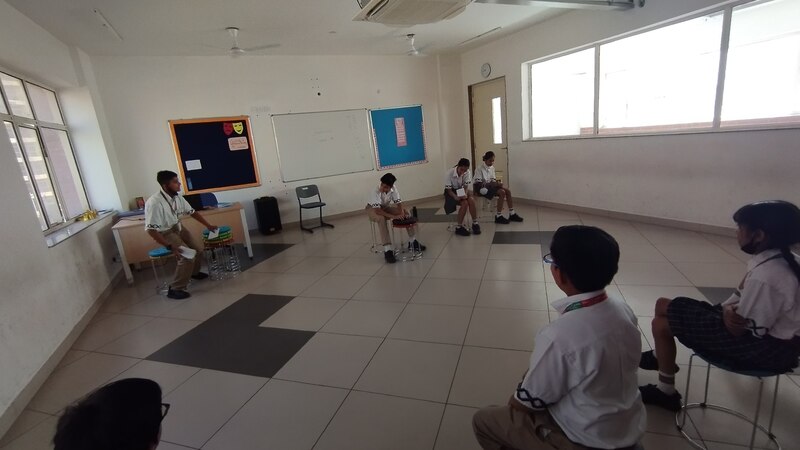
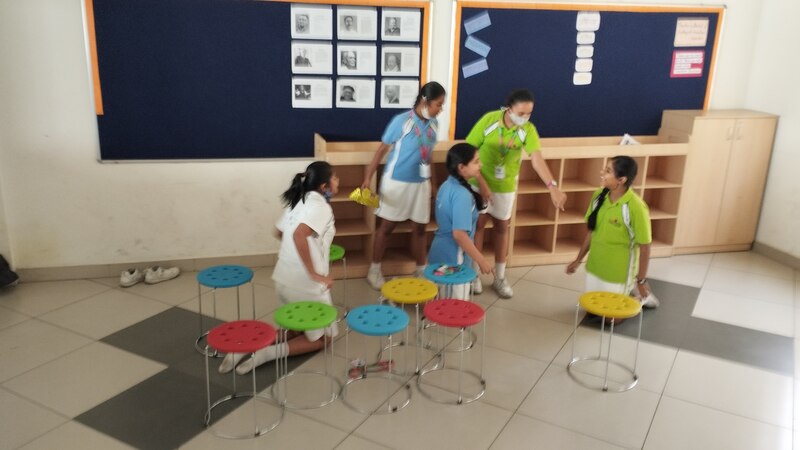
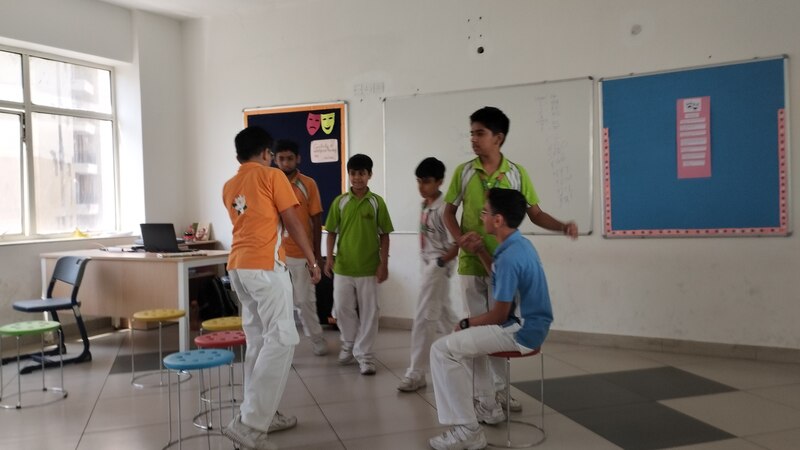
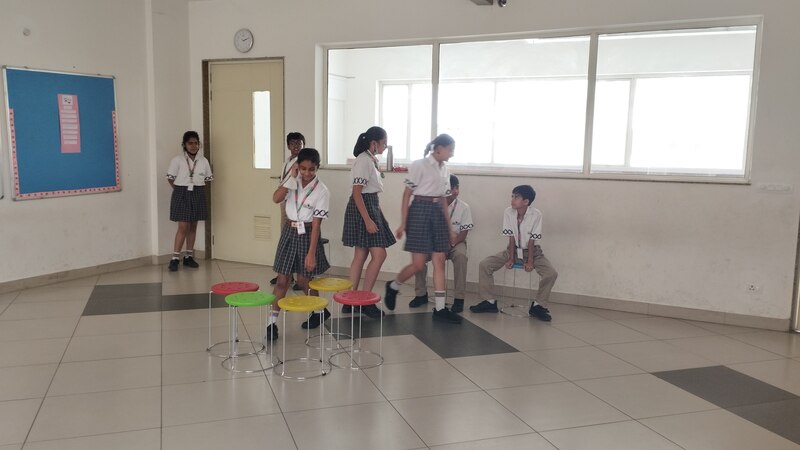
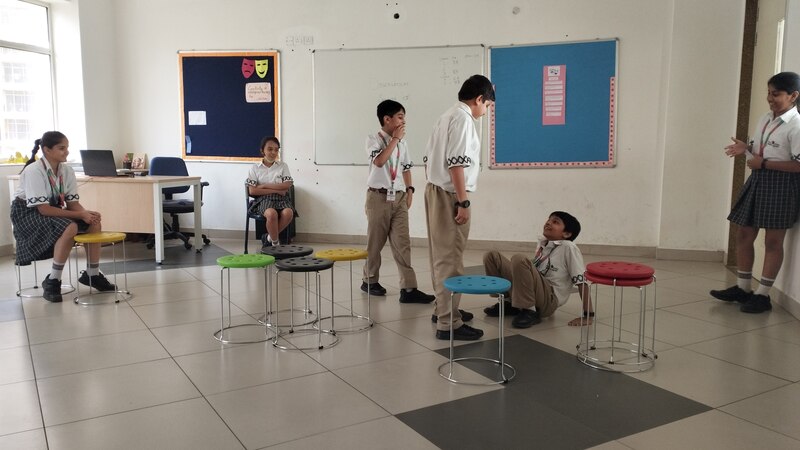
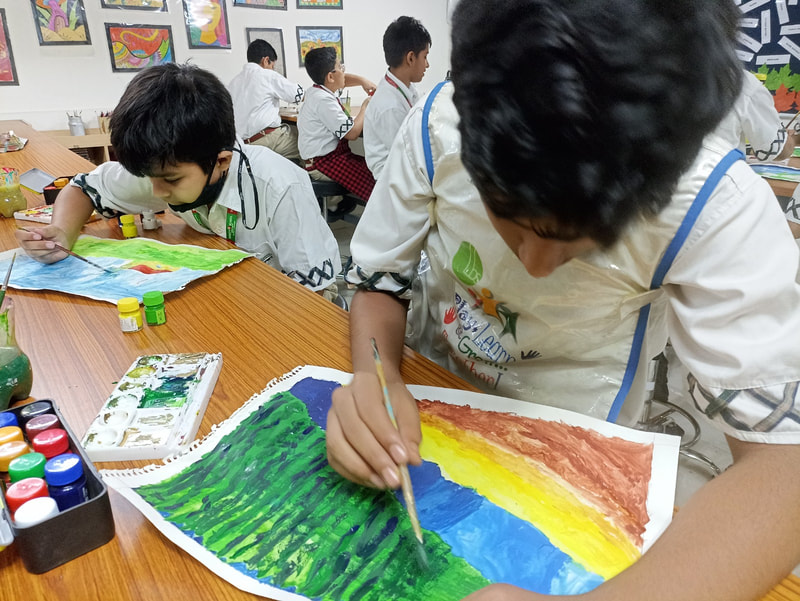
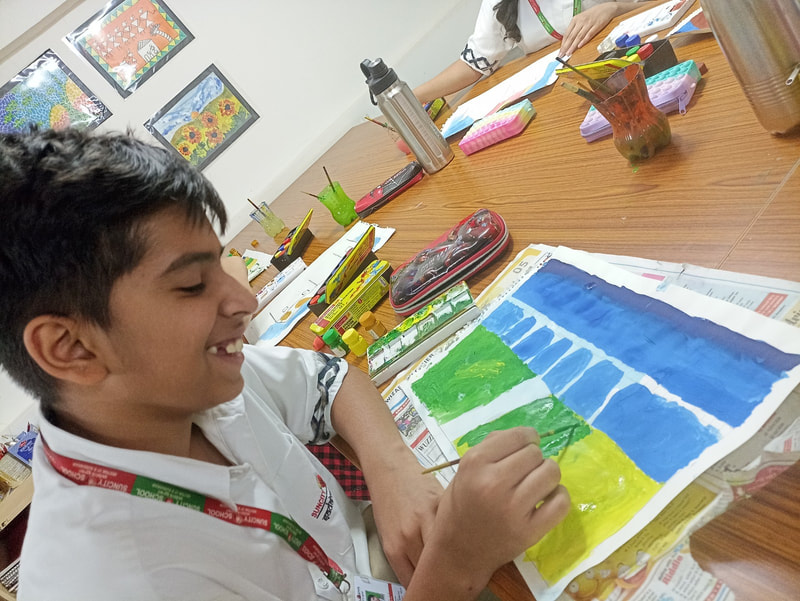
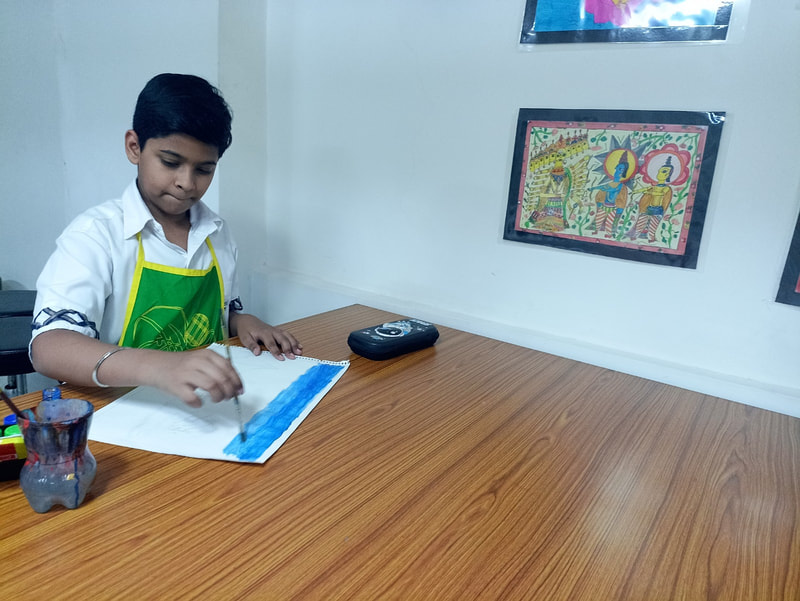
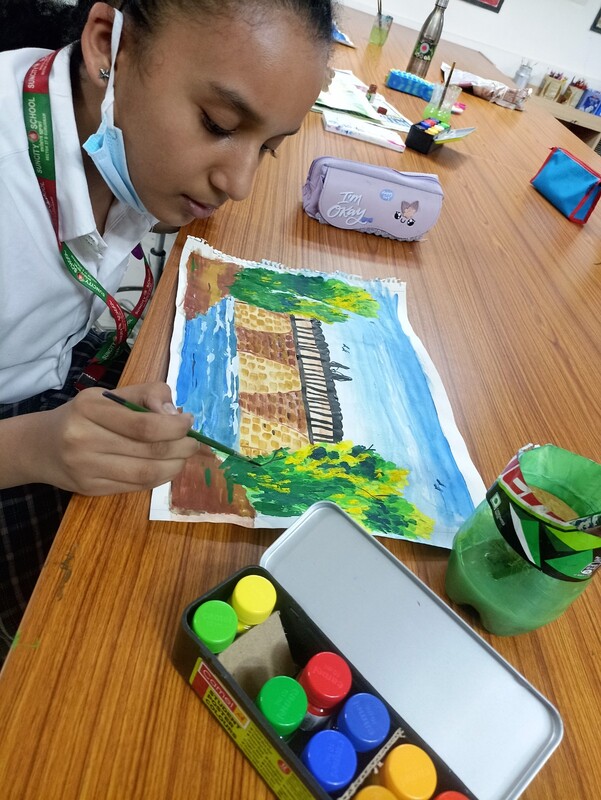
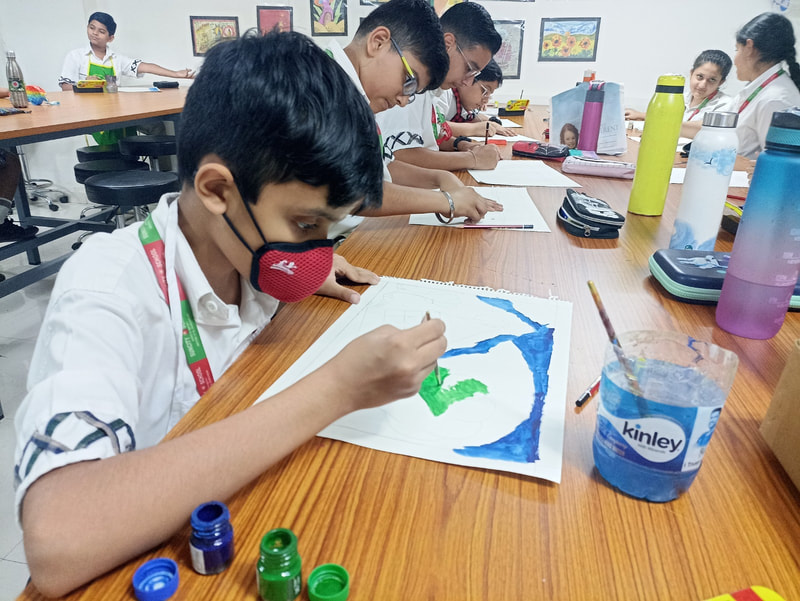
 RSS Feed
RSS Feed
